
Ready to visit a century of the best stadiums in the world?
Well here at FourFourTwo, we've spent every waking hour arguing about the greatest grounds on Earth – in the office, pubs, even next to fellow fans in stadium seats. This compendium originally began life eight whole years ago, actually – before some of these venues actually existed. We then came up with 100-5 on this list before passing the baton over to you: the FFT Twitter followers chose the order of the top four, as we handed the power over.
We judged on five criteria: history; atmosphere; capacity; architecture and environment; and that almost indefinable but viscerally obvious "wow factor". In short, how desperately would football fans want to go there?

THE BUCKET LIST Download a PDF of our stadium list
We've even put together this fantastic PDF of the complete tick-list, too – so you too can start cracking on with the ultimate match goer's pilgrimage.
You may not agree with every inclusion or preference, but we hope you will find plenty to enjoy and enthral in these features. It’s fair to say we’ve all learned something new and gained some potential destinations, pending agreement from partners and bank managers.
What we've come up with is a definitive bucket list of where to go on Planet Earth to lose yourself for 90 minutes (plus added time and in some cases, the event of extra-time and a shootout). From the best tickets in football to the prettiest, most awe-inspiring and simply unique experiences possible in the sport… here are the best stadiums on Earth.
The 100 best stadiums in the world, according to FourFourTwo
100. Kenilworth Road
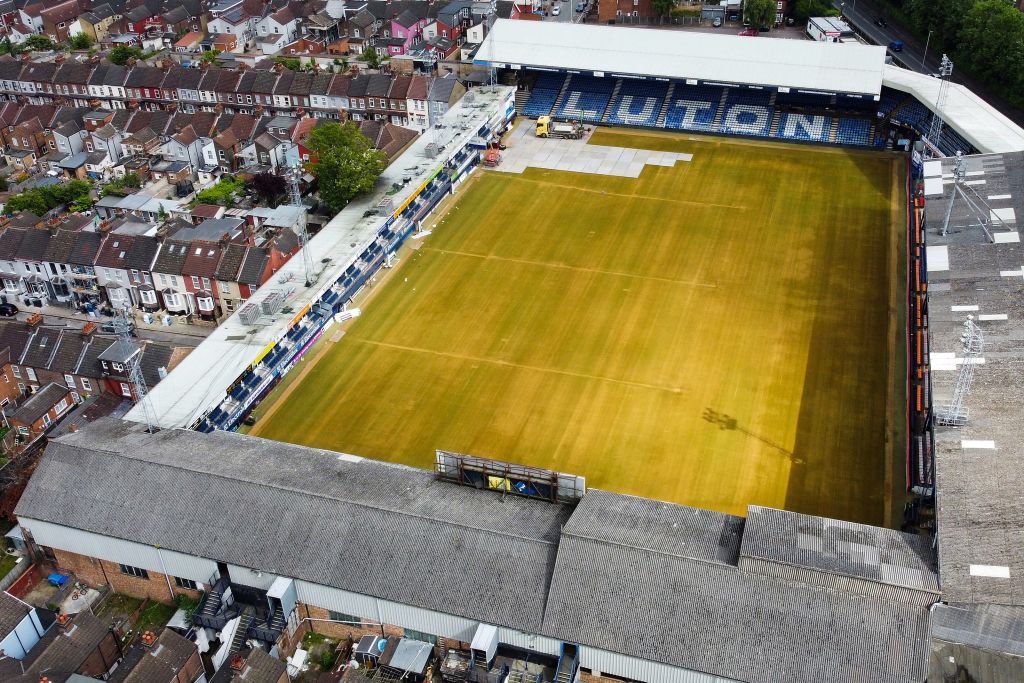
📍 Luton, England
🏠 1905
🏟 10,356
Luton Town have been looking for a new home since 1955 - but can’t seem to shake off their love of Kenilworth Road.
Rather famously, the decidedly quirky entrance to the Oak Stand takes away fans up and over neighbouring back gardens, though the executive boxes running along one touchline have all been removed following the club’s promotion to the Premier League. A mismatched concoction of converted terraces, unsighted seats and a jaunty stand running parallel to the road behind it. There’s plenty of character here - it’ll be a shame when the club moves to a new home in a few years' time. – RD
99. The Float
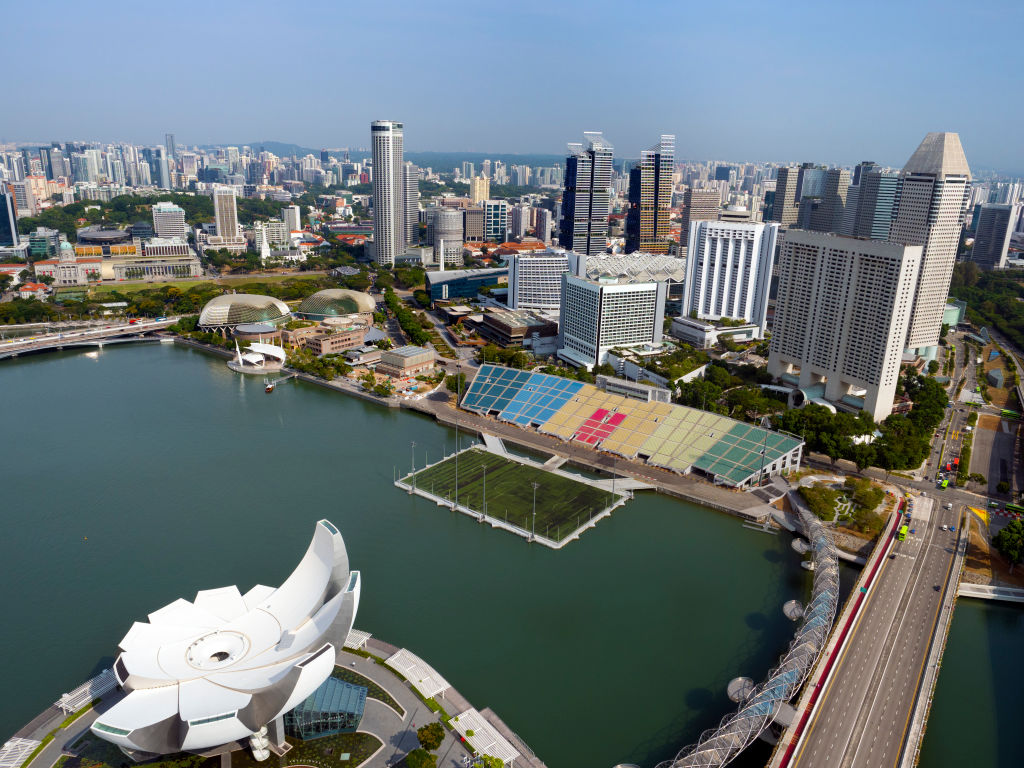
📍 Marina Bay, Singapore
🏠 2007
🏟 27,000
Consisting of a steel platform plonked in Singapore’s Marina Bay, The Float was initially intended as a temporary structure but plans have since started to make it permanent. While it hasn’t hosted any high-profile matches, The Float is truly one-of-a-kind, with 27,000 fans all sitting along the coastline. A multi-purpose outdoor venue, it regularly hosts the Singapore National Day Parade, as well as other sporting and musical events, too.
Fortunately, there is plenty of netting encompassing the pitch whenever a game is played, so don’t fret - footballs aren’t constantly being pinged into the surrounding water.
98. Etihad Stadium
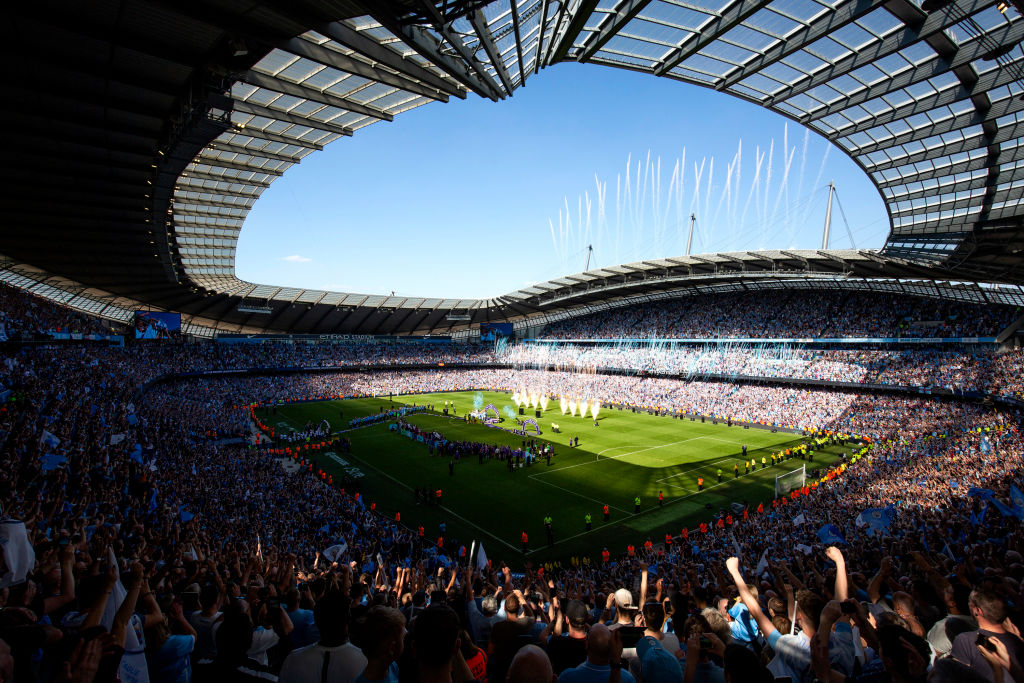
📍 Manchester, England
🏠 2004
🏟 55,000
There was a lot to love about that old Mancunian mainstay, Maine Road, but you won’t find too many Blues complaining about the Etihad – originally built for the 2002 Commonwealth Games before being given a natty refit for football.
It’s easy on the eye with its San Siro-style swirly entrance/exits and steel masts and cables. It has boosted City’s earning power through, at one point at least, standing as the Premier League’s third-largest ground: the South Stand’s revamp added another 7,000 seats. Most importantly of all, it’s at the heart of a huge regeneration for the entire area. – NM
97. Henningsvaer Stadion
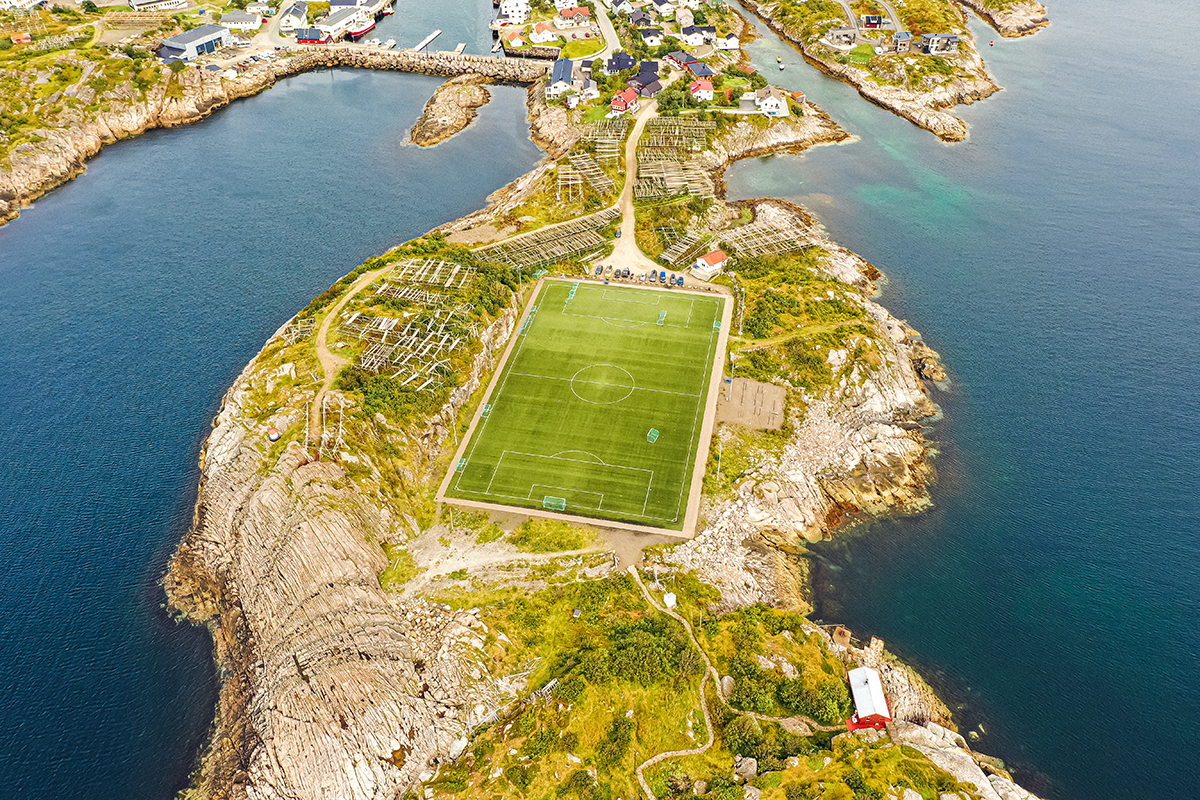
📍 Lofoten, Norway
🏠 2000
🏟 500
Seriously spectacular, the Henningsvaer Stadion was created by levelling the solid rocky layer it sits on, with the Norwegian sea just metres from the touchline. Located in the village of Lofoten Islands off the coast of northern Norway, there’d arguably be nowhere better in the world to play football.
While it has no stands and can only host amateur teams, the scenic views it offers are spectacular. You’d be forgiven for failing to keep your eye on the ball while playing here, that’s for sure. – RD
96. Stadium Australia
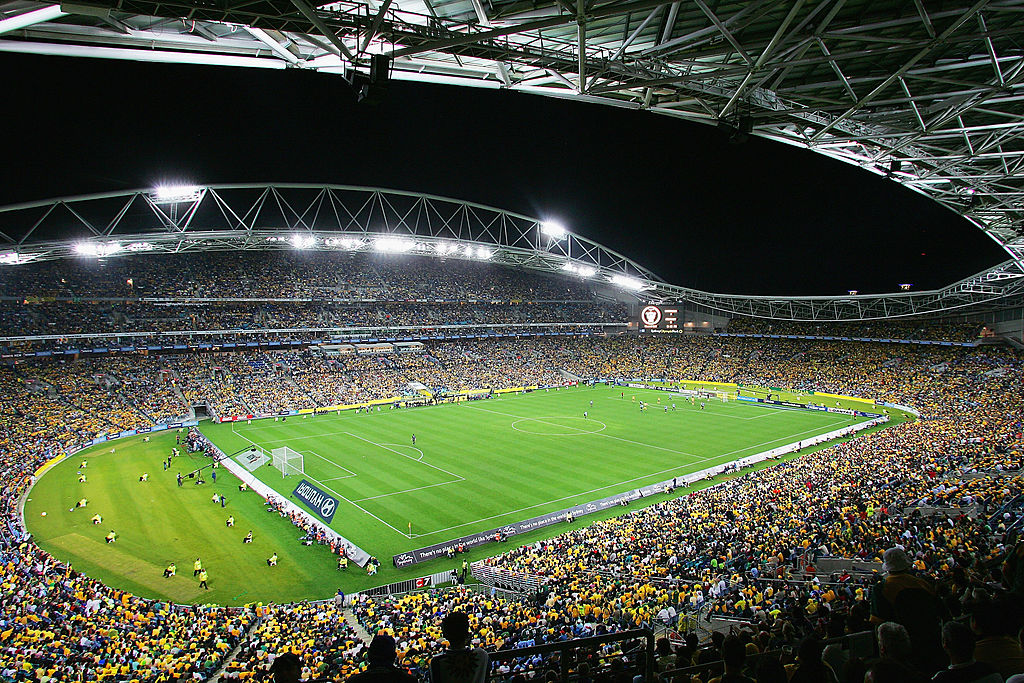
📍 Sydney, Australia
🏠 1996
🏟 82,5000
Built for the 2000 Sydney Olympics, Stadium Australia opened to much fanfare in March 1999 with a series of high-profile events. The city was awash with goodwill and pride at a stadium that held no fewer than 110,000 people and one that quickly set about posting new world-record crowds in rugby league and rugby union.
That pride reached unprecedented levels when Sydney hosted what were billed as “the best Olympics ever” by former International Olympic Committee boss Juan Antonio Samaranch. – JD
95. King Fahd Intrenational Stadium
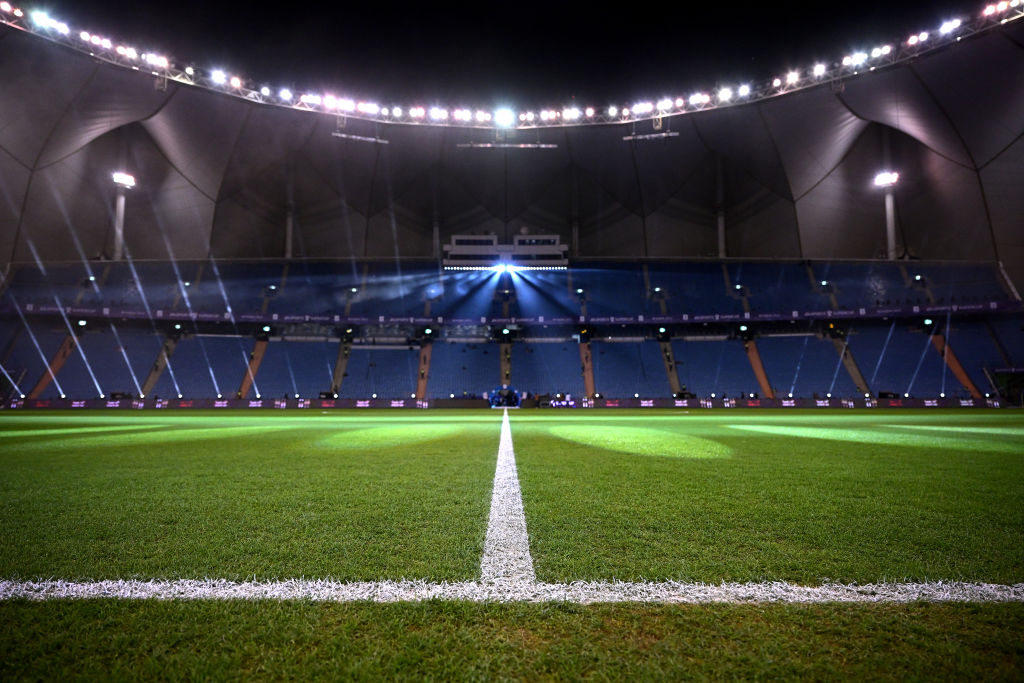
📍 Riyadh, Saudi Arabia
🏠 68,752
🏟 1982
Built in 1987 at a cost of a lazy US$510 million (£330m), the King Fahd features one of the most iconic roof structures in world football – a 47,000 square metre surface area, supported by 24 huge pylons that resembles a Bedouin tent and is ideal for keeping the desert heat at bay. Two years after its construction, the stadium was the venue for the FIFA World Youth Championships final and in 2014, it hosted the second leg of the Asian Champions League decider, where Australian side Western Sydney Wanderers won the title in a wild match featuring allegations of head-butting and spitting. Equally dramatically, it'll probably hold a World Cup final sooner rather than later, right? – SM
94. Mane Garrincha
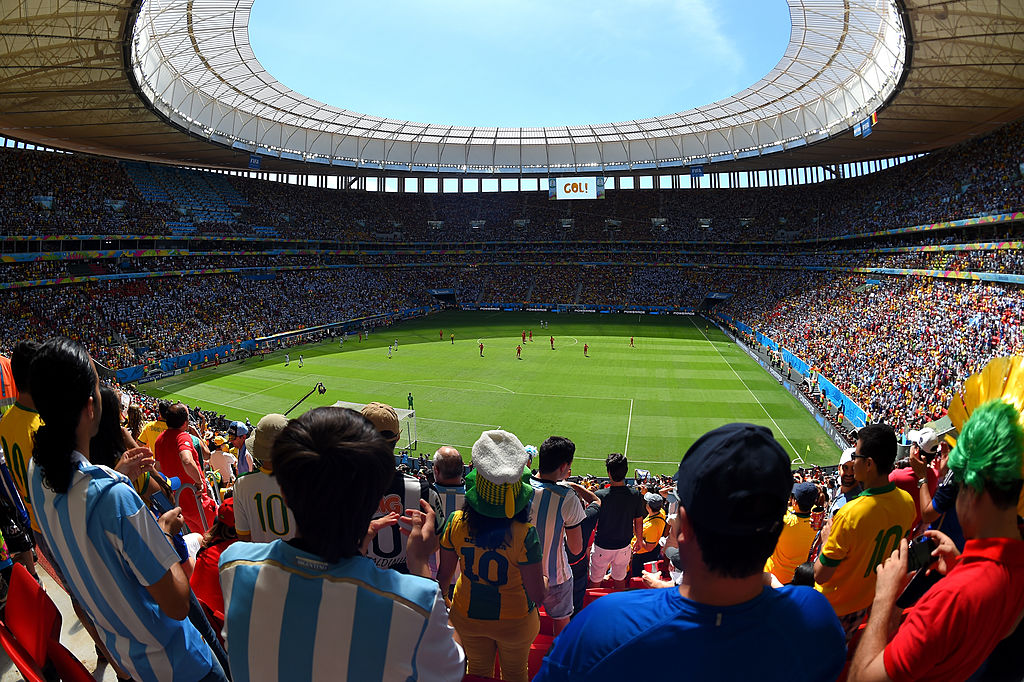
📍 Brasilia, Brazil
🏠 1974
🏟 72,788
Named after former Brazil great Garrincha, the stadium was originally called the Estádio Governador Hélio Prates da Silveira when it was first built, after Governor Hélio Prates da Silveira. When Garrincha passed away in 1983, aged just 49, officials renamed it in his honour.
Since then, it has undergone a complete reconstruction, with the stadium’s most characteristic feature being the 288 pillars that form the exterior and are holding up the circular roof. Renovated at a cost of $900m, it is the third-most expensive football stadium in the world, hosting seven 2014 World Cup games and several 2016 Olympic football matches, too. – RD
93. The Den
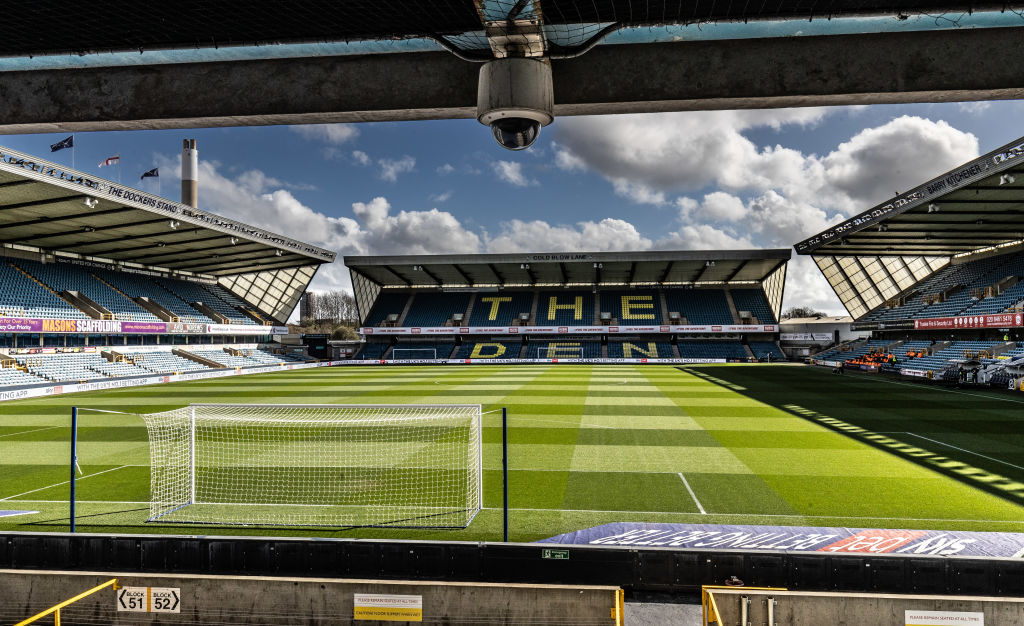
📍 Millwall, England
🏠 1993
🏟 20,146
The oldest of the ‘new’ all-seater stadiums built following the Taylor Report – and also the closest to central London - the Den has continued the infamous Millwall Roar synonymous with its predecessor. There’s a great atmosphere for the big games… particularly when West Ham or Leeds are in town.
Unlike other new grounds, though, none of the four corners of the ground are filled in, further heightening the unrivalled atmosphere throughout the 90 minutes. The Den also doubled up as the home ground for Sky One’s fictional team Harchester United in Sky One hit, Dream Team. – RD
92. Cape Town Stadium
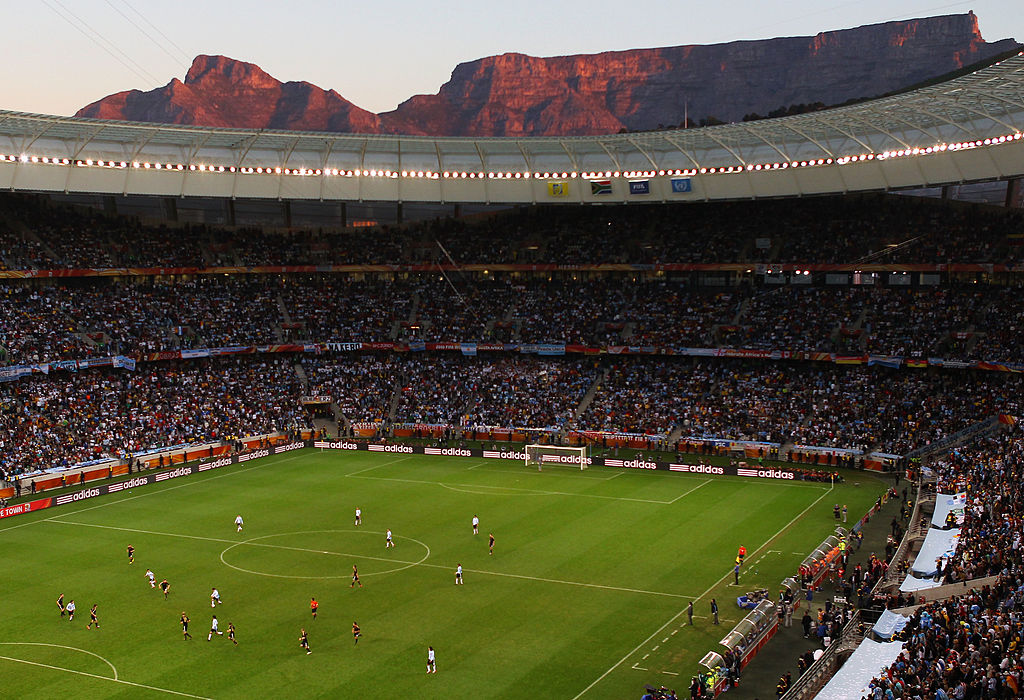
📍 Cape Town, South Africa
🏠 2007
🏟 57,367
Formerly known as Green Point Stadium, Cape Town’s impressive football ground was one of the venues created specifically for the 2010 World Cup. Indeed it hosted eight matches of varying quality during the tournament, from Holland’s pulsating 3-2 semi-final win over Uruguay through Portugal’s 7-0 hammering of North Korea to England’s drab 0-0 stalemate with Algeria.
The new arena now gives one of the world’s great cities a superb venue for top-class sports and music events, not too far from the popular V&A waterfront area and clearly visible from Table Mountain, which provides a stunning backdrop. Trouble is, like many a showpiece stadium, it needs to pay for itself thereafter; the local council tried to tempt Western Province rugby union team as anchor tenants, but after four years of talks the deal collapsed. – GM
91. Red Bull Arena
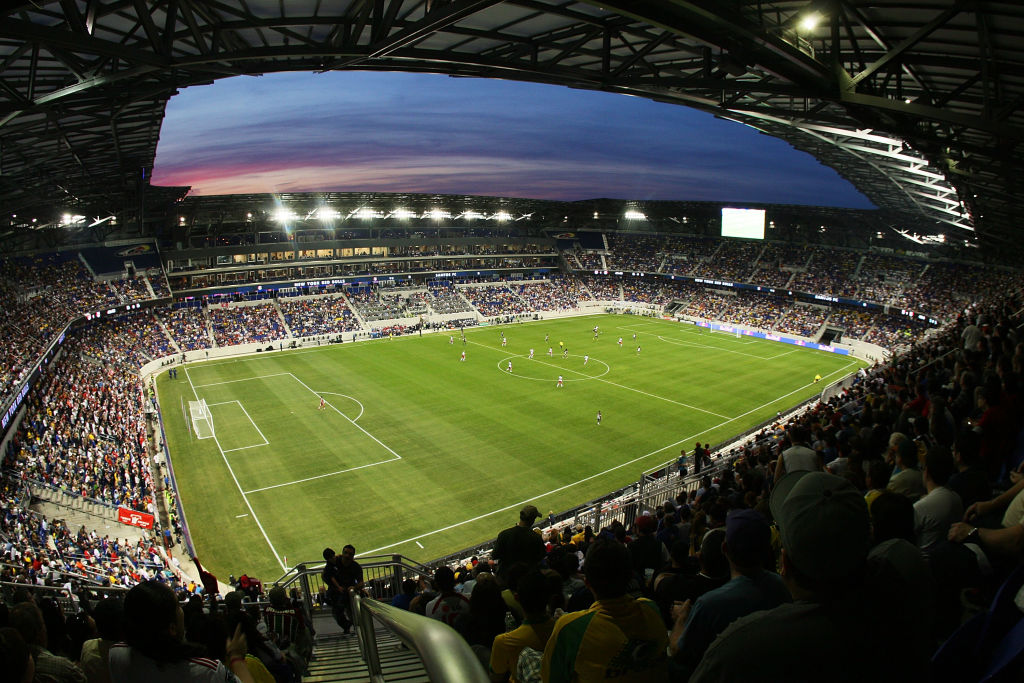
📍 Harrison, United States
🏠 2010
🏟 25,000
MLS really started to motor once teams opened soccer-specific stadiums rather than rattling round ill-fitting baseball or gridiron fields. The Red Bulls were one of the first to break ground, in 2006, although they had to wait another four years to officially move into their $200 million stadium in Harrison, New Jersey.
Not being in the heart of NYC hasn't stopped the club enticing fans out to the stadium and with the arrival of New York City FC, the Hudson River Derby is a brilliant spectacle to behold. – KH
90. Villa Park
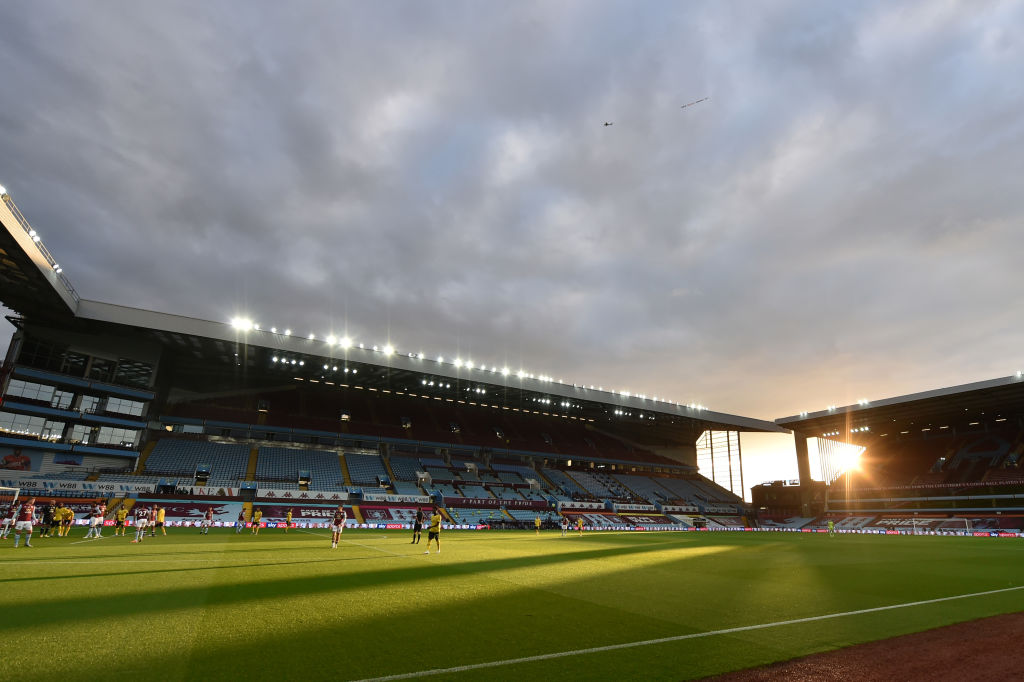
📍 Birmingham, England
🏠 1897
🏟 42,657
One of England’s grandest old grounds, Villa Park has hosted the Football League founder members since 1897. Its impressive facilities, and central location, have long rendered it a favourite venue for major events. It has been a home from home for England – tellingly, it was the Three Lions’ first port of call after the old Wembley was demolished, and when Wembley was unavailable for the 2012 Community Shield the FA happily relocated it to Birmingham. – GM
89. Toumba Stadium
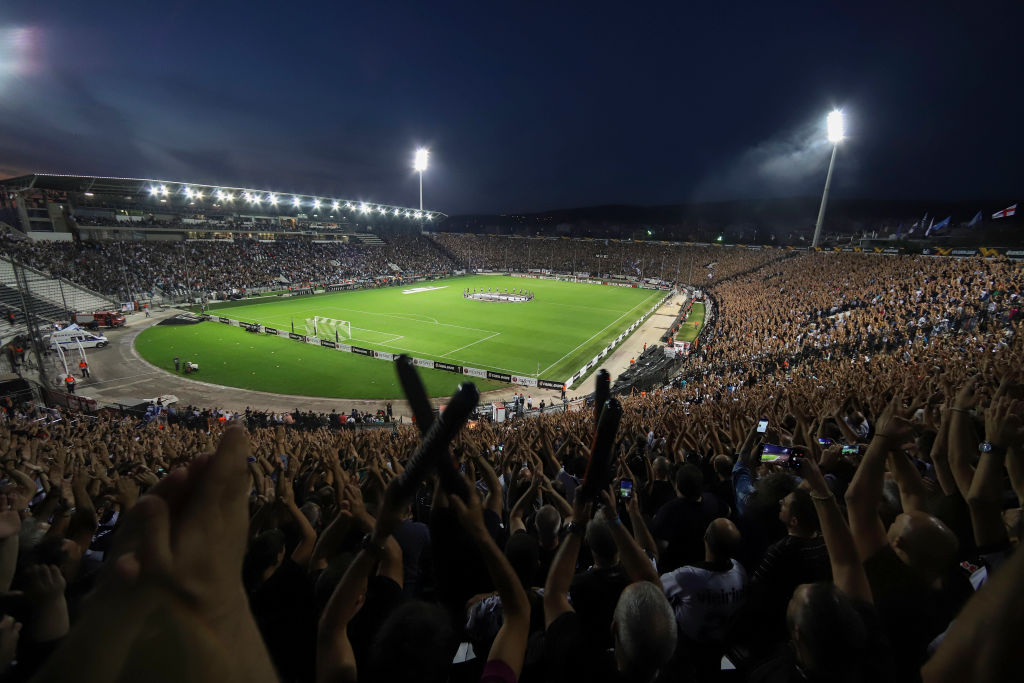
📍 Thessaloniki, Greece
🏠 1959
🏟 28,701
When you think of pyrotechnics on a European night, the Toumba Stadium will likely come to the forefront of your mind. Built by PAOK fans themselves in 1959, it has one of the most hostile atmospheres in world football once supporters get into their devastatingly passionate rhythm. Even more impressive, considering the lack of a roof keeping the noise in.
Dubbed ‘The Black Hell’, players even walk out of the tunnel to the tune of Hells Bells by AC/DC. It’s certainly more intimidating than the Z-Cars theme tune, that’s for sure. – RD
88. Chang Arena
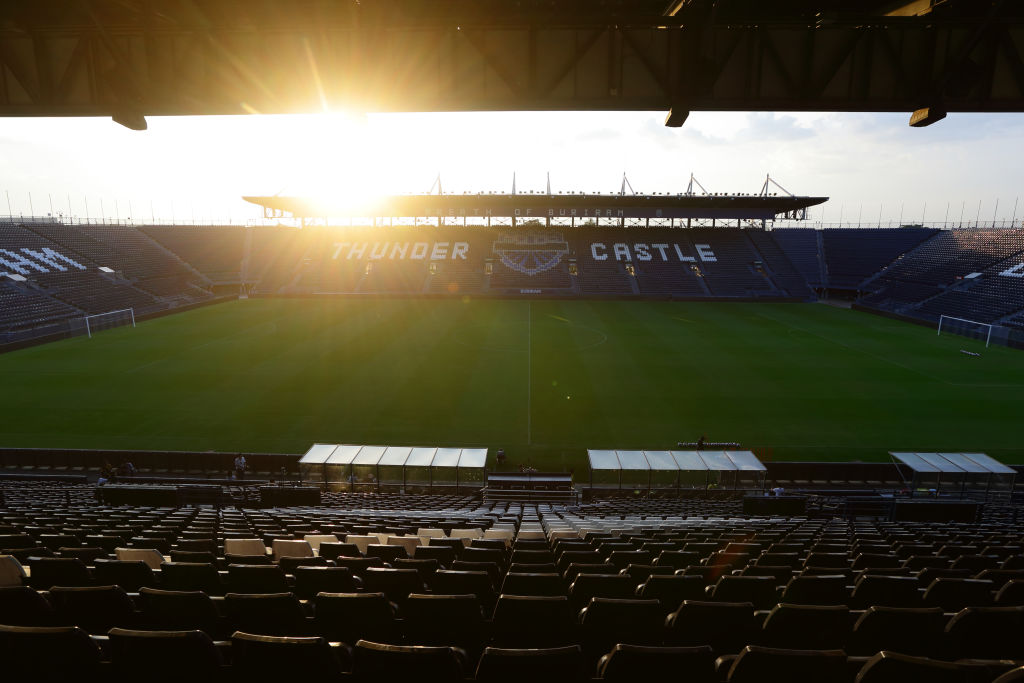
📍 Buriram, Thailand
🏠 2011
🏟 32,600
Buriram United’s home is small but perfectly formed. And rapidly formed – it holds the official world record for being the quickest FIFA-standard stadium ever built, taking just 256 days in 2010/11. It is the country’s third biggest stadium, behind Rajamangala Stadium in Bangkok and Thinnasulanon Stadium in Songkhla – but although it is barely half the capacity of the Rajamangala, it is the most popular and visited in Thailand because of its exciting atmosphere. – KT
87. RheinEnergieStadion
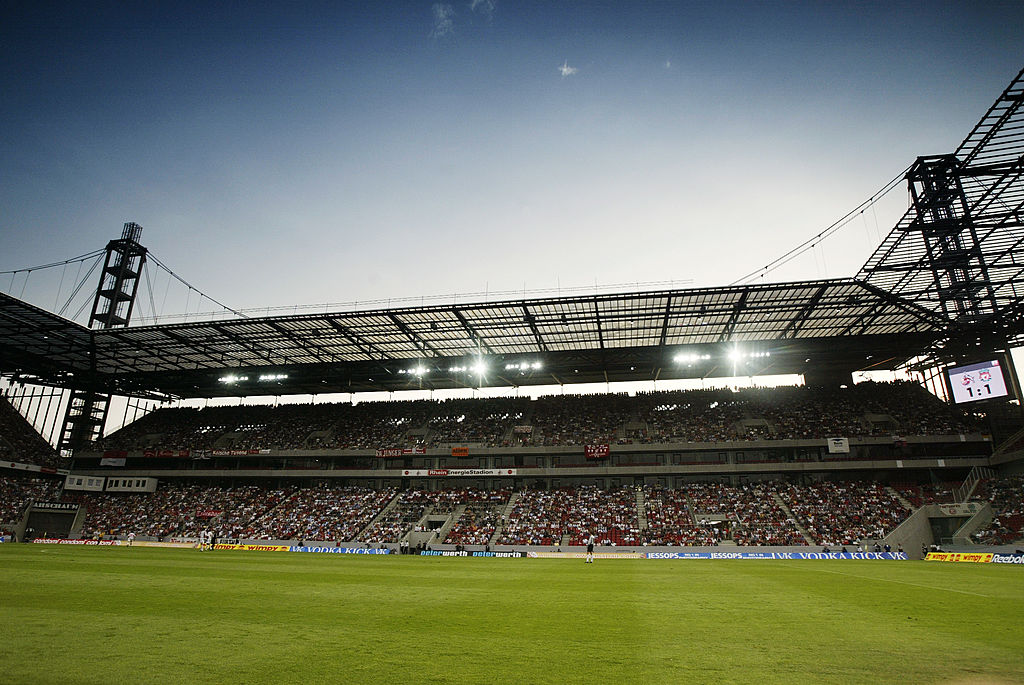
📍 Cologne, Germany
🏠 1923
🏟 50,000
It might have a name to make Cologne fans wince, but their neat RheinEnergieStadion – the third ground on the same patch of land – is one of Germany’s best. It could have been very different had the city got its way to host matches at the 1974 World Cup. Cologne’s bid was rubber-stamped with the promise of a spanking new 80,000-capacity Mungersdorfer Stadion, but spiralling costs – almost four times as much as expected – meant it was finished late.
That’s “late” as in November 1975, meaning poor Cologne didn’t get to welcome World Cup-goers until 2006 when their renovated 61,000-capacity ground was brought down to 50,000 and purpose-built for football. Fit for Joe Cole howitzers against Sweden, for example. – JB
86. Daegu Stadium
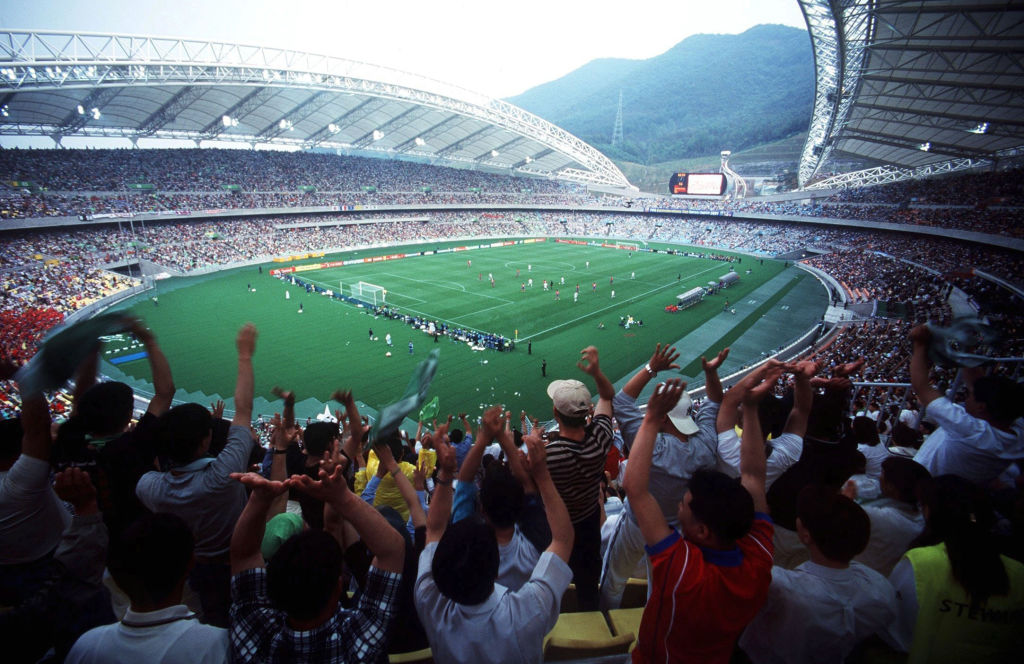
📍 Daegu, South Korea
🏠 2001
🏟 66,422
Daegu may be known locally for textiles and delicious apples, but in football terms the massive stadium out to the east of Korea’s third-largest city will likely be best remembered for one game.
In 2002, South Korea and Turkey enjoyed what was possibly the best third-place play-off ever, featuring two teams that still couldn't quite believe what had happened over the previous few weeks. In what was perhaps the friendliest atmosphere ever for an international match, Hakan Suker opened the scoring after just 11 seconds – the fastest goal in World Cup history – and Turkey ultimately won 3-2. It was a fittingly attractive fixture for a very eye-catching stadium, nicknamed Blue Arc. – JD
85. Tele2 Arena
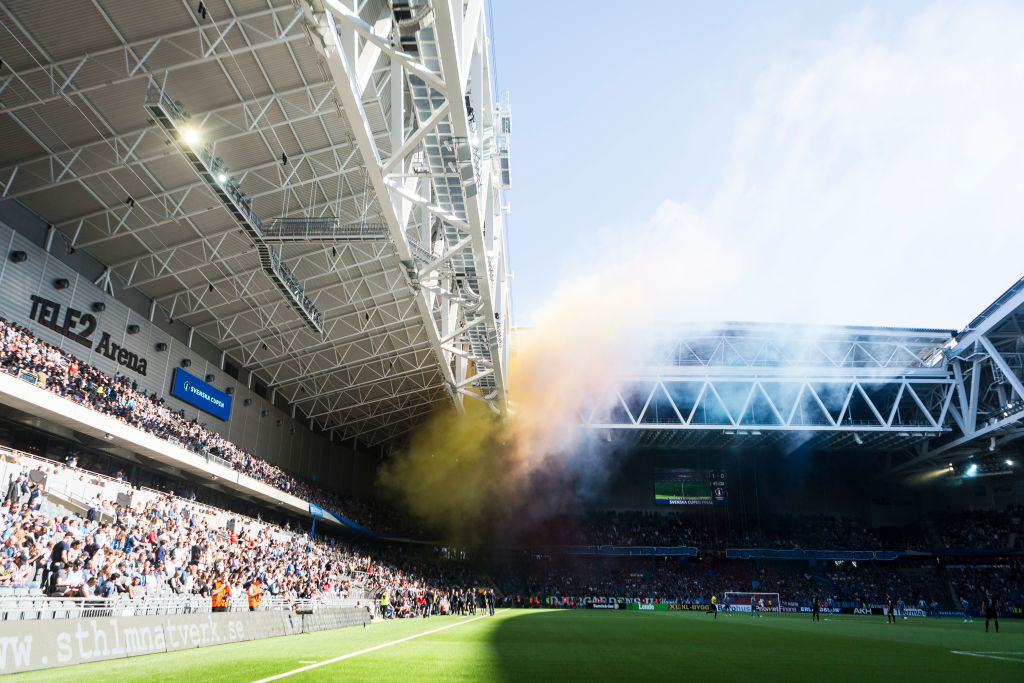
📍 Stockholm, Sweden
🏠 2013
🏟 30,000
Uninspiring name aside, the Tele2 Arena gets it right in just about every category. Built in the Hammarby heartlands of Sodermalm around the corner from their now demolished Söderstadion, it also hosts relocated city rivals Djurgarden – a fan squabble over whose game should open the stadium even led to bomb threats. Taking both sides, the transparent digital façade glows either green-and-white or blue/yellow/red, depending on which club is at home. – LR
84. City Ground
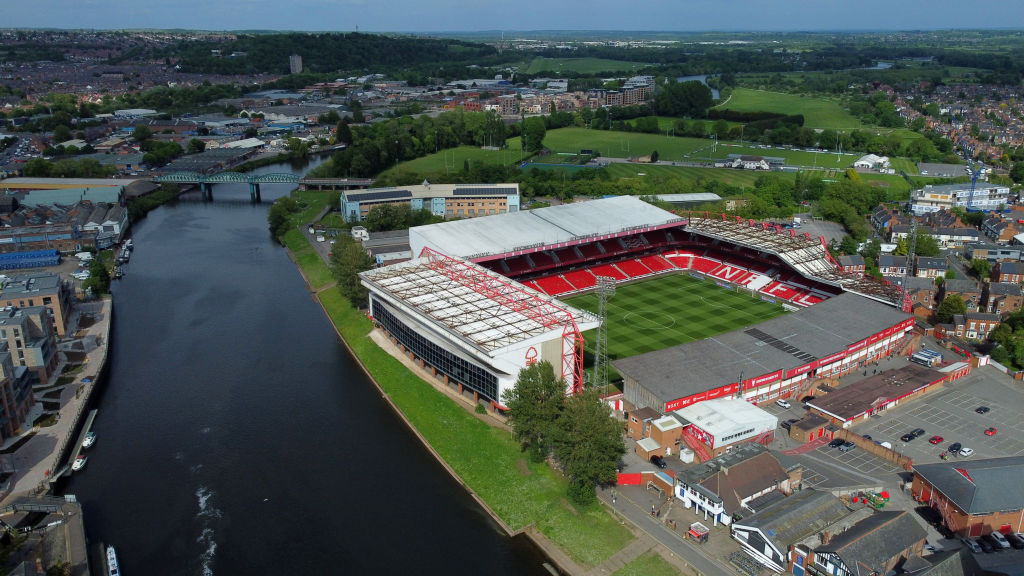
📍 Nottingham, England
🏠 1898
🏟 30,332
Built on the banks of the River Trent, the City Ground is simply unique. Brian Clough’s European success in 1979 and 1980 fittingly built the expensive stand that (after remodelling) bears his name, and stands proud looking across to the Peter Taylor Stand. Perhaps the best feature, though, is the Bridgford End’s bent roof, which keeps nearby houses in direct sunlight. You’d be hard pressed to find something as curious anywhere in the world, while the club’s iconic tree crest is beautifully etched into the seats.
History lingers heavy here, making its proposed redevelopment welcome news amid a potential relocation. – RD
83. Stade Pierre-Mauroy

📍 Lille, France
🏠 2012
🏟 50,186
The Stade Pierre-Mauroy is a stunning technical feat. Clad in an animated façade which projects videos and changes to Lille’s colours on matchday, the bubble-shaped structure bears a retractable roof which weighs 100 tonnes more than the Eiffel Tower. Unsurprisingly, all that tech comes at a cost. The construction required €324m of the metropolitan area’s funds, and Lille are forced to send €4.5m rent in their direction every season to use the facilities.
But for fans of a club who have battled for decades to get a decent, permanent home ground, being able to call a swanky modern ground home will feel worth the effort. – LR
82. Salt Lake Stadium
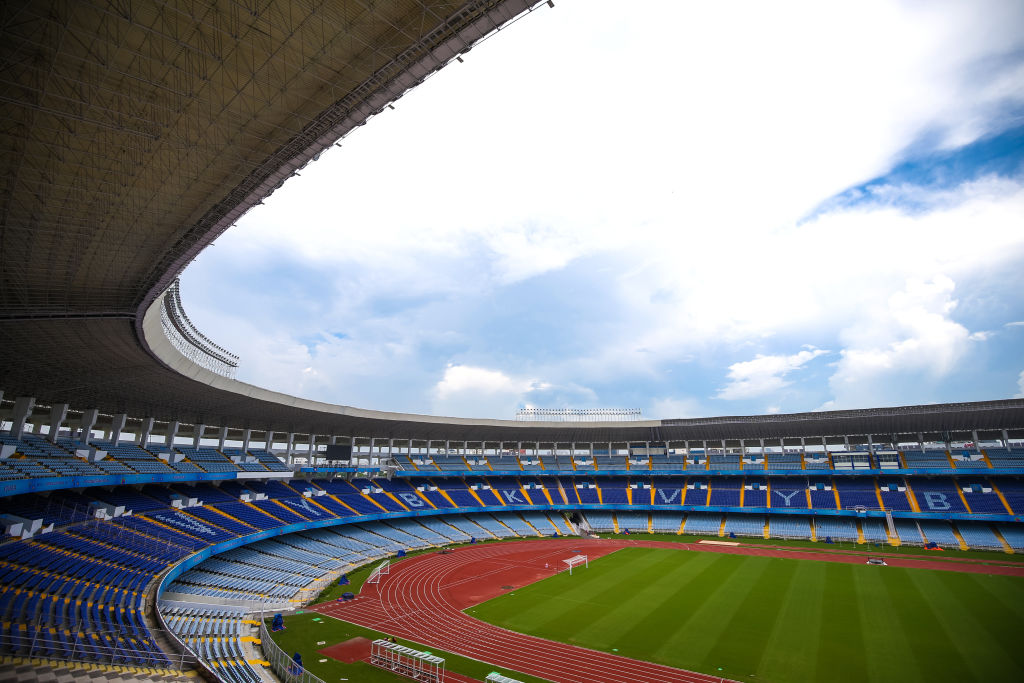
📍 Kolkata, India
🏠 1984
🏟 85,000
The largest football stadium in India, Salt Lake often attracts huge numbers to the Kolkata derby between Mohun Bagan and East Bengal. When the sides met in the 1997 Federation Cup semi-final, a record 131,000 people crammed in to see Indian legend Baichung Bhutia bag a hat-trick as East Bengal won 4-1 – and as recently as 2008, there were 120,000 there to see Oliver Khan’s farewell as Bayern Munich beat Mohun Bagan 3-0. – VV
81. Campo de Futbol de Vallecas
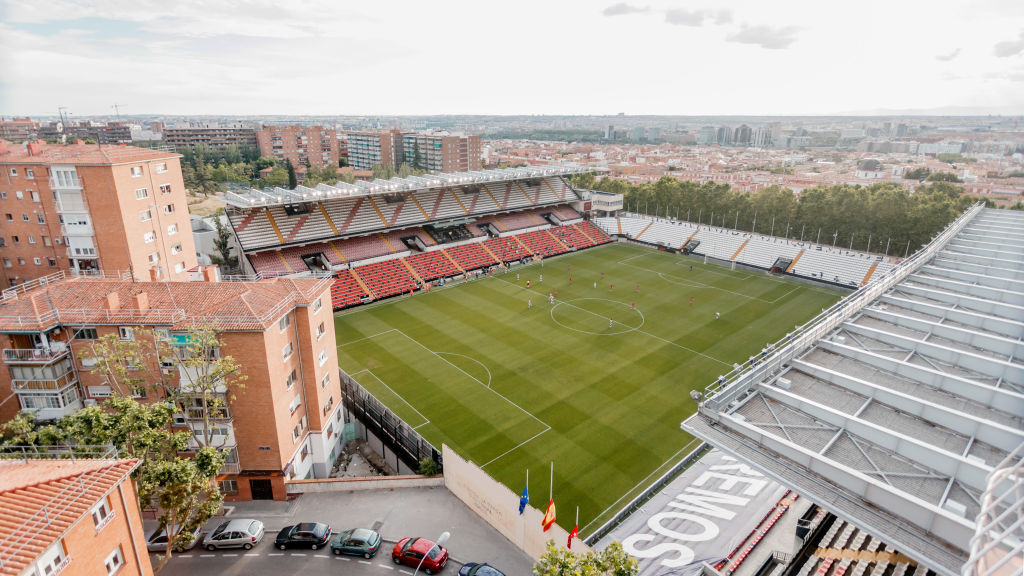
📍 Madrid, Spain
🏠 1976
🏟 14,708
There’s something different about Vallecas; whisper it, something almost British. Nestled in the heart of working-class Madrid, just to the south-east of the city centre, Rayo Vallecano’s home is the team of the people. The ground is so cramped that the southern end has no terrace and backs immediately onto a number of high-rise flats which overlook the pitch, offering quite the view of proceedings come matchday. The noise here, though, is something else. If you want the real Madrid, visceral and authentic, then this is the stadium for you. – AM
80. Mercedes-Benz Stadium
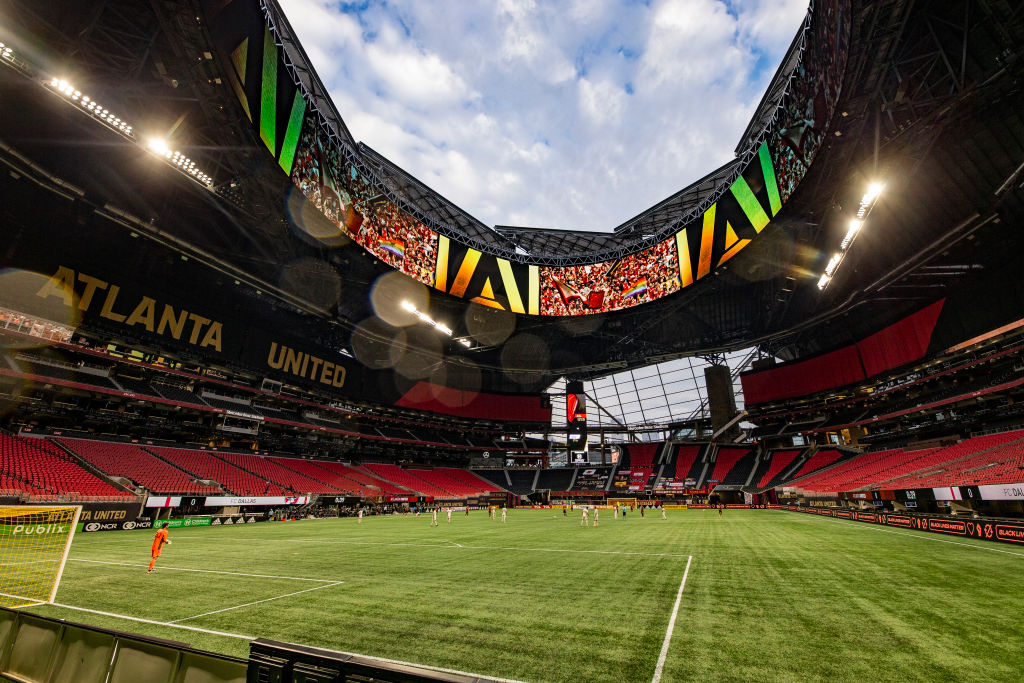
📍 Atlanta, United States
🏠 2017
🏟 42,500
Pep Guardiola would like this one. The Mercedes-Benz arena is made of individual triangle panels: it's as visually stunning as tiki-taka in full flow but you just wait to see it expand or contract to open or close the roof. It's a simply astounding feat of engineering – seriously, watch.
Despite being best associated with the NFL – it hosted a particularly dull Super Bowl which not only turned out to be the lowest-scoring, it had Maroon 5 play at half-time – the Benz is is a proper football ground, too. It's set to host games at the 2026 World Cup – and Atlanta United share it with the Falcons. The first English teams to play there, though? Brighton and Brentford this July in the Premier League Summer Series. – MW
79. Deutsche Bank Park
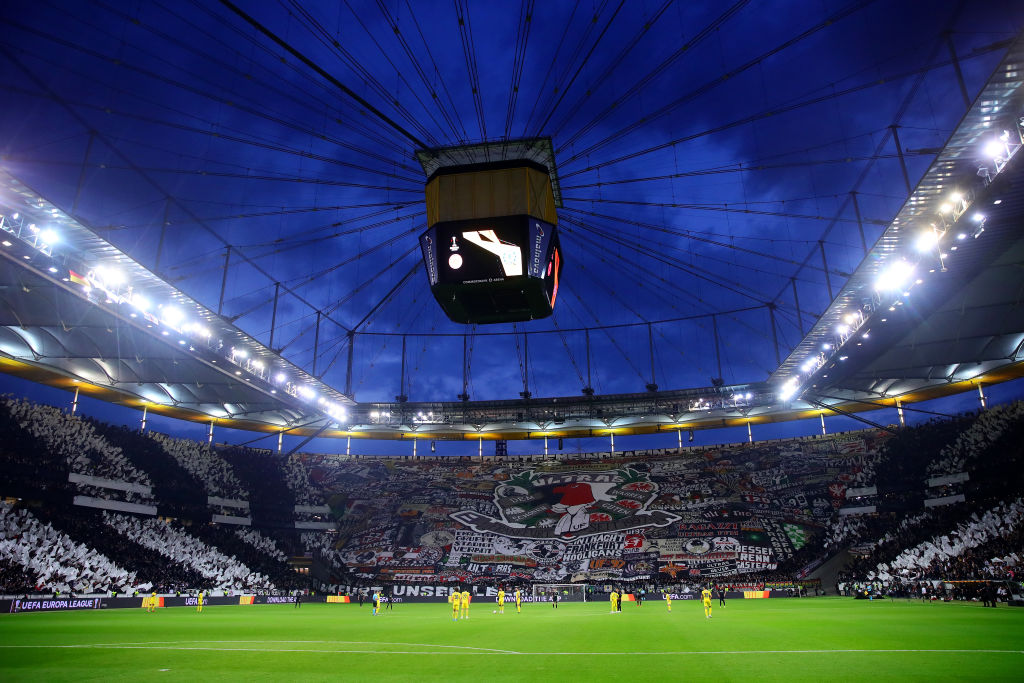
📍 Frankfurt, Germany
🏠 1925
🏟 51,500
Eintracht Frankfurt’s Deutsche Bank Park has been spruced up no fewer than four times since its grand opening 90 years ago, most recently in 2005 for hosting five matches at Germany’s World Cup the following year. The stadium was practically rebuilt from the ground upwards for the '74 World Cup, meanwhile. These days it’s a plush cauldron housing Frankfurt’s passionate fans who still show up in their throngs. - JB
78. Gelora Bung Karno Stadium
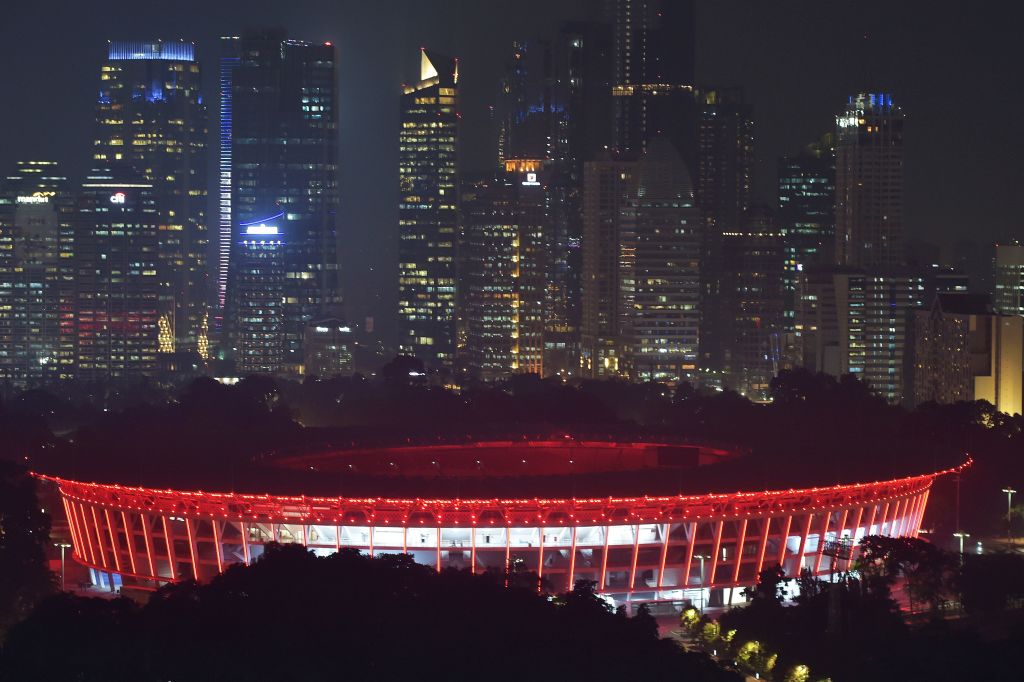
📍 Jakarta, Indonesia
🏠 1962
🏟 77,193
The biggest and most memorable stadium in a country of a quarter-billion people, the GBK has hosted a variety of events over the years, including political rallies, concerts and even some football matches. Arsenal, Juventus, Liverpool and AC Milan are among the teams to have graced the stadium, which is at its best when locals belt out the Indonesian anthem to serenade the national team. – TU
77. Arena Nationala
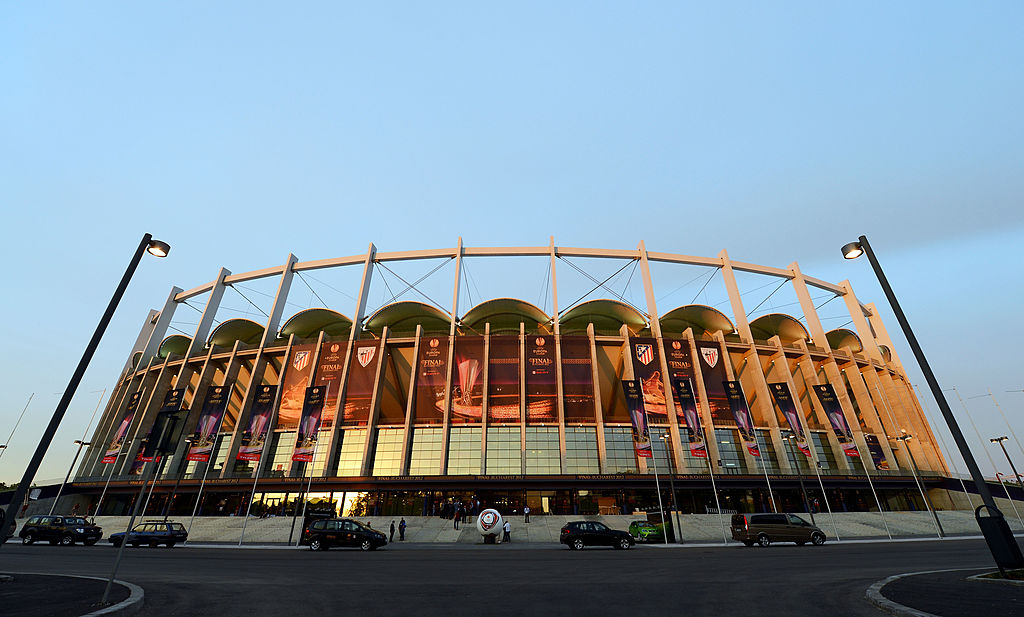
📍 Bucharest, Romania
🏠 2011
🏟 55,634
Fans in this part of the world need little encouragement to inflict an intimidating atmosphere on the opposition, and extra edge is added by the steep structure of Romania’s national stadium.
Although clearly benefiting from the lack of a running track, it is smaller than its predecessor which closed in 2007 having once staged matches in front of six-figure crowds. The only criticism would be that the speckled seating layout means it’s hard to tell if anyone’s actually there. – JF
76. Estadio Centenario
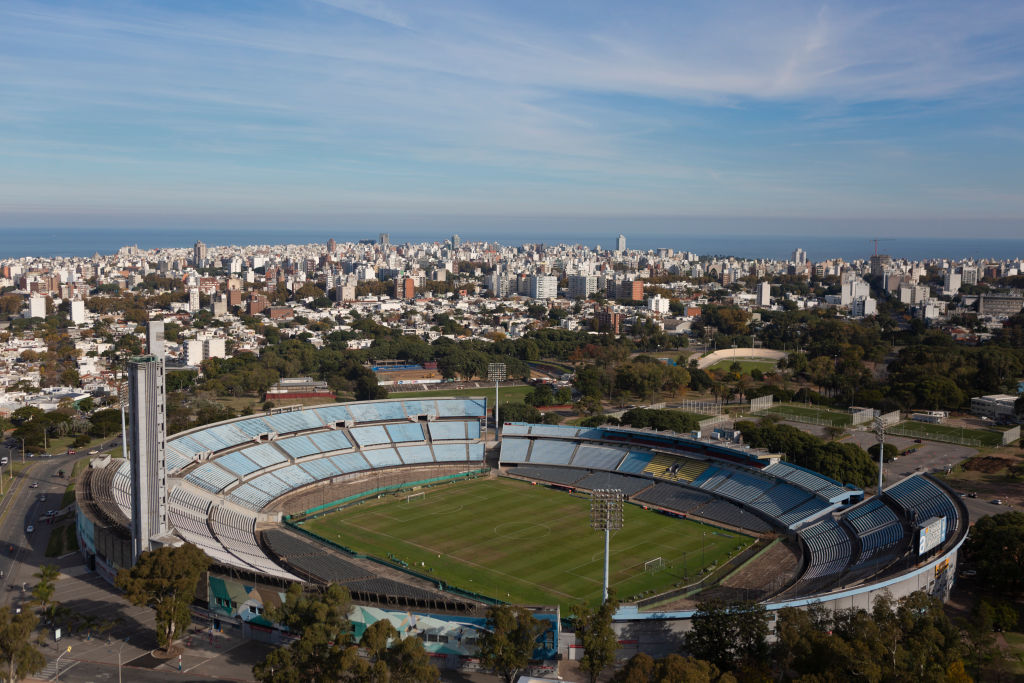
📍 Montevideo, Uruguay
🏠 1930
🏟 60,235
The apparent lack of cash in South American football means lots of the stadiums remain close to their original look, and the Centenario is no different. With a capacity of 100,000, it was named to mark the 100th anniversary of Uruguay's independence; to build it for the first World Cup in 1930, workers had to put in three shifts, 24 hours a day to get it ready in time. It wasn’t.
Ten of the 18 matches were subsequently staged at the country’s biggest stadium as Uruguay lifted the trophy and then FIFA President Jules Rimet declared it the “temple of football”. It’s still a big draw: nearly a century on, domestic teams rent the stadium to play the big matches. A huge concrete bowl, it is instantly recognisable for the 100m tower rising from the Tribuna Olimpica. Erected to celebrate independence, the ‘Torre de los Homenajes’ has nine windows representing the nonet of stripes in the Uruguayan flag. - JF
75. Kopetdag Stadium

📍 Ashgabat, Turkmenistan
🏠 1997
🏟 26,503
Walk into the venue and the first thing you see is a giant mural of former president Gurbanguly Berdimuhamedow staring down at you – but it’s not just any old mural. The President is waving at the crowd atop a bicycle, wearing white pants, a Lacoste shirt and the grin of a man who could do pretty much whatever he wants. The mural may be the stadium’s best asset, but it does regularly host top-flight club and international matches where the stands are full of those who may or may not have chosen to be there, creating one of the more colourful atmospheres in world football. – SM
74. Victoria Stadium
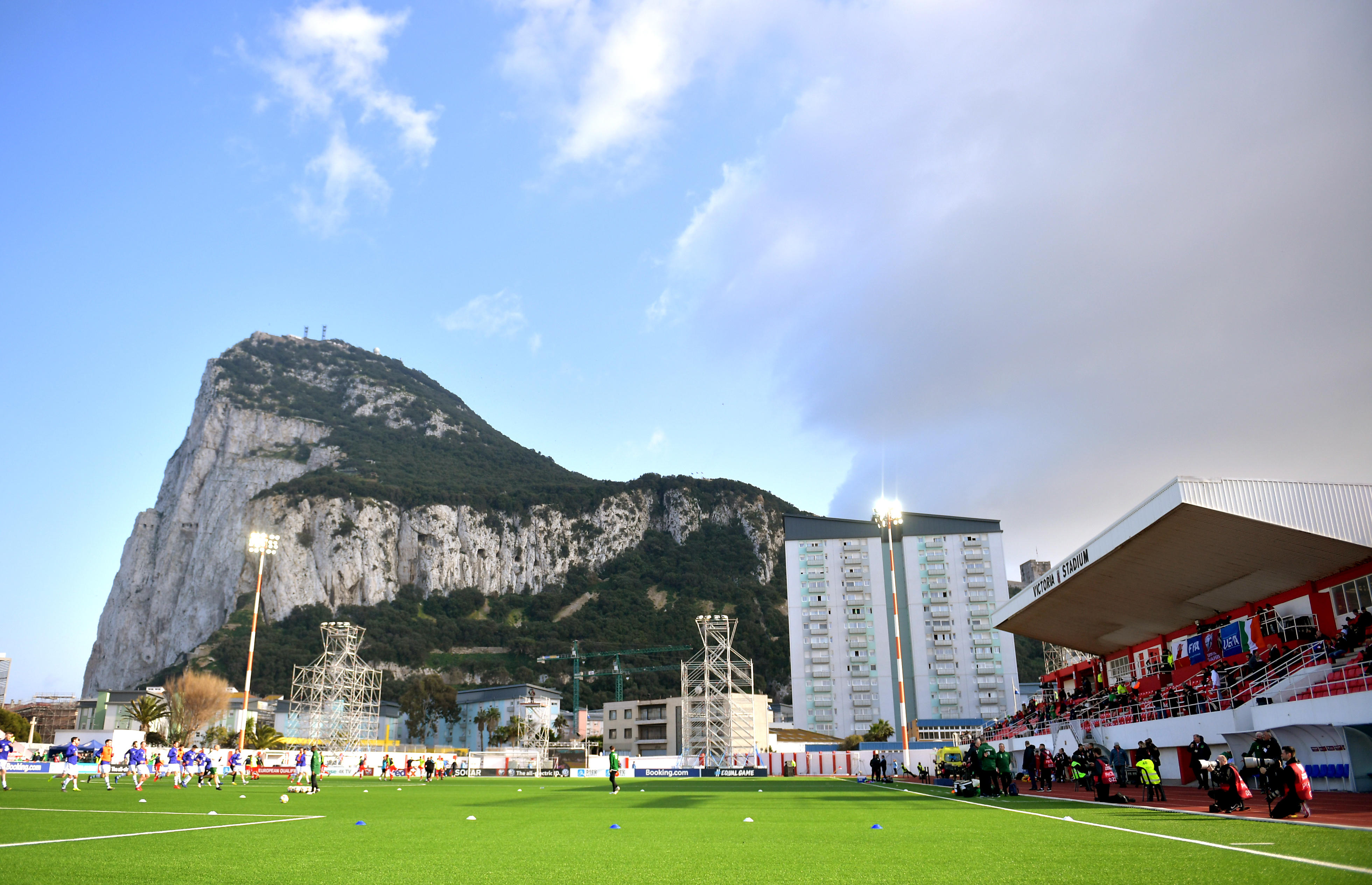
📍 Gibraltar
🏠 1926
🏟 5,000
Views of the famous Rock of Gibraltar are beautiful from the Victoria Stadium. But with redevelopment set for this year, the national side are set to play games in Faro, Portugal.
Gibraltar aren't the only side that will have to relocate, though. Think it's hard to share your ground with your closest rivals? Try the Gibraltar National League, where every team in the league plays at the Victoria Stadium. All 11 of them. That's one busy groundsman. – MW
73. Borg El Arab Stadium
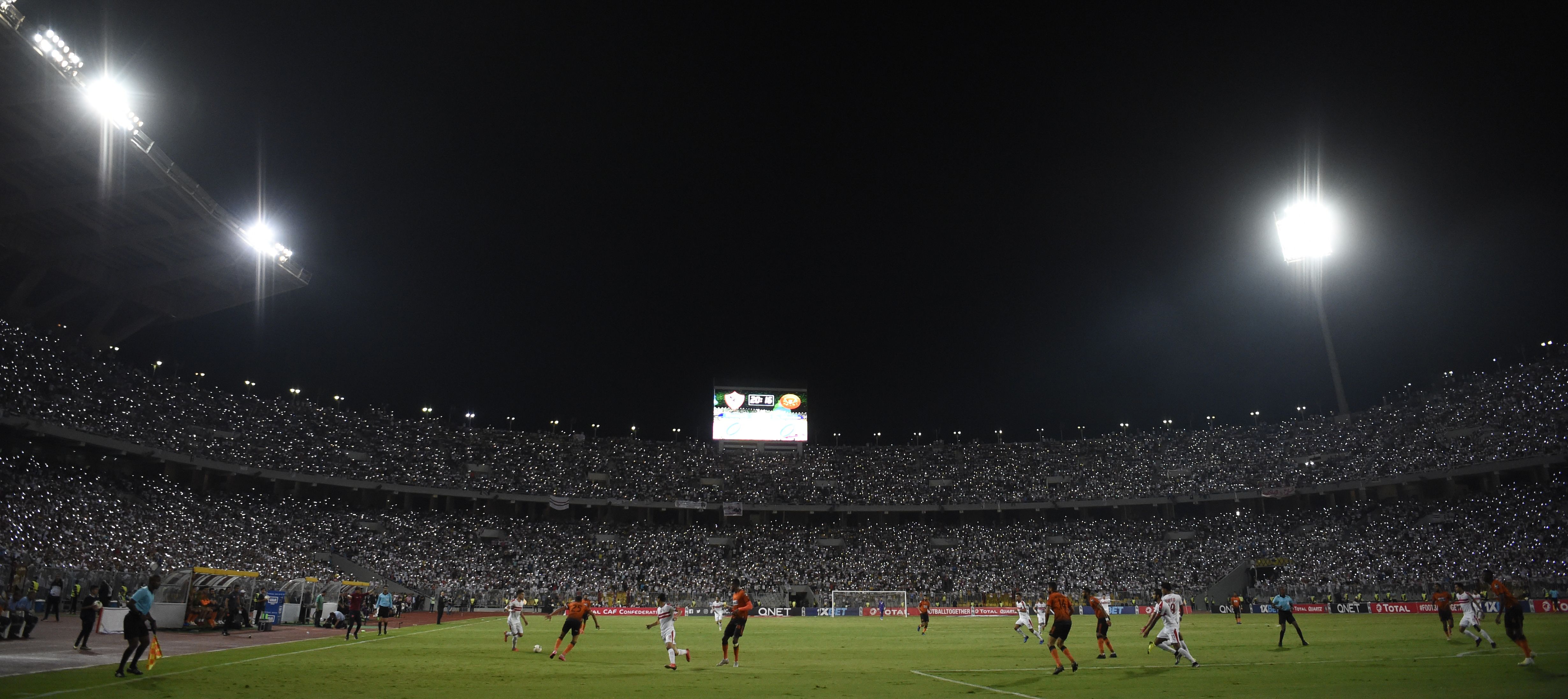
📍 Alexandria, Egypt
🏠 2009
🏟 86,000
Africa's second-biggest stadium is in fact situated 50km west of Alexandria, in the resort town whose name it shares. Originally planned as the showpiece of an Egyptian bid for the 2010 World Cup that fell flat, the ground – built by the Egyptian Armed Forces Engineer Branch – settled for hosting the opening match of the 2009 Under-20 World Cup and has since been a regular venue for the senior national team and big domestic occasions. – NA
72. El Cilindro
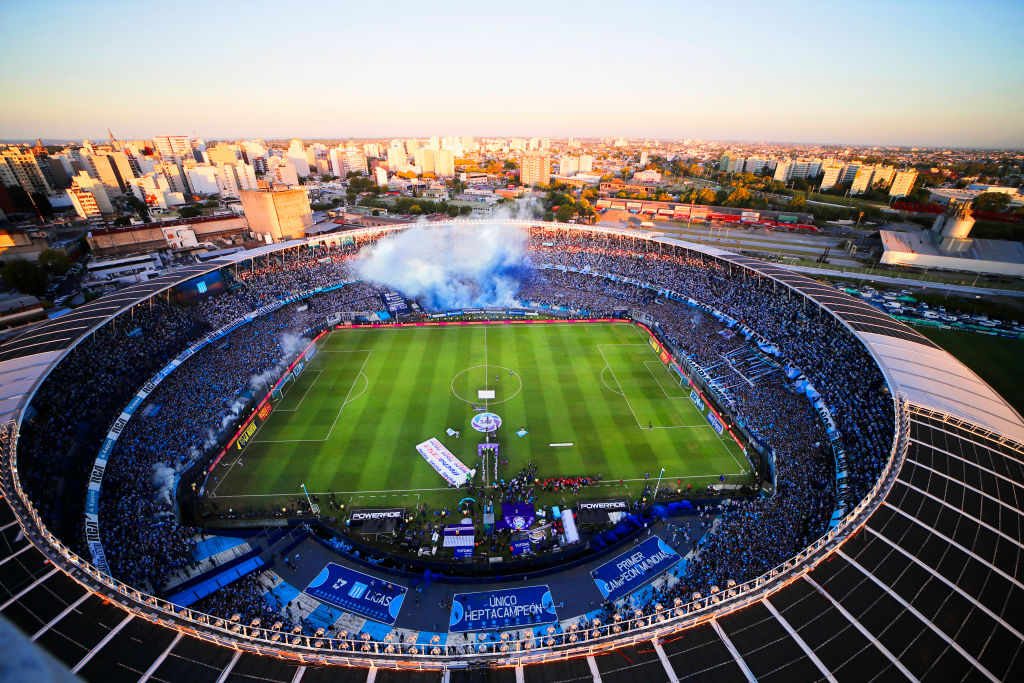
📍 Buenos Aires, Argentina
🏠 1950
🏟 61,000
For decades, the Estadio Presidente Peron – more commonly known as El Cilindro – offered Racing fans the unique experience of walking all around the pitch, from behind one goalmouth to the other, so they could follow the team’s attack on both halves. And Racing were worth following, as they beat Celtic and became the first South American world champions.
The amazing Racing fans, who consider themselves “an inexplicable passion” make this stadium one of the best places to watch football, with a great atmosphere and even the occasional ghost – reptuedly 1920s player Natalio Perinetti. – MM
71. Parken Stadium
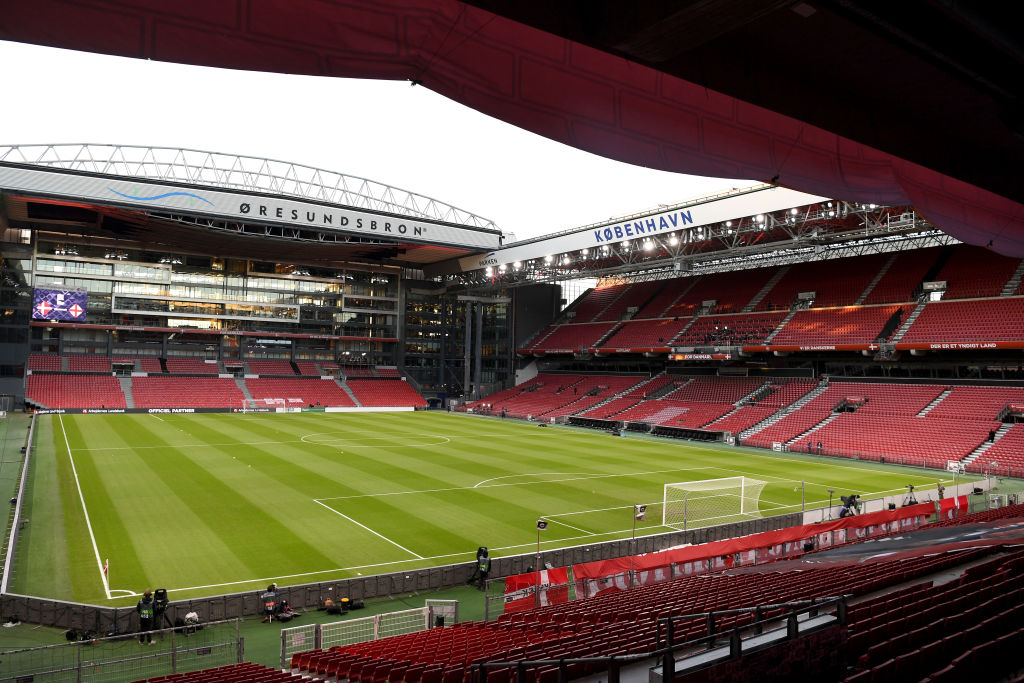
📍 Copenhagen, Denmark
🏠 1992
🏟 38,065
Football has been played on the site of the Telia Parken since 1911; the Danish national team’s Idrætsparken ground was here until it was replaced by the modern stadium in 1992. Although inspired by Italia 90 stadiums, architect Gert Andersson wisely decided to place a greater emphasis on keeping supporters close to the action, the distance between the final row of seats and pitchside being a mere 32 metres – barely outside “Beckham territory”. – LR
70. Estadio Diego Armando Maradona
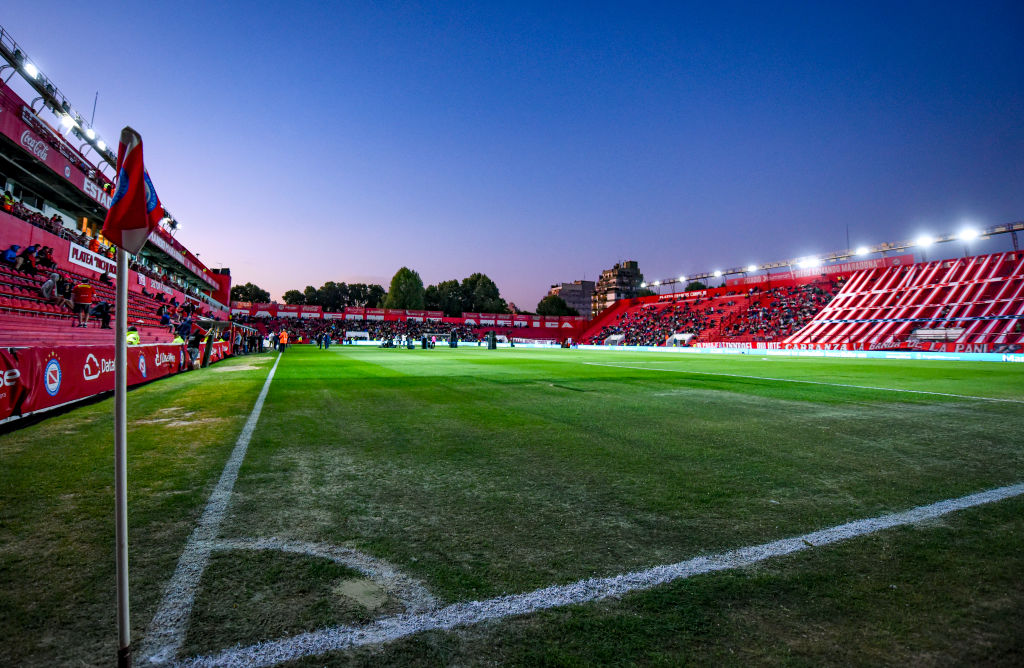
📍 Buenos Aires, Argentina
🏠 1940
🏟 26,000
It may not be the most glamorous stadium – it’s actually a bit of a dump, located in the residential Villa General Mitres neighbourhood of Buenos Aires – but it certainly has history behind it. In 1976, in its former wooden guise, the stadium hosted the first career appearance of Diego Maradona, then just 15. Talking of teenagers, a 17-year-old Lionel Messi played here in an 8-0 victory for the Argentina under-20 side in 2004. – JF
69. Ataturk Olympic Stadium
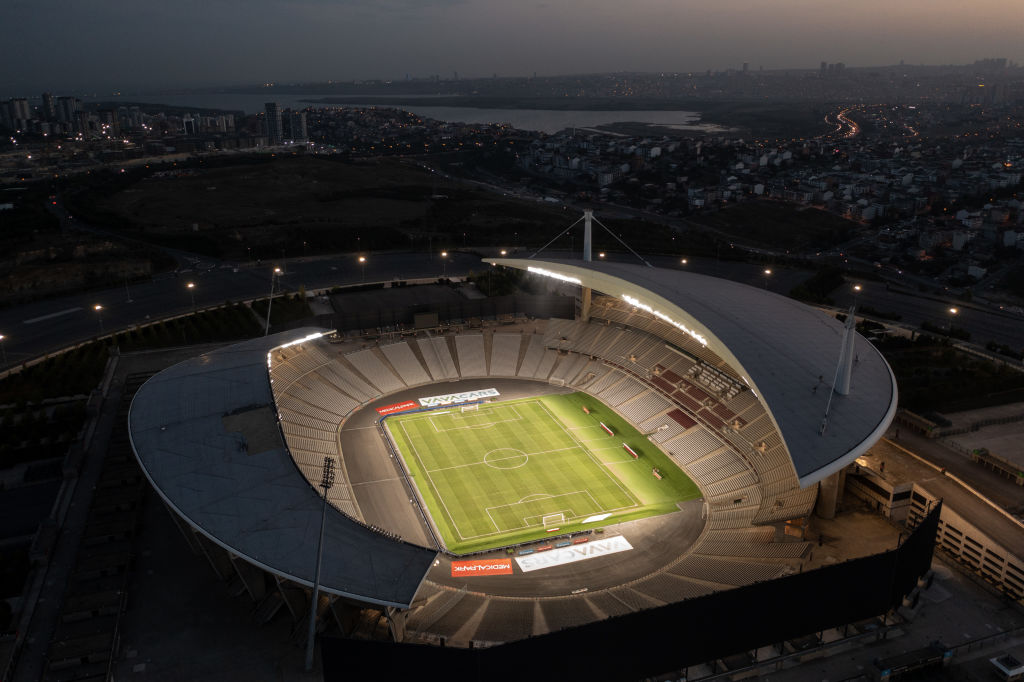
📍 Istanbul, Turkey
🏠 2002
🏟 74,753
The mere mention of the place is enough to get any Liverpool fan weeping, burbling and eulogising about Stevie G, Vladi Smicer and Jerzy Dudek’s wobbly legs - this was the venue for the Reds’ Champions League Final miracle in 2005. Oh, and did someone say… City?
It’s also a deeply odd place – those same Liverpool fans will tell you that it’s situated in a field miles out of the city centre and is a logistical headache to get to. It’s something of a white elephant, in truth. Built for a failed bid at the 2008 Olympics, it’s a fine, UEFA Category-4 arena that can host athletics, Turkey internationals and U2 gigs with equal aplomb, but doesn’t really have a raison d’être, what with Galatasaray in a new ground and Fenerbahce still happy at the modernised Sukru Saracoglu. – NM
68. Bukit Jalil National Stadium
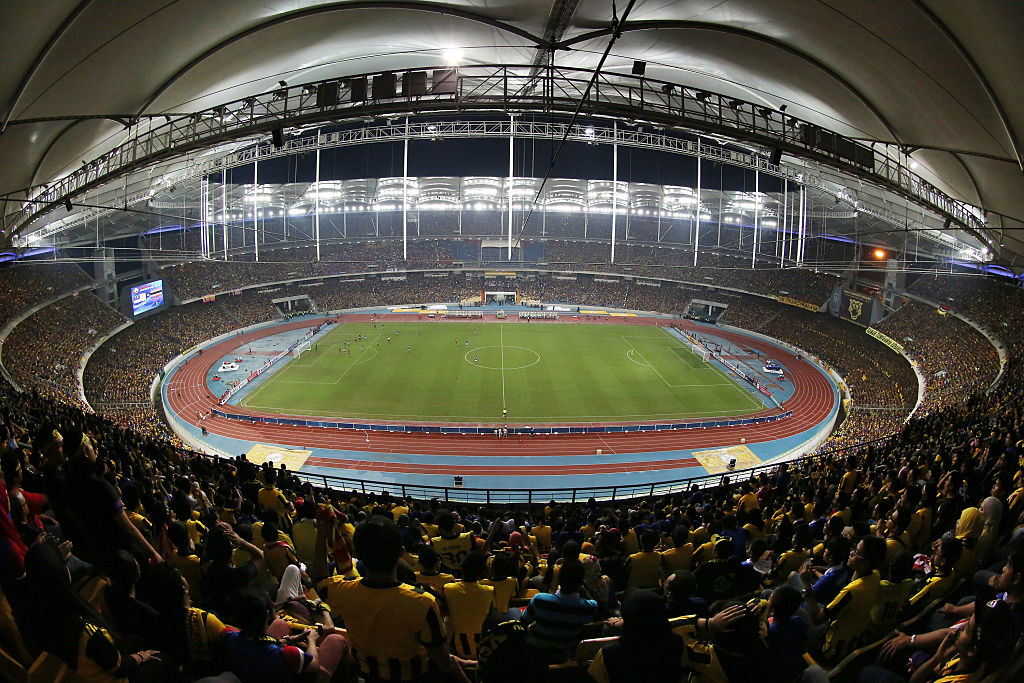
📍 Bukit Jalil, Kuala Lumpur, Malaysia
🏠 1998
🏟 87,411
Built for the 1998 Commonwealth Games, the Bukit Jalil sits in a precinct that also includes a hockey stadium, an aquatics centre, an indoor stadium and a squash arena. It replaced Merdeka Stadium and Shah Alam Stadiums as Malaysian football’s home after those Games. The Bukit Jalil also hosted the 2007 Asian Cup, when Malaysia were co-hosts along with Indonesia, Thailand and Vietnam, although the stadium was criticised by the country’s Sports Minister in 2014 after attempts to improve the pitch failed in recent years. – VV
67. Hampden Park
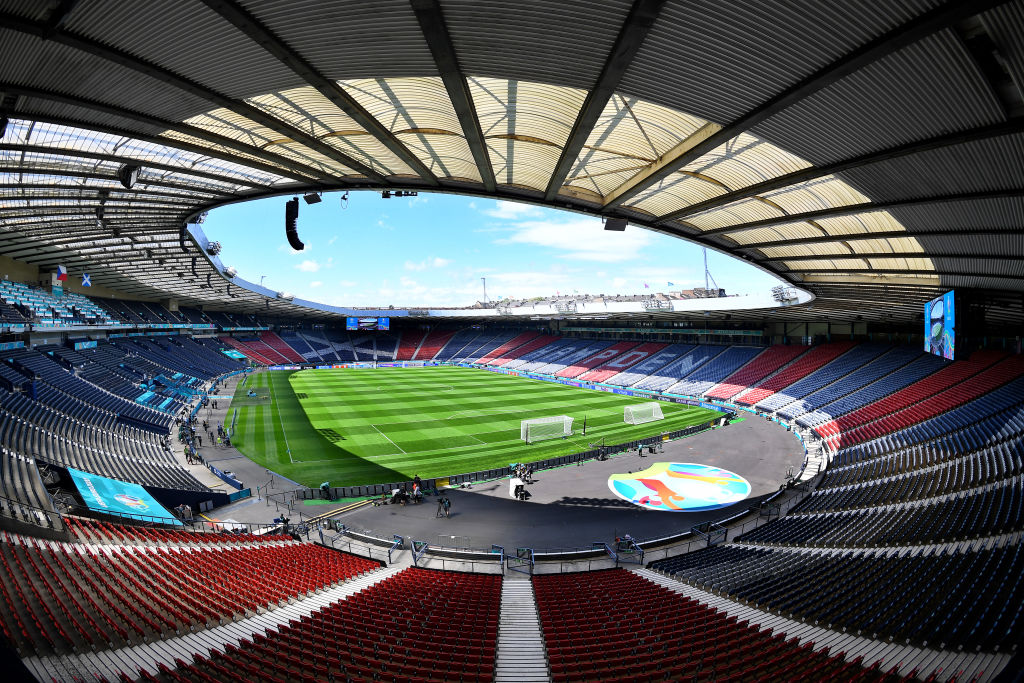
📍 Glasgow, Scotland
🏠 1903
🏟 51,866
Named after an Englishman – John Hampden, who fought for the Roundheads in the Civil War – this most Scottish of venues was designed by Glaswegian architect Archibald Leitch, the stadium doyen who also had a huge impact south of the border (Old Trafford, Anfield, Villa Park, Goodison Park, White Hart Lane and Craven Cottage are among his babies).
For half a century until the opening of the Maracana, it was the world’s biggest stadium. Declining by the 1970s, it finally underwent a major rebuilding job in the 1990s, but retains the aura of Leitch, whose stands favoured function over form but became classics. The attached Scottish Football Museum is also well worth a visit.
The place is a bit odd when the fans of one of its club residents over the years, Queen’s Park, scatter in for a fixture, but the Hampden Roar is still in full effect for internationals, albeit probably quieter than it was for the 1960 European Cup Final (Real Madrid 7-3 Eintracht Frankfurt) or when nearly 150,000 crammed in to see the Scots face England in 1937. – NM
66. Estadio do Dragao
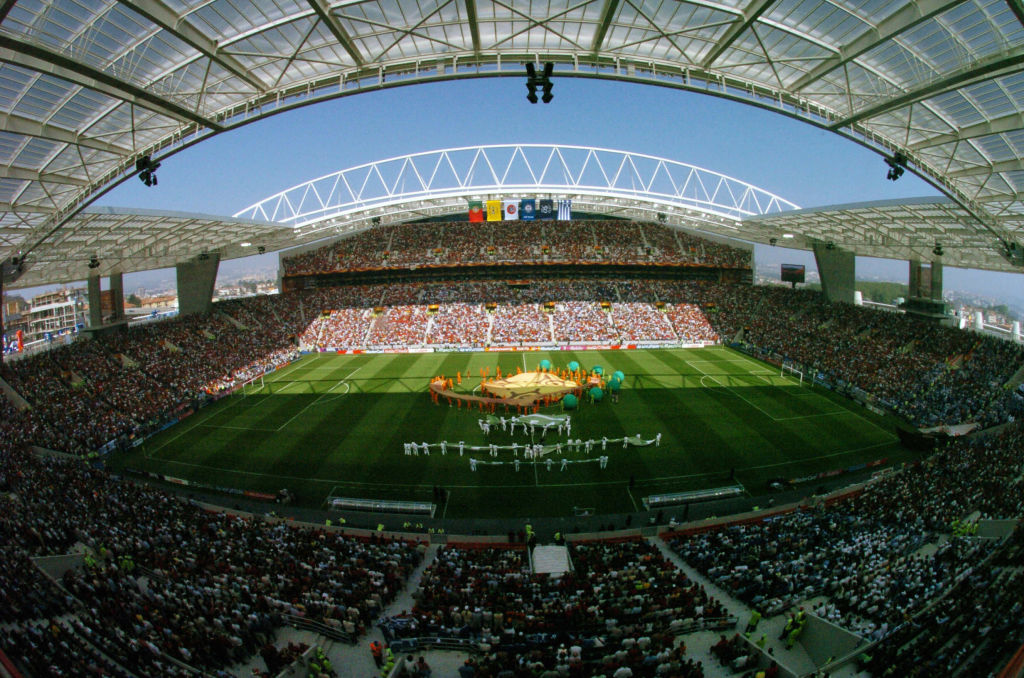
📍 Porto, Portugal
🏠 2003
🏟 50,033
Viewed from the air or afar, the Estádio do Dragão resembles a giant UFO, but when at the venue itself one is struck by the airy and light nature of the unusual design. Large openings between the banks of blue seats and the partly transparent rooftops at either end have proved conducive to ensuring an impeccable playing surface all year round, no doubt aiding Porto’s formidable record at home – domestically and in Europe.
A Brazilian delegation of World Cup 2014 constructors and architects visiting Portugal’s Euro 2004 venues described the Dragao as “the most beautiful, harmonious and interesting” of the stadiums they had visited. For the fiercely proud fans of Porto, the stadium could not have had a better start to life, inaugurated with a 2-0 friendly victory over Barcelona in the middle of 2003/04, a season that would end with the Dragons being crowned Champions of Europe. – TK
65. Estadio Rodrigo Paz Delgado

📍 Quito, Ecuador
🏠 1997
🏟 41,575
Since its construction, the stadium unviersally known as Casa Blanca (White House) has been a success, hosting the finals of the Copa Libertadores 2008, Copa Sudamericana 2009 and 2011 and Recopa Sudamericana (similar to UEFA’s Super Cup) in 2009 and 2010. The Casa Blanca was planned carefully and built slowly: to level the terrain, a thousand workers had to remove 400,000 cubic metres of land. Its grass seeds were imported from France and grown meticulously for two years in Ecuador’s Cayambe valley, warily checked for possible alien grass. Once the grass was relocated to the Casa Blanca, workers and players had to wash their shoes before stepping on the ground, to protect it.
The result is glorious, as the stadium itself – including four dressing rooms, 442 VIP suites (some were sold for $60,000), a presidential suite and even a chapel. – MM.
64. Estadio Nacional Julio Martinez Pradanos
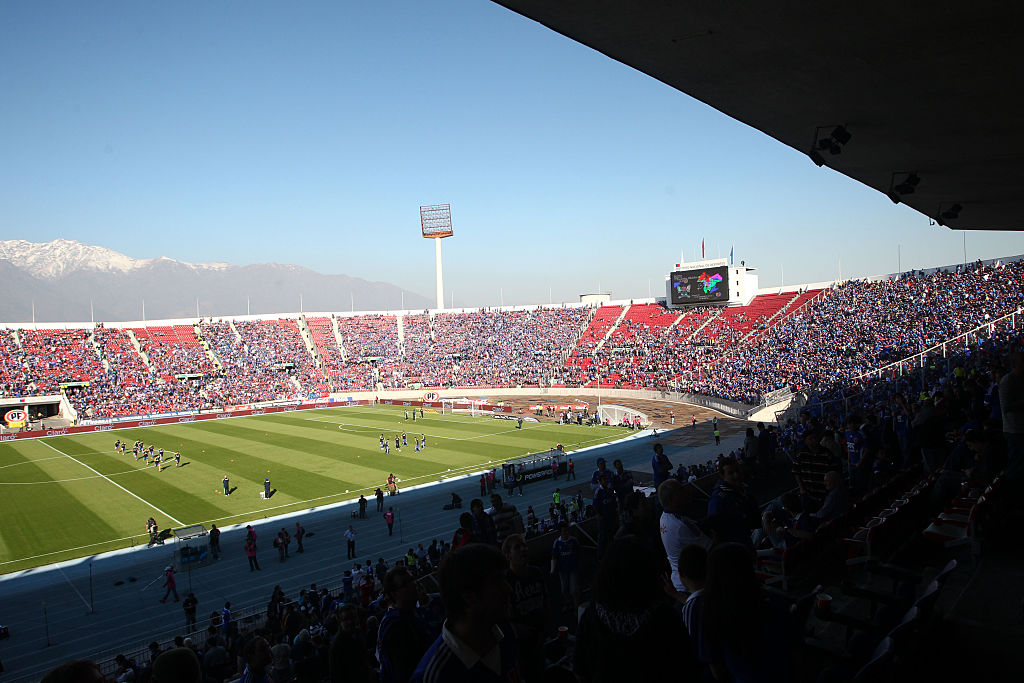
📍 Santiago, Chile
🏠 1938
🏟 48,665
Named in honour of a former sports journalist (hooray, finally some recognition), Chile’s national and biggest stadium was rather less tastefully used as a detention centre during the 1973 Chilean coup d'état. In terms of football it is steeped in history, having hosted the finals of the 1962 World Cup and 2015 Copa America where Chile famously lifted the trophy against Argentina.
As football hipsters will be all too aware, Universidad played some of the best football in the world a few seasons back under Jorge Sampaoli. Under the now-Chile coach, football was often played in ‘one direction’ – and the band of the same name attracted nearly 90,000 there for a gig last year. – JF
63. Olympic Stadium
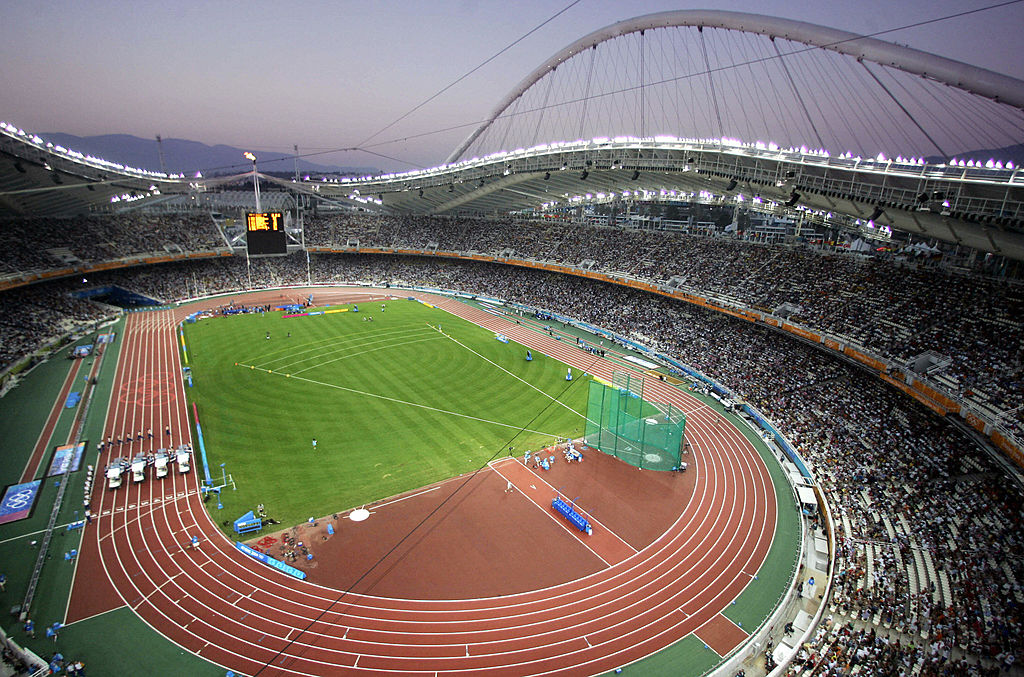
📍 Athens, Greece
🏠 1979
🏟 69,618
There are no shortage of Olympic Stadiums in the world, and some are particularly inexplicable. FFT doesn't remember the Cambodian capital Phnom Penh ever staging the Olympics, but we’re sure it was probably awesome.
Greece is the home of the Olympics though, and what was previously known as the Spiros Louis Stadium was extensively renovated ahead of the 2004 Games, at which Kelly Holmes et al took gold. The stadium holds 75,000 and features a spectacular sweeping roof structure, although it does get minus points for the decaying ghost town of Olympic venues that surround it.
Before renovation, the stadium hosted Champions League home matches for Olympiacos. Since then AEK have made the venue their permanent home, while Panathinaikos have also played European matches there on occasions, in a cauldron of an atmosphere. And in 2007 it hosted the Champions League final between Liverpool and AC Milan – but if there were miracles in Istanbul, there was only revenge in Athens in 2007 as the Italians got their own back. – CF
62. Moses Mabhida Stadium
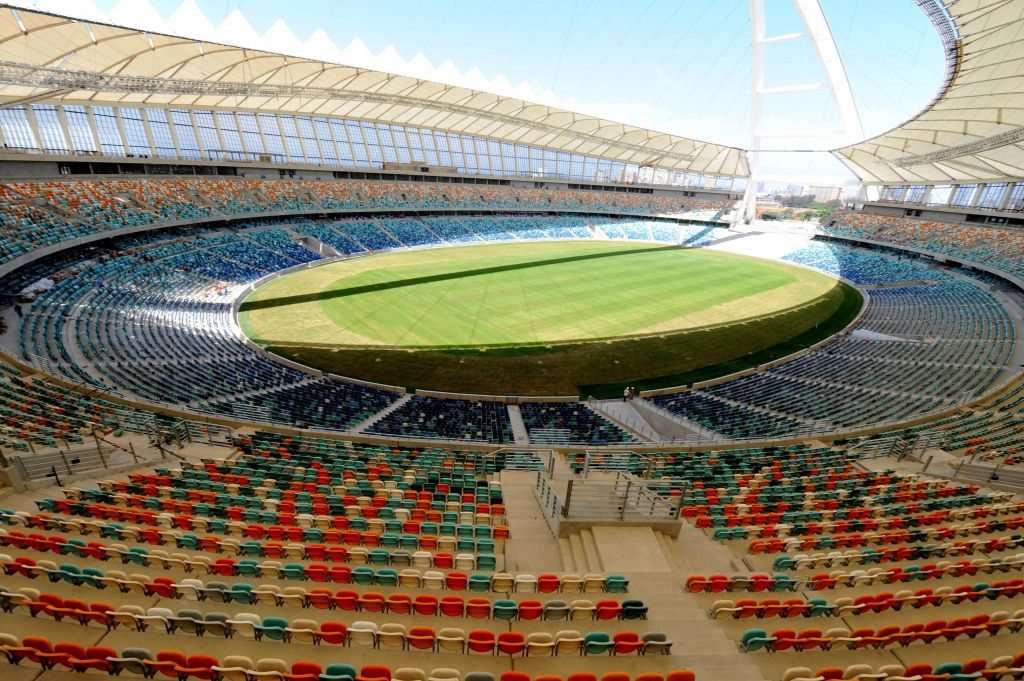
📍 Durban, South Africa
🏠 2009
🏟 55,500
Another shining light of the 2010 World Cup, Moses Mabhida – named after the former general secretary of the African Communist Party – was built from scratch in time for the tournament. Lead architect Gerhard Le Roux and his team contrived a unique structure whose defining point is the arch, visible for miles around, that curves from one end of the stadium to the other. (You can bungee-jump from it, if you like.) – NA
61. Stadio Diego Armando Maradona
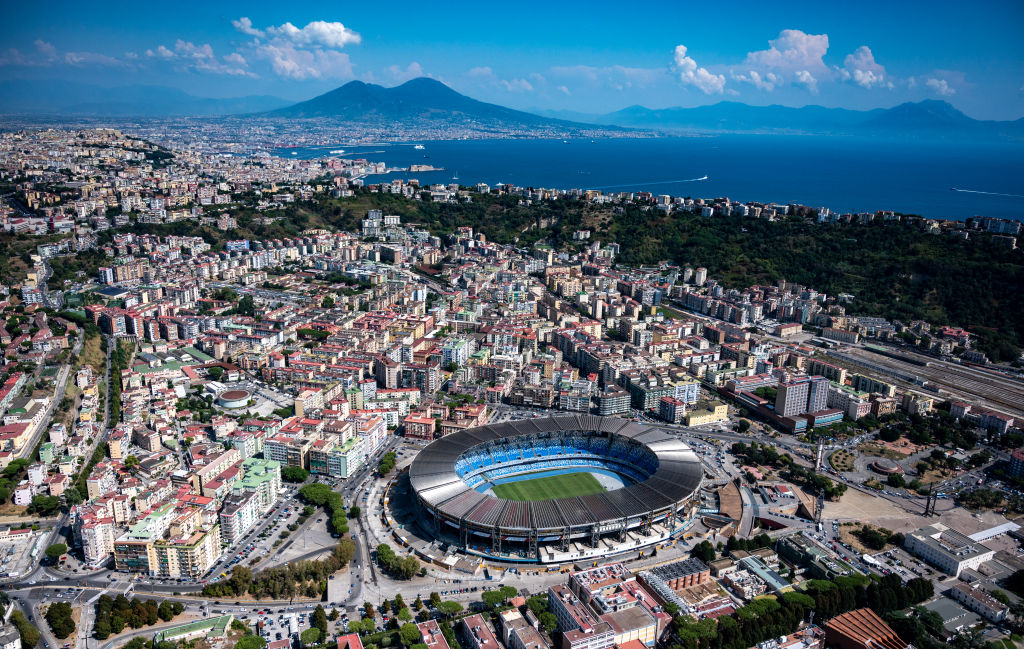
📍 Naples, Italy
🏠 1959
🏟 54,726
One of European football’s most vociferous stadiums, the San Paolo has something of a South American feel on matchdays. Flares, flags and giant banners are in plentiful supply, with the passionate citizens backing their team relentlessly while regularly filling Italy’s third-largest stadium – even when the club found itself in the third tier.
Perhaps it is most famous for the Italia 90 semi-final in which Napoli idol Diego Maradona took on the host nation and won. Of course, it's now named after the man himself, in tribute to everything he did for Napoli. It was a sight to behold when they clinched their first league title in three Maradonaless decades this year. – AD
60. Craven Cottage
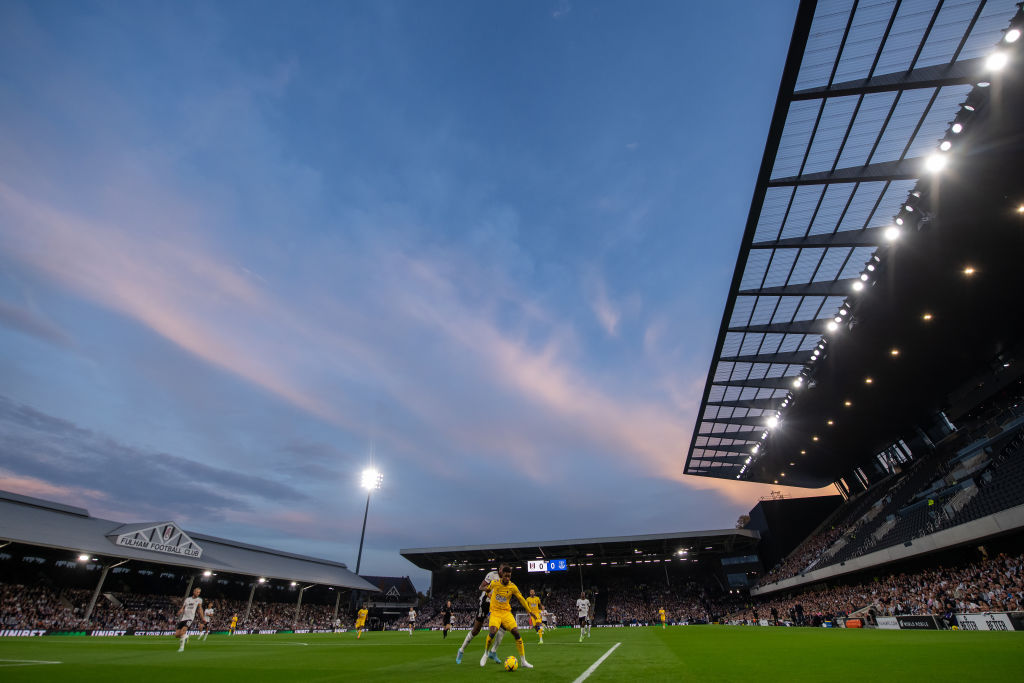
📍 London, England
🏠 1896
🏟 22,384
There’s no stadium quite like Craven Cottage. In an age where identikit bowls dominate, this is a piece of authentic Little England tucked away on the banks of the Thames in South West London. Coming out of Putney Bridge station, you pass independent eateries and one of London’s best second-hand bookshops, then into the tree-lined confines of Bishops Park, eventually emerging onto Stevenage Road.
It’s here that Fulham’s home since 1896 truly reveals itself. Fronting the oldest football stadium in the capital – the first ‘Cottage’ was built in 1780 and supposedly counts Sir Arthur Conan Doyle, Florence Nightingale and even Queen Victoria as former tenants – the redbrick façade of the Johnny Haynes stand is the typically beautiful work of prolific architect Archibald Leitch.
This stand, along with the titular Cottage nestled in the corner of the ground, is a Grade II listed building. Throw in the Riverside Stand, brilliant for a half-time drink looking over the Thames, and you’ve got a picture-perfect little ground. And no amount of Michael Jackson statues can change that. – AM
59. Rungrado 1st of May Stadium
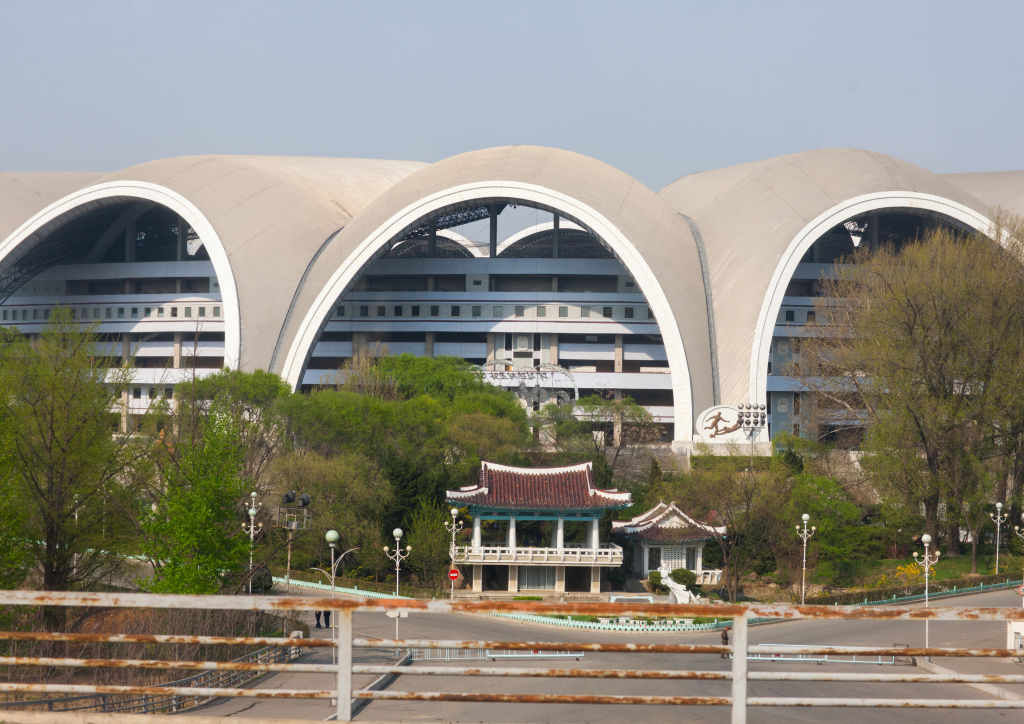
📍 Pyongyang, North Korea
🏠 1986
🏟 114,000
Few stadiums on this list are more famous for something other than football, but that’s forgivable when the Rungrado gets 150,000 people packed in for the amazing spectacle of the Arirang Mass Games. It opened in 1989 as the centrepiece of the World Youth Festival, a response to the 1988 Seoul Olympics. Inside the feeling is of a fairly standard (albeit very big) Soviet-style bowl with some local touches such as 16 arches that make up the roof, designed to create the image of a parachute in flight.
Where it really impresses, however, is on the approach from the Taedong River and the massive outer shell which dominates the neighbourhood. Some visitors have unfairly labelled it 'The Veruca' due to its design, but that sells short a stadium which aims for a powerful impact – and certainly delivers. – JD
58. Luzhniki Stadium
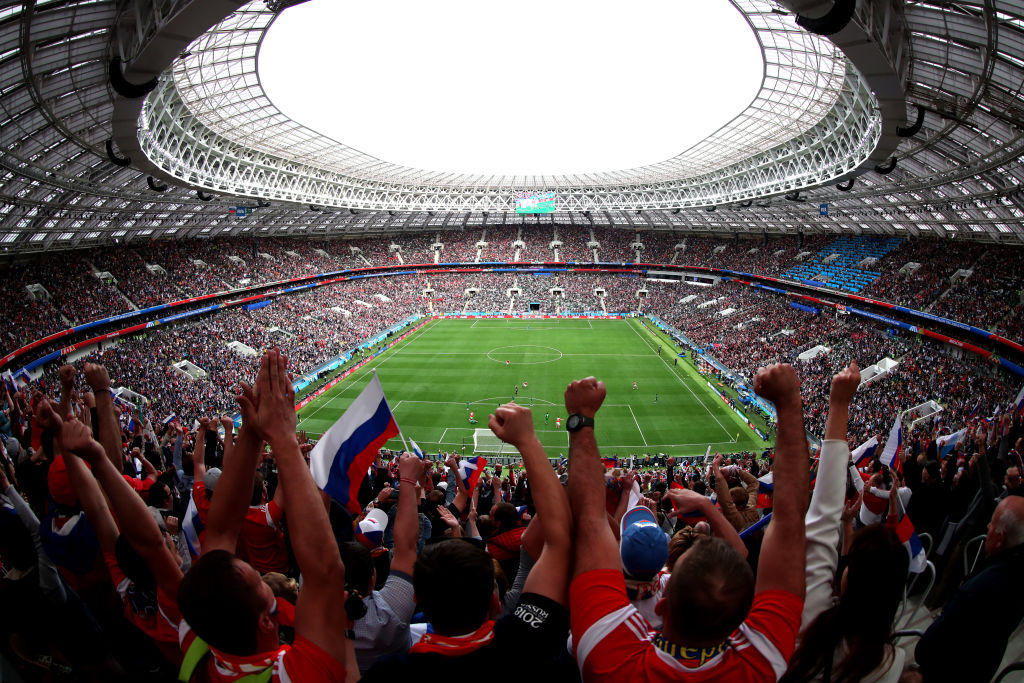
📍 Moscow, Russia
🏠 1955
🏟 81,000
Luzhniki translates roughly to "The Meadows". It's a bucolic name for a rather monstrous concrete and metal structure, which Vladimir Putin last used to hold a rally to draw support for his nation's invasion of Ukraine.
Plenty of sporting misery has happened there, too. John Terry's fatal slip in the 2008 Champions League final; England's Croatian collapse in the 2018 World Cup semi; Russia pummelled Saudi Arabia and sucker-punching Spain on penalties that summer; everyone who put a pound on there being a goal in every group game of that VAR-happy tournament, only for Denmark and France to let the side down. As a venue itself, the Luzhniki Stadium is colossal, with great views from every angle – but as the French who partied on the pitch in the aftermath of their second title in '18 know all too well: it's hosted a fair few rainy days over the years. – MW
57. Volksparkstadion

📍 Hamburg, Germany
🏠 1953
🏟 57,000
It says on the tin that Hamburg’s Volksparkstadion was opened in 1953, but in truth, today’s current incarnation is little more than two decades old. When the ‘People’s Stadium’ was ‘renovated’ in 1998, the old ground – which had hosted games at World Cup 1974 and the Euro 88 semi-final between West Germany and the Netherlands – was knocked down completely to make way for a shiny new €95m arena fit for hosting matches at the 2006 World Cup.
In turn, one of Germany’s proudest clubs inherited one of the finest grounds in the world. Not bad for a ground which wasn’t even built for Hamburg in the first place – Der Dino (the Dinosaurs) moved in 10 years after it was built when they joined the newly formed Bundesliga in 1963. – JB
56. Estadio Gigante de Arroyito
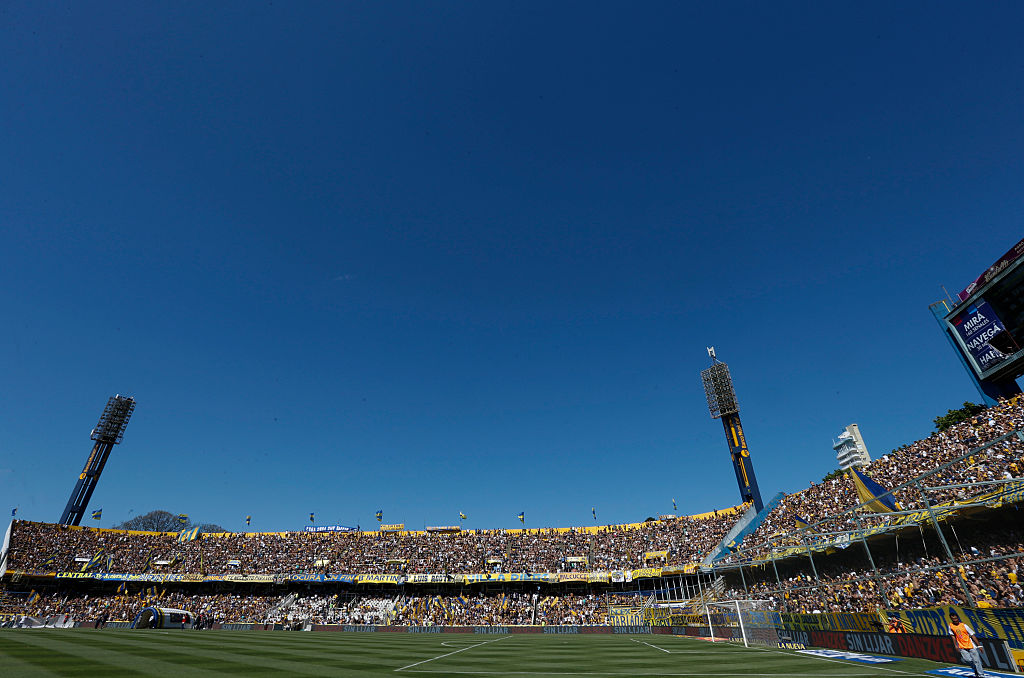
📍 Rosario, Argentina
🏠 1926
🏟 41,465
By no means the biggest stadium in our list, but boy does this place come alive with noise. Situated hard by the Parana river that flows south toward Buenos Aires, it’s a vibrant place – in 2008 the “green moss” coloured seats were eye-catchingly painted in the club’s blue-and-yellow livery – and difficult for opponents to visit: despite not being one of the big five in Argentina, Rosario Central have lost just seven of their last 45 games top-flight games there (up to November 2015).
Steeped in history, the Estadio Dr Lisandro de la Torre (officially, both the barrio and ground are named after a popular politician) hosted Argentina during the second phase of the 1978 World Cup. It was a happy return for Rosario old boy Mario Kempes, who bagged four in three games there en route to personal and national glory – he won the Golden Boot as Argentina won the World Cup. – JF
55. Estadio Ramon Sanchez Pizjuan
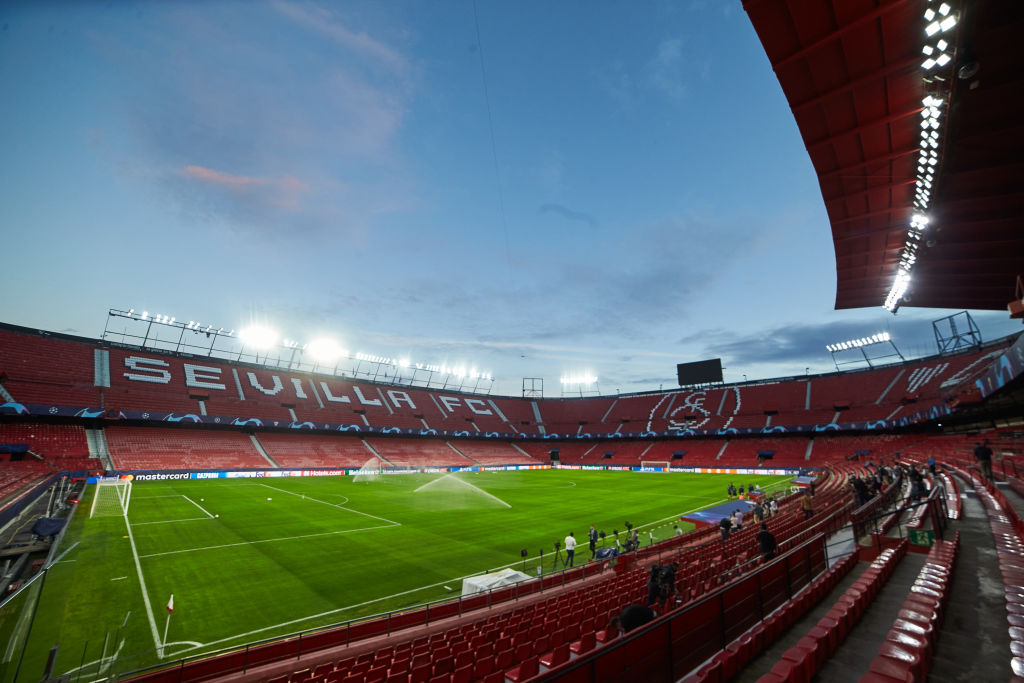
📍 Seville, Spain
🏠 1958
🏟 42,714
For much of its duration the journey to Sevilla’s home isn’t anything special. Walking along Avenida de San Francisco Javier offers little more than concrete housing and glass-fronted offices. Then, turn right into an inconspicuous shopping complex, walk out from under an archway, and it hits you: the 480sq.m. mural which adorns the western exterior of the Ramon Sanchez Pizjuan.
The Sanchez Pizjuan seems to breathe with its supporters, the rumbling of the advertising boards at the back of the stands and crunching of sunflower seeds underfoot combining with endless singing to create one of the best atmospheres in Europe. – LR
54. Rose Bowl
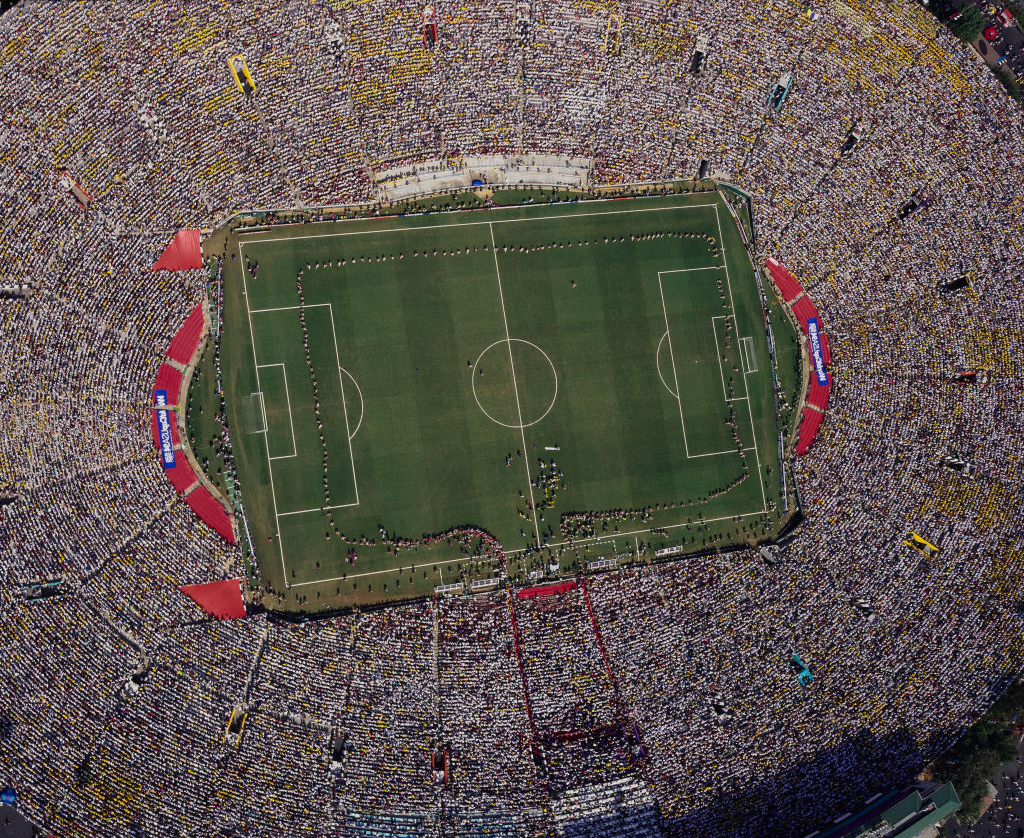
📍 Pasadena, United States
🏠 1922
🏟 92,542
American architecture has a different hierarchy to the Old World, but by any standards the Rose Bowl is a grand old stadium. A US National Historic Landmark finished the year before Wembley first opened, it’s a vast coliseum of a place capable of packing them in.
In some ways its size counts against it: although the NASL’s Los Angeles Wolves and MLS outfit LA Galaxy have been tenants, they understandably struggled to fill it. It was built for, and ended up giving its name to, the huge events which came to be known as “bowl games” (Super Bowl, etc); it also hosted the finals of two World Cups (1994 men’s, 1999 women’s) and the 1984 Olympics football tournament. – KH
53. Estadio Jose Alvalade
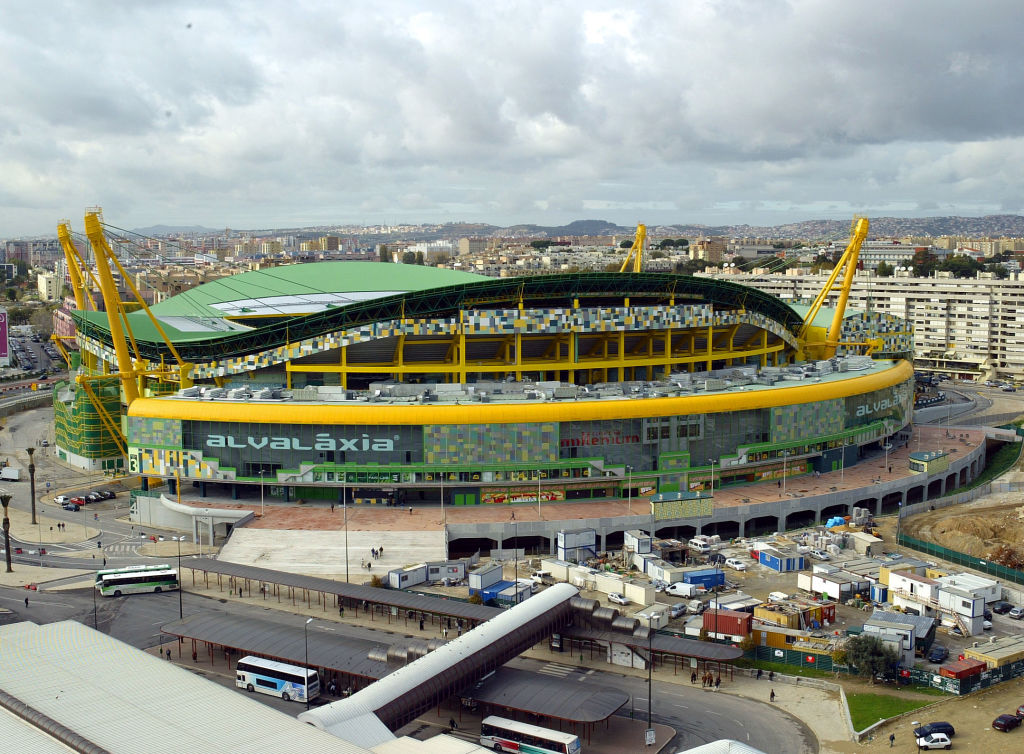
📍 Lisbon, Portugal
🏠 2003
🏟 50,095
Lisbon’s Jose Alvalade stadium is big on aesthetics. A mosaic multi-coloured design runs through the whole complex, inside and out, bar the green-painted undulating single roof supported at each of the four corners by cables streaming down from massive metal pillars piercing far into the sky. The stadium’s inaugural match on 6 August 2003 proved a famous occasion, with the hosts beating Manchester United 3-1 in a pre-season friendly and an 18-year-old Cristiano Ronaldo putting in a mesmerising performance that would persuade Alex Ferguson to take the Portuguese magician back with him to Old Trafford. – TK
52. Sangam Stadium
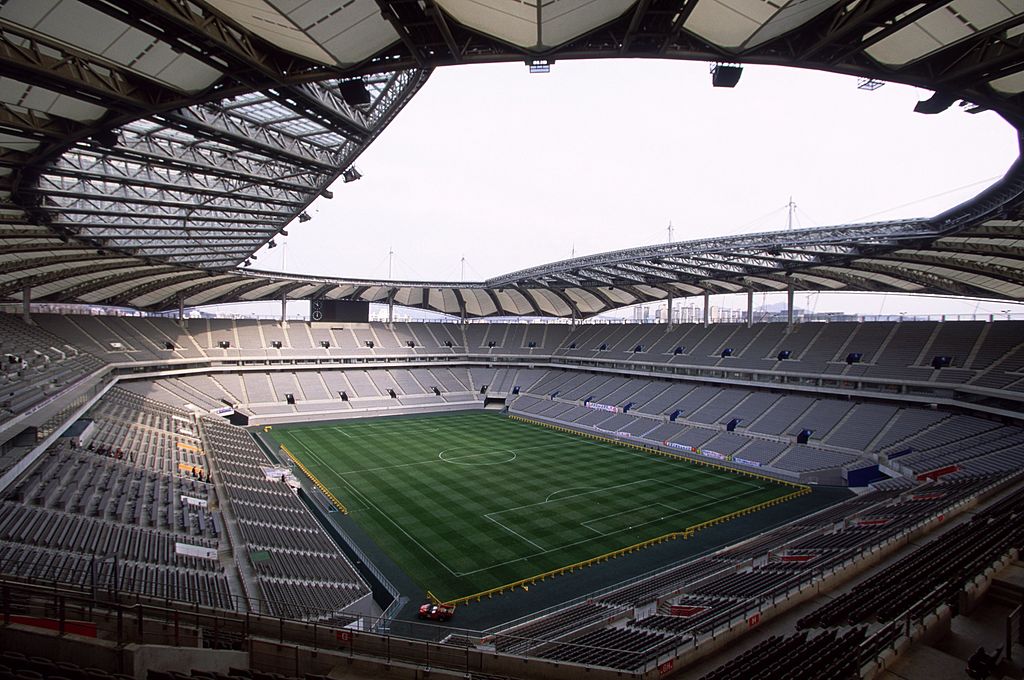
📍 Seoul, South Korea
🏠 2001
🏟 66,704
It may be built on an old rubbish tip but there’s nothing trashy about this stadium on the banks of the mighty Han River and overlooking the world's highest fountain. Alex Ferguson waxed lyrical about it in 2009 and the image of Papa Bouba Diop dancing round the Senegal shirt in that opening game of the 2002 World Cup still sizzles on the French football psyche.
Modern, futuristic even but with a nod to the past and a design said to be based on traditional Korean kites, the stadium layout keeps the fans close to the pitch and the sightlines – so the experts say – are perfect from each of the 66,000 seats in the football-only arena. When it’s full and South Korea are on form, the atmosphere can be something special – and even if it isn't, you can escape to a state of the art cinema, a massive supermarket, get married or go to a 2002 World Cup museum. – JD
51. San Mames
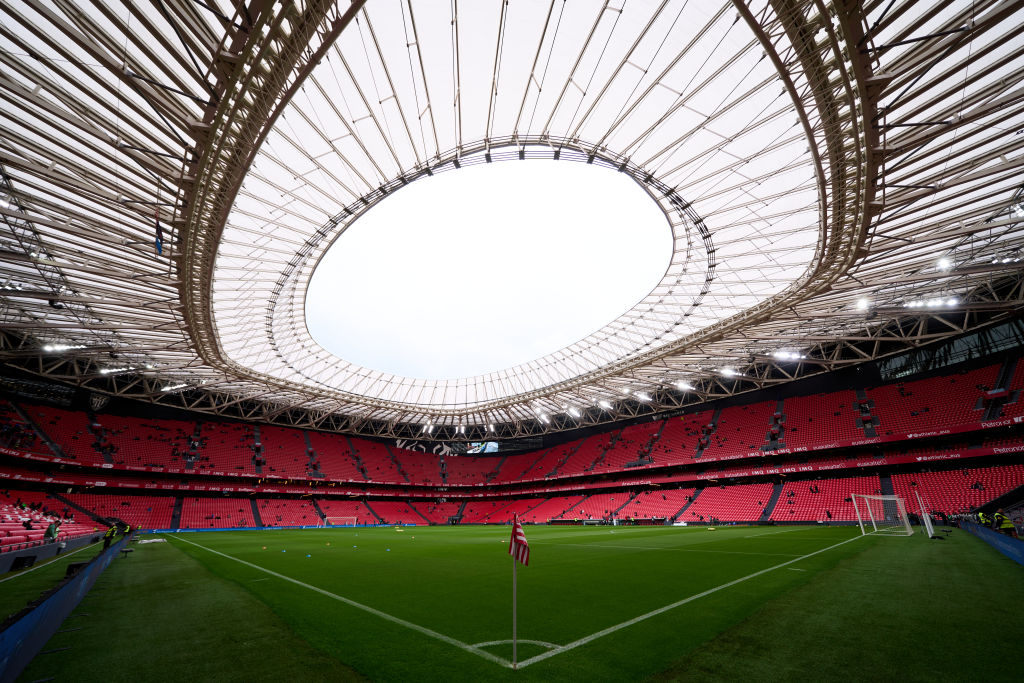
📍 Bilbao, Spain
🏠 2013
🏟 53,331
If you’re going to knock down the country’s oldest and most revered stadium, you’d better make sure you make a good job of the new one. Thankfully the new San Mames – named after a nearby church of the same name – is every bit as impressive as the magnificently intimate original, nicknamed The Cathedral.
What makes this £136m 2013 update unique – a little more than the £216 paid for the original in January 1913 – is its position within the city. Lying on the banks of the Nervion River, San Mames is Bilbao’s beating heart, gridiron arterial streets expanding out across the one-club city. Walk along Calle de Rodriguez Arias or Poza Lizentziatuaren Kalea and the ground stands proud at the end.
Home to friendlies played by the Basque Country’s unofficial national team, San Mames is the physical representation of a people. – AM
50. Estadio Monumental "U"
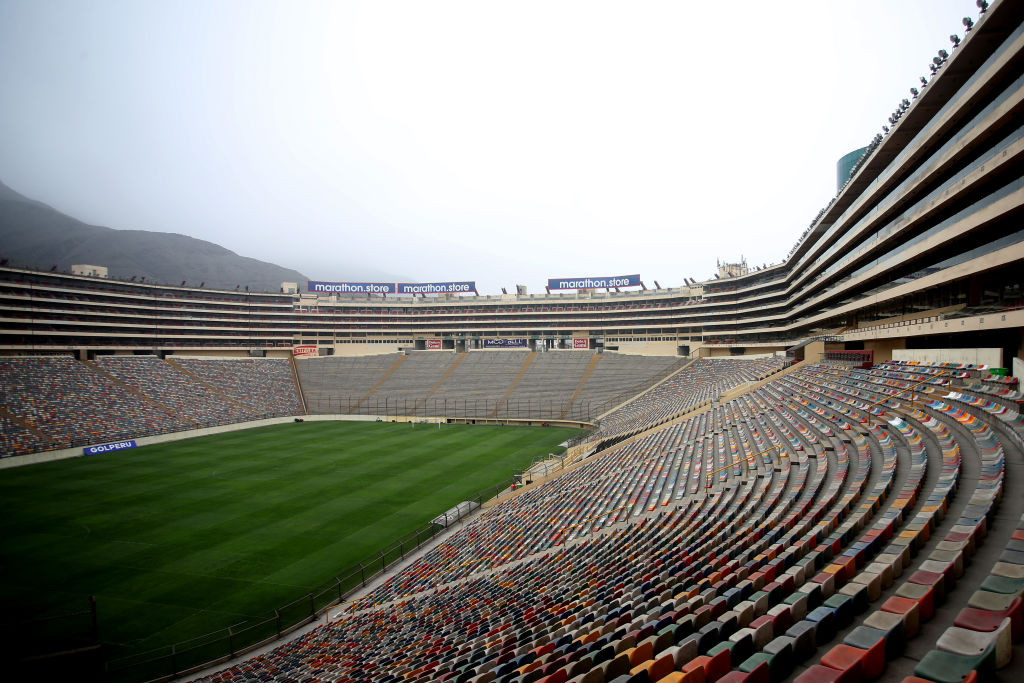
📍 Lima, Peru
🏠 2000
🏟 80,093
This stadium is so big that construction also included a contingency plan for low attendances: every seat is painted in a different colour, so the stands never seem empty.
The two tiers are completely different, offering a unique view of what it looks like to combine two stadiums into one. A mix between Bombonera, Giuseppe Meazza and Camp Nou, this stadium bears a regular lower tier of cheaper ‘popular’ tickets, for nearly 60,000 fans, and a second, vertical tier for suites that allocates 20,000 more. The result is a monster ground that resembles those of the NFL, a very ambitious project that Universitario are still trying to pay for. – MM
49. Stadio Olimpico
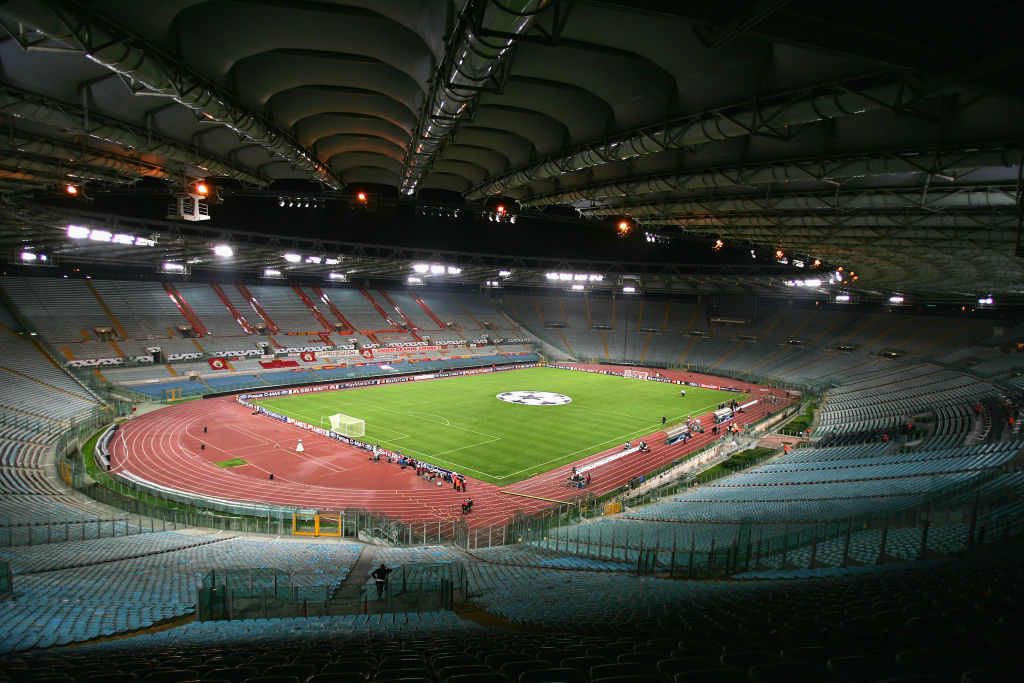
📍 Rome, Italy
🏠 1927
🏟 70,634
The modern-day Colosseum has undergone countless transformations since it first opened. It was once known as the Stadio dei Centomila – “Stadium of 100,000” – as its capacity reached its peak in the years following World War II. In fact, although nobody seems to know what the record attendance was, most sources contend it was well into six figures.
It received its current name after a renovation for the 1960 Olympics, and it was then almost entirely rebuilt for the World Cup three decades later. It has hosted four European Cup Finals (1977, 1984, 1996 and 2009), but it remains primarily the home to the Italian capital’s two football clubs.
Whenever Roma and Lazio face off for major trophies or simply local bragging rights, the stadium’s myriad problems become irrelevant as supporters transform it into one of the world’s most passionate venues. Few places can match for drama, history or nostalgia, and it remains a hugely intimidating place to play for visiting teams if the home crowd are up for the occasion. – AD
48. Rajko Mitic Stadium
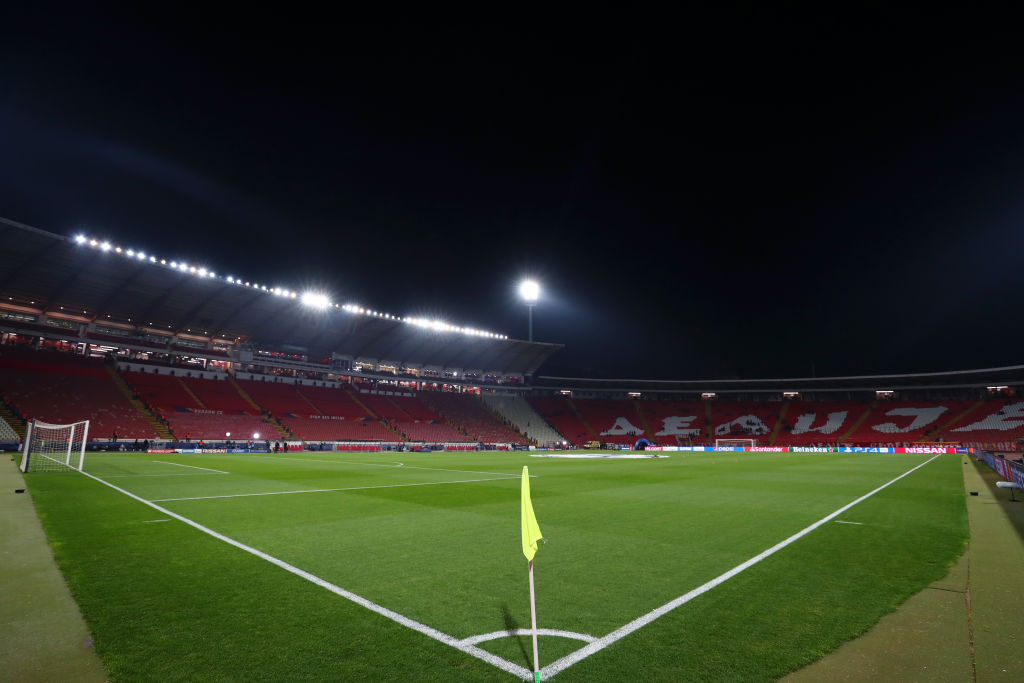
📍 Belgrade, Serbia
🏠 1963
🏟 53,000
Officially it’s known as the Stadion Rajko Mitic in honour of a club legend, but Red Star’s stadium has long been nicknamed the Marakana after – yes, you probably didn't need us to spell this out – the Maracana in Rio. Switching the 'c' for a 'k' was a nice touch.
The Belgrade version is an imposing old-school bowl and was a particularly taxing place to visit during Red Star’s heyday – 100,000 were there when they beat Bayern Munich in the semi-finals en route to European Cup glory in 1991. The stadium also hosted the 1973 European Cup final and the final of the 1976 European Championship, won by Czechoslovakia thanks to Antonin Panenka’s Panenka.
Red Star’s decline in fortunes have meant it isn’t full that often these days, but the atmosphere is still pretty special when it is – albeit sometimes with a rather significant hint of menace.
It’s home to the fearsome Delije, the Red Star ultras from whom Arkan recruited paramilitaries for the fight against Croatian independence in the early 1990s. In one match against Partizan, those paramilitaries returned to hold up Croatian road signs to chillingly celebrate their capture of a number of towns. A Red Star fan, Arkan lived in a villa overlooking the Marakana until he was assassinated in 2000. – CF
47. Ali Sami Yen Stadium
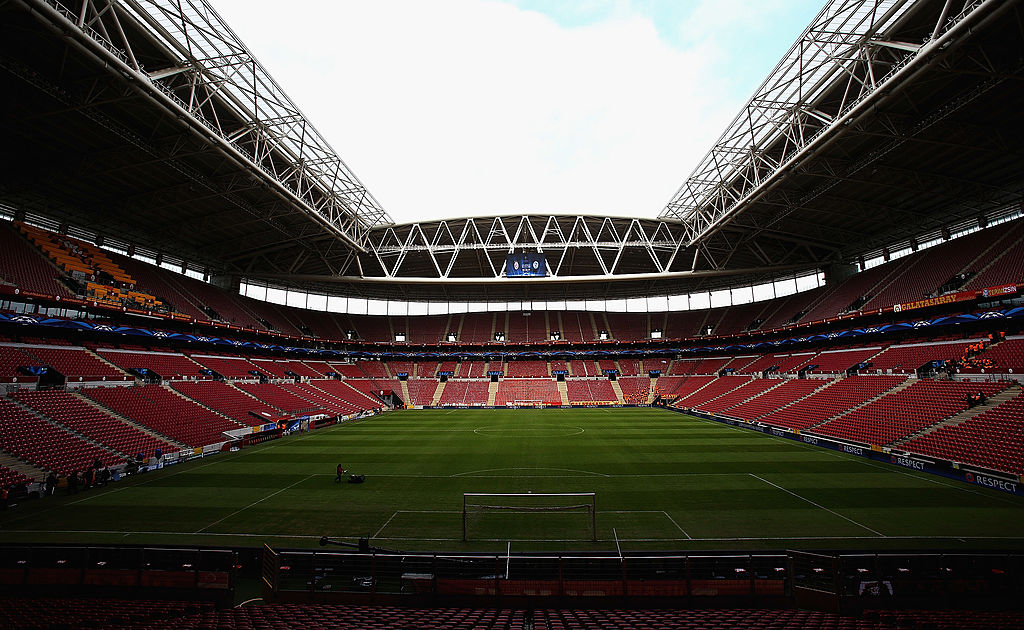
📍 Istanbul, Turkey
🏠 2011
🏟 52,280
A newbie, but a goodie. The Rams Global – formerly The Turk Telekom – has achieved the near-impossible of living up to the legendary home it replaced. Gala’s old Ali Sami Yen was much-loved, placed at the heart of its support base, and highly intimidating for visiting teams, but quite frankly was a health hazard: the company that demolished it in 2011 stated that it was a near-miracle that it hadn’t collapsed. – NM
46. Al Bayt Stadium
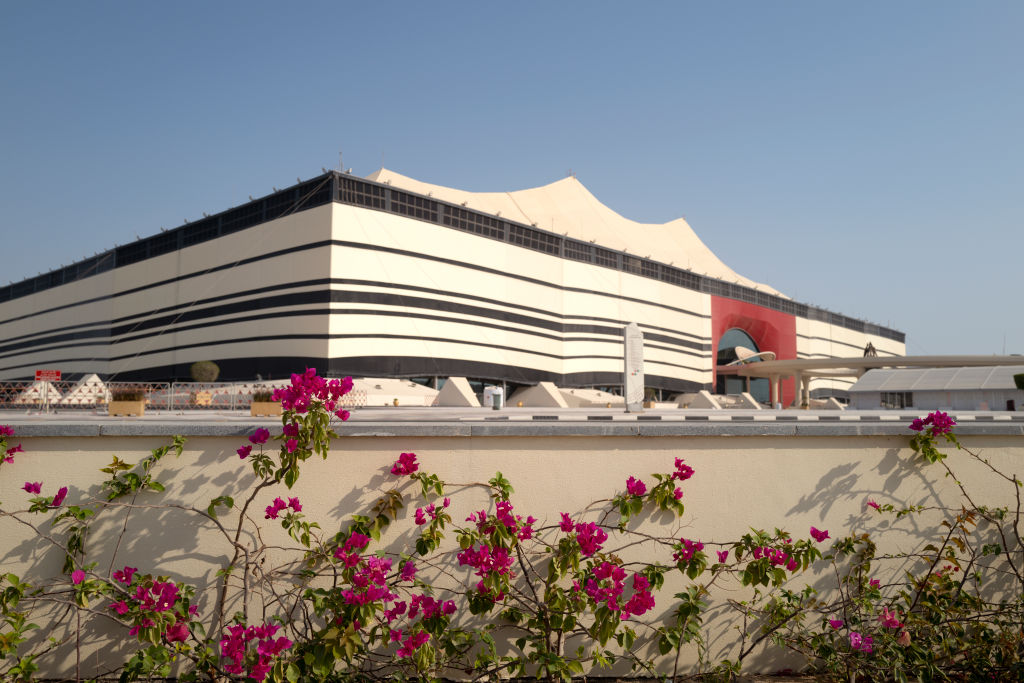
📍 Al Khor, Qatar
🏠 2021
🏟 68,895
Somewhere up in the roof, you can probably still find the ball Harry Kane struck from 12 yards out against France. Too soon?
The Al Bayt stadium was one of the venues which drew criticism for Qatar's treatment of migrant workers, holding nine games during the competition. Taking its curious cues from traditional Middle Eastern tent designs of the nomadic peoples of the Middle East, it was Qatar 2022's most remote stadium and perhaps the cosiest? A retractable roof fully shut it off from the outside world and encased games inside its dazzling design. – MW
45. Lumen Field

📍 Seattle, United States
🏠 2002
🏟 37,722
Fancy a nice quiet game? Avoid CenturyLink Field. Shared by the Seattle Sounders and gridiron neighbours the Seahawks, and only the second MLS stadium to feature in the FIFA video game series, it has set world records for crowd roars, topping out at 137.6 decibels for a Seahawks game in December 2013. To put that in context, it is roughly the same amount of noise a military jet makes when taking off.
Asked how it generates such a din, architect Jon Niemuth explained: “If you’re trying to create a container, the bigger the cup you can make it the better.” Built with two large stands either side of the field that tower over proceedings – and with the north end open to allow views of downtown Seattle, a mere mile away – it channels the noise directly onto the field. – KH
44. Providence Park
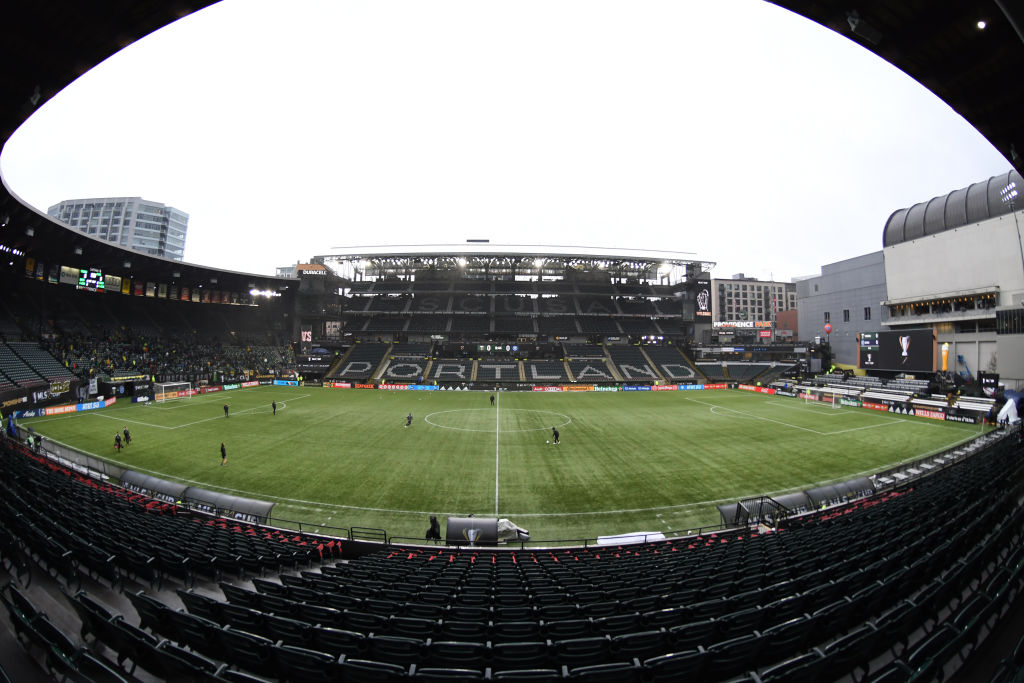
📍 Portland, United States
🏠 1926
🏟 25,218
Proving the passion this country has for the game, there's almost a cathedral-like feel to Providence Park. By the north end, the Timbers Army congregate and produce some of the most intricate and beautiful Tifos you will see in North America. In front of them, behind the goal, mascot Timber Joey – not a cuddly kids’ character, but a chainsaw-wielding lumberjack – saws off a slice of log to present to each goalscorer.
When the rain is pelting down (as it often does in the region) and the fans are singing, nothing else matters – and part of that is due to this wonderfully historic building that the Timbers call home. – KH
43. Estadio Hernando Siles
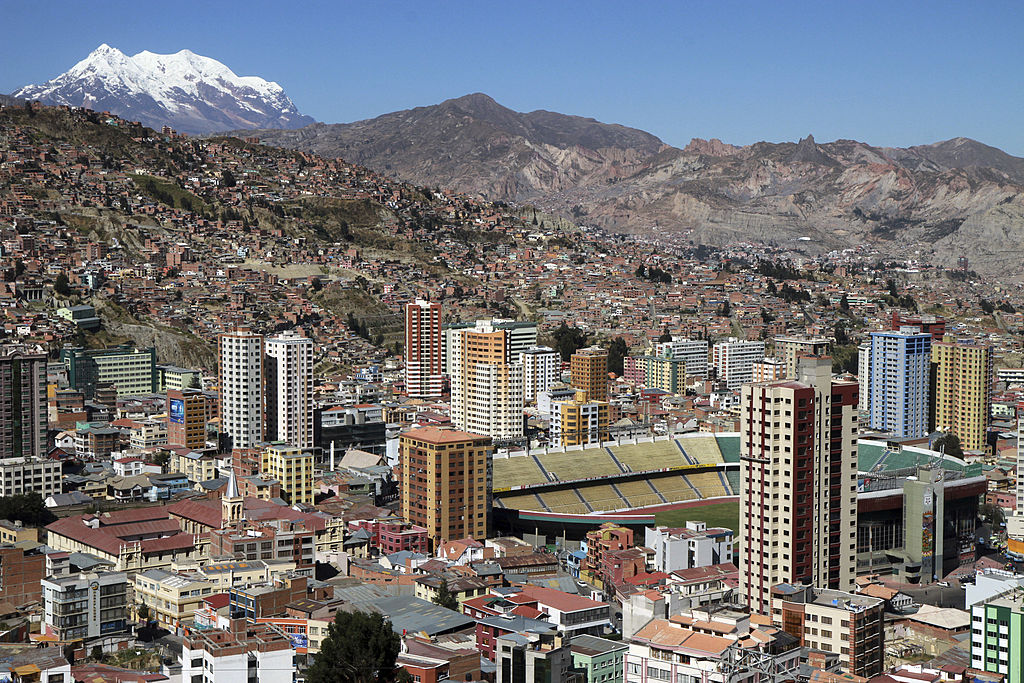
📍 La Paz, Bolivia
🏠 1930
🏟 41,143
Like climbing Everest or walking in Antarctica, attending a Bolivia game here is a must for adventure-seekers – at 3,601 metres above sea level, international football has never been closer to the clouds. Visiting players (and fans) are often affected by the altitude, which produces lack of air, vomits and headaches. In 1993, Brazil suffered their first ever loss in a World Cup qualifier here, and a Maradona-managed Argentina were famously thrashed 6-1 in 2009. But despite FIFA banning international football above 3,000 metres, Bolivia’s ageing national stadium was given immunity. Rightly so. – MM
42. Plough Lane
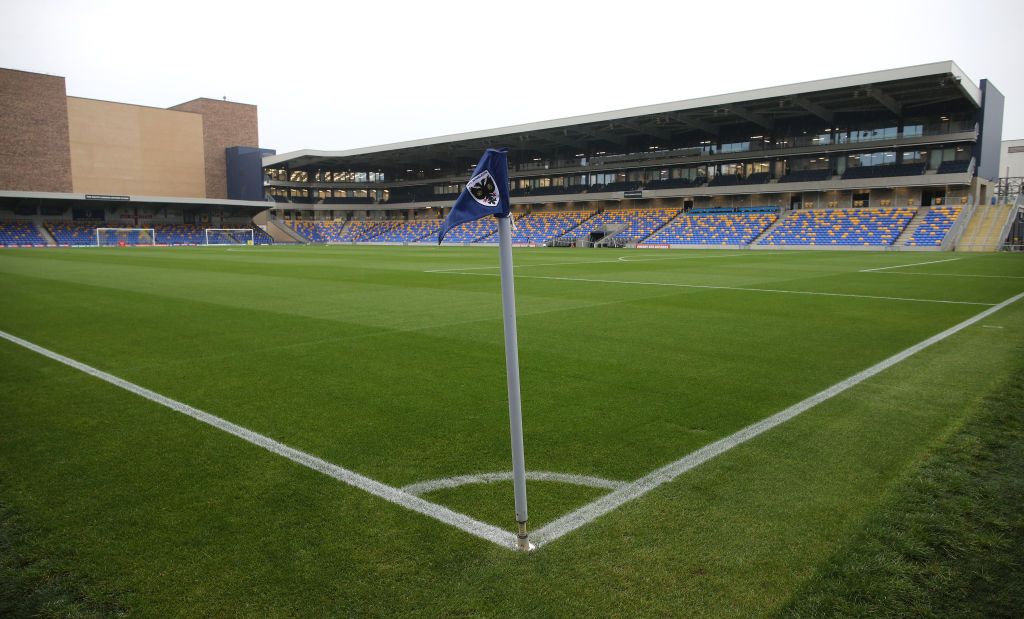
📍 London, England
🏠 2020
🏟 9,215
It wasn't known as the Cherry Red Records Stadium when Wimbledon moved in. The original Plough Lane was home to the Dons for almost 80 years before being sold behind fans' backs. They expected a more modern home: they didn't expect one 70 miles away.
The return to Plough Lane in 2020, some 200 yards from the original, was crowdfunded by the fans. It's proof if ever you needed it that location matters. The views from the new Lane, for Wimbledon fans at least, are perfect here. – MW
41. Baku Olympic Stadium
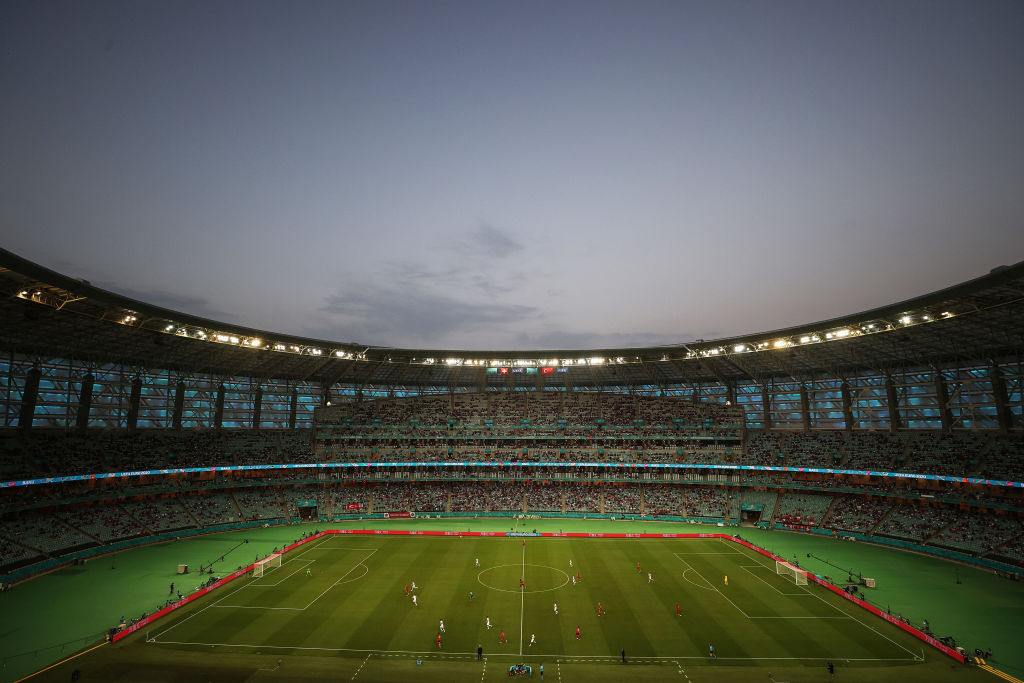
📍 Baku, Azerbaijan
🏠 2015
🏟 69,870
Hubristically named the Olympic Stadium despite Baku having neither hosted the games nor announced plans to do so in the near future, this huge structure has made headlines, hosting Euros games and Chelsea tonking Arsenal in the Europa League final.
But nestling on the Caspian Sea 2,200 miles east of UEFA HQ, it’s closer to Bangladesh than it is to fellow Euro 2020 hosts Bilbao. Fans accessing the ground generally have to take the elaborate – in decoration, not comfort – Baku metro due to its location outside of the city centre, but once there they can enjoy one of the most modern stadia around. The design is as slick as the nearby oil. – JF
40. Old Trafford
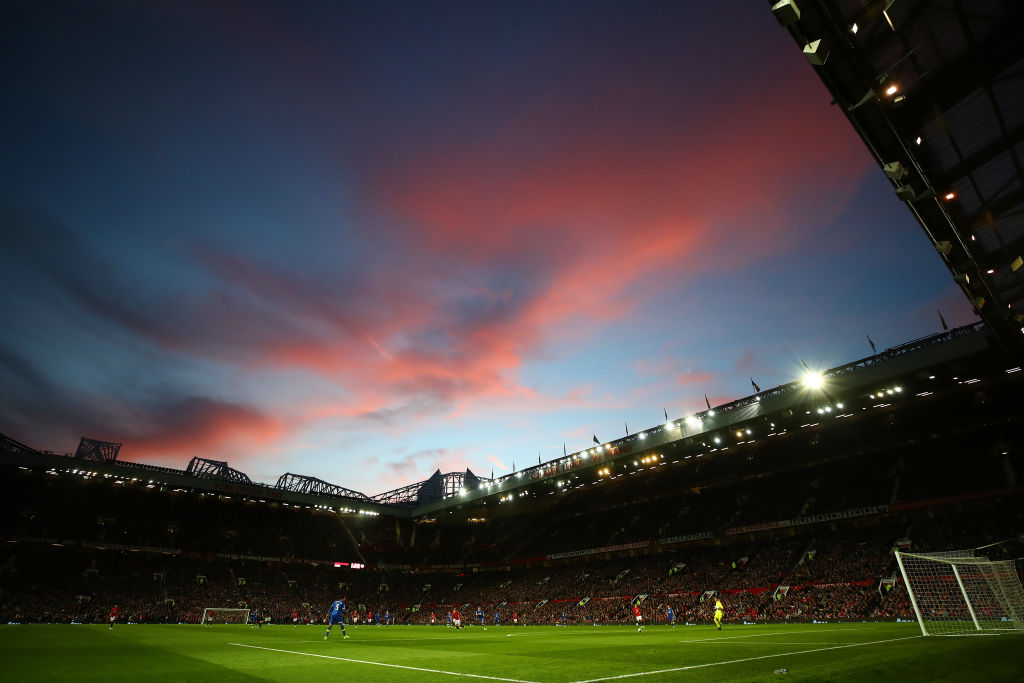
📍 Manchester, England
🏠 1910
🏟 74,310
The Theatre of Dreams, as coined by Sir Bobby Charlton. The Castle of Nightmares for many a visitor. On the stadium tours, even non-United fans get caught up in the history and nostalgia draped across posters, tributes and wall murals in the inner sanctums of the Premier League’s biggest stadium.
With their former Bank Street Ground blighted by poor pitch conditions and fumes from nearby factories, United’s then-president John Henry Davies lent the club the money to relocate to a patch of ground near to the Bridgewater Canal, Old Trafford. Even back then, rival fans moaned about their wealthy counterparts. Becoming chairman upon saving the cash-strapped club in 1902, Davies had overseen a change of name from Newton Heath to Manchester United, and colours from green and yellow to red and white; now, he lent them £60,000 – £5m in today’s money – to move home. No wonder other fans called the club ‘Moneybags United’.
Davies hired the popular Scottish architect Archibald Leitch – who had a hand in the design of some 20 football stadiums around the time, helping to build Ibrox, Anfield, Twickenham, Hillsborough, White Hart Lane and more. The development was completed in 1909 but officially opened early the next year. Old Trafford was born. – GM
39. Stadion An der Alten Forsterei
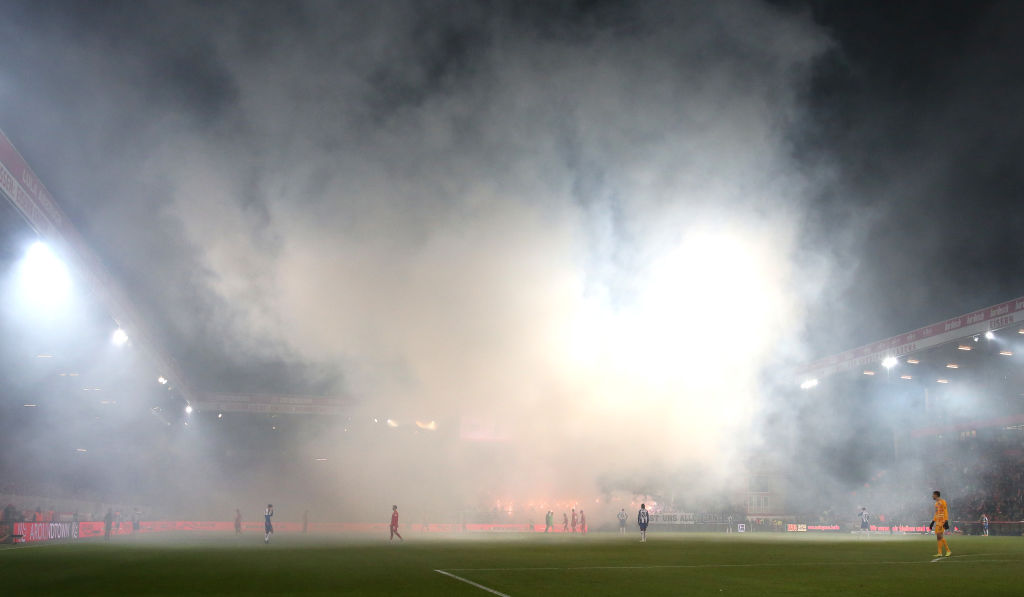
📍 Berlin, Germany
🏠 1920
🏟 22,012
Union Berlin’s brilliant ground won’t be winning architecture awards, but you can’t design charm like this. Nestled in a clutch of forest in Germany’s capital city, the second-tier side’s home has gone through some rough times: in 1966 it was expanded to its current capacity, but the club couldn’t afford its upkeep in the underdeveloped East Germany and only in 2008 – long after the nation’s reunification – was its cinder terracing replaced with concrete, a roof built, undersoil heating installed and a modern scoreboard introduced.
But that was no ordinary building work: most of it was done with the help of around 2,300 Union fans who volunteered their services to bring their team’s stadium into the 21st Century. It’s those same fans who create a racket on matchdays, and who only three seasons earlier had donated their blood to raise the money required for a league licence.
Since 2003, meanwhile, the stadium has hosted its famous annual Christmas carol singing event. In 2014, fans were invited to bring their sofas to watch Germany’s World Cup-winning run. This, as you can tell, is no ordinary club – and certainly no ordinary stadium. – JB
38. Veltins-Arena
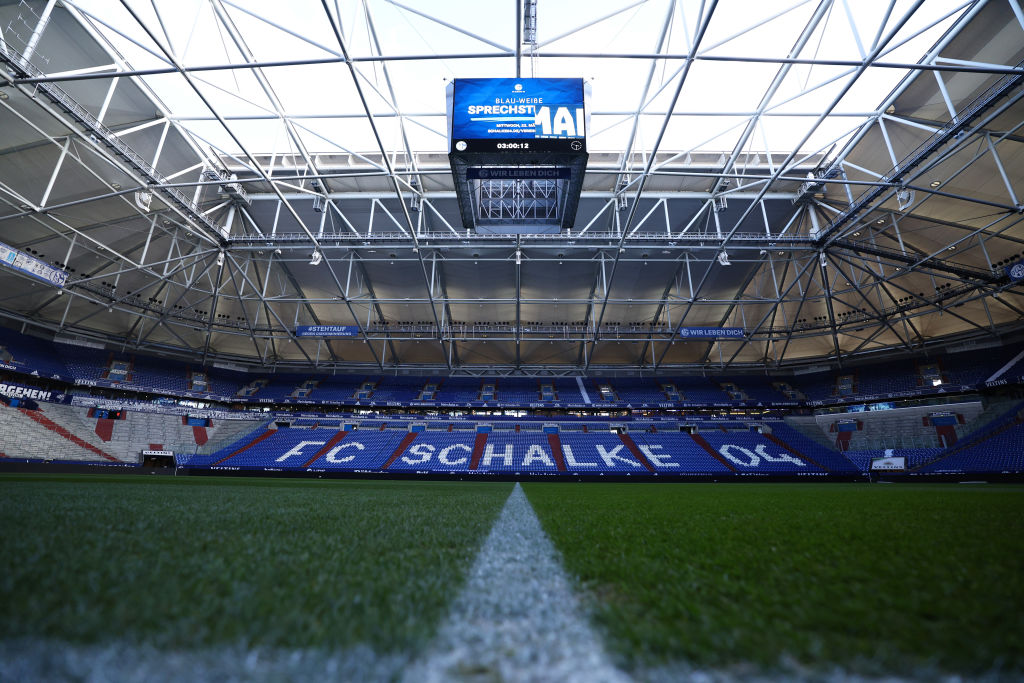
📍 Gelsenkirchen, Germany
🏠 2001
🏟 62,271
Schalke’s modern home is among the world’s most technologically advanced – which is perhaps to be expected for a stadium that cost €191m to build in 2001. Its retractable roof is impressive in itself, but it also has a slide-out pitch that’s movable in four hours. Marry that with its centrally suspended scoreboard and one of the coolest tunnels around – celebrating the region’s coal-mine heritage – and the Veltins-Arena is a far cry from its outdated Parkstadion predecessor.
Before hosting five games at the 2006 World Cup – including England’s penalty shoot-out defeat to Portugal in the quarter-finals – what was then the Arena AufSchalke welcomed Porto and Monaco for the 2004 Champions League Final which saw Jose Mourinho & Co. crowned kings of Europe. – JB
37. Emirates Stadium

📍 London, England
🏠 2006
🏟 60,704
In FFT's run-through of the best British stadiums in 2021, we declared of the Arsenal stadium, "Those who mock have never heard it rock". Well, in the two years since that compendium, Gooners sure have seen it rock a little more.
When the Emirates Stadium opened in 2006, it was a pinnacle of modern architectural achievement in English football: a Luz-looking, glassy bowl with a slim middle tier for hospitality, beautifully curved slopes and a dressing room co-designed by the manager. But there was something that always felt a little… empty. Was it the decline of the team? The fact that they built this for the middle class? The surface at N7 is as immaculate as N5's Highbury down the road – the atmosphere has taken a little longer to get there.
Through 'Arsenalification' – installing an Ashburton Army, reflecting fans in murals around the grounds and, y'know, the team resembling some of Arsenal's better ones, now – the Emirates is finally befitting of the hype with which it came, when Arsene Wenger stood at ground zero on the construction site in a hard hat. It doesn't just feel like home, now: it feels quintessentially Arsenal's home. – MW
36. Stadion Narodowy
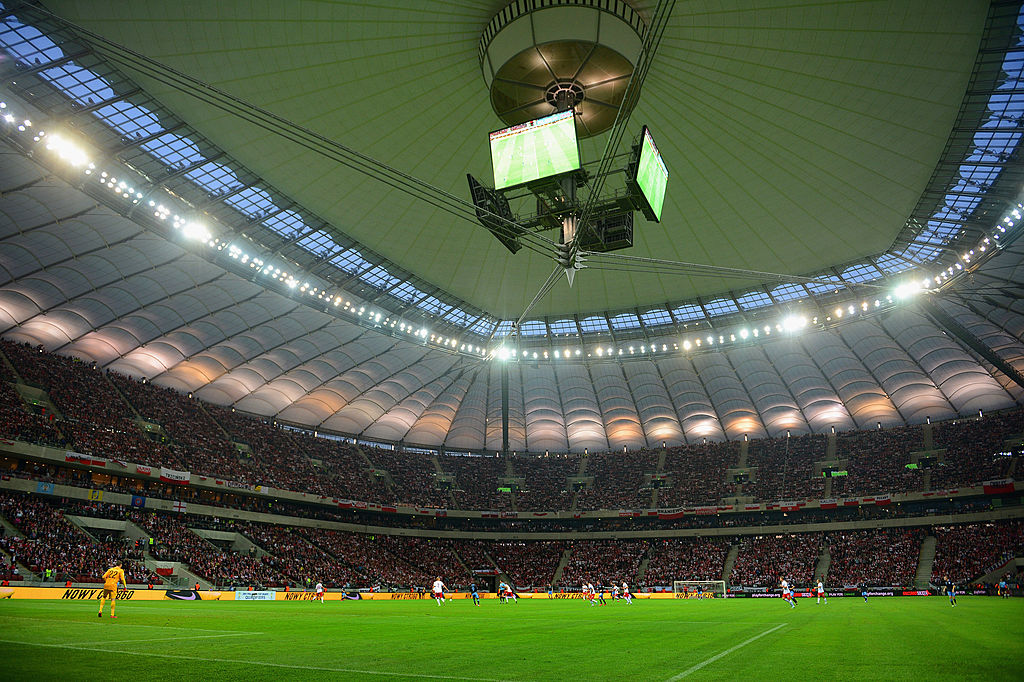
📍 Warsaw, Poland
🏠 2012
🏟 58,580
Translated simply as ‘national stadium’, the £400m arena was built for Euro 2012 and features a particularly dramatic retractable roof, which unfolds from a nest suspended above the centre of the pitch.
The only problem is the roof can’t be closed while it’s raining, and no-one thought to check the weather forecast before their World Cup qualifier with England in 2012. The heavens opened and ITV viewers were forced to watch an hour of Adrian Chiles desperately filling air-time, before a delayed kick-off became match officially postponed and we could all watch a rerun of Midsomer Murders instead.
The stadium’s circular exterior features a red and white colour scheme designed to imitate a waving Polish flag, and the venue towers over the adjacent River Vistula that separates it from Warsaw’s city centre. The UEFA Category 4 stadium was built on the site of the dilapidated 10th Anniversary Stadium and hosted the intriguing 2013 Science Picnic as well as the 2015 Europa League final – won by Sevilla, as usual. – CF
35. St James' Park
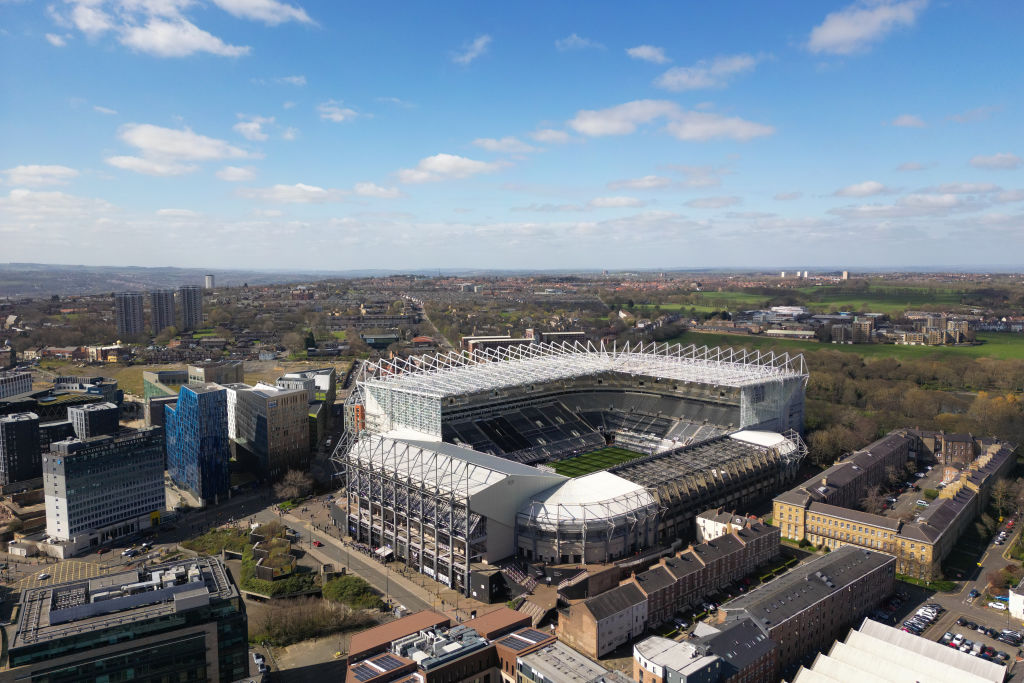
📍 Newcastle, England
🏠 1892
🏟 52,305
In world of identikit out-of-town sports bowls, St James’ Park’s charm as a proper city-centre stadium endures. Perched at the top of a hill overlooking the one-club, football-mad Toon like a castle, its somewhat lopsided, skewed appearance is a product of circumstances: unable to expand in certain directions, it has modernised in a uniquely asymmetrical manner.
Like Anfield, St James’ Park predates its famous tenants: football has been played here since 1880, whereas United were formed in 1892. Originally built on grazing land, close to the area where public executions were carried out – hence the Gallowgate End’s macabre moniker – it is a testament to overcoming planning permission nightmares.
Anyone with vertigo is advised against a seat high in the Leazes End, but otherwise, matchday here is a joy: the proximity to the station; the pint in The Strawberry or Shearer’s beforehand, and an old-school volume level that the imposing stands trap effectively – and defies a difficult era in which this proud place briefly and moronically became the Sports Direct Arena. – NM
34. Soccer City
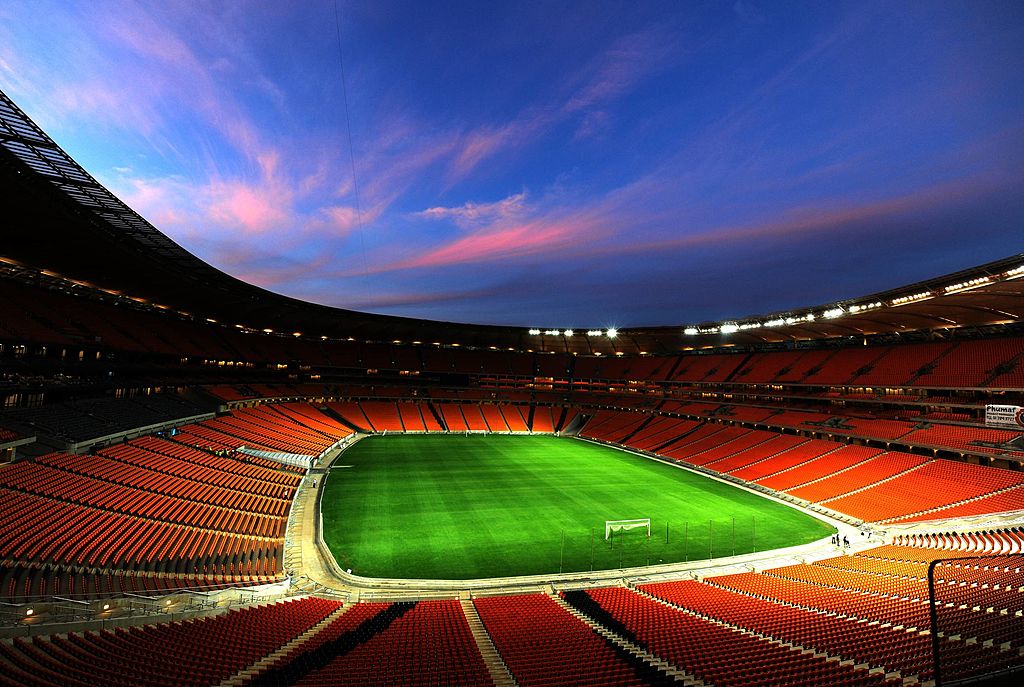
📍 Johannesburg, South Africa
🏠 1989
🏟 94,736
Johannesburg's FNB Stadium became the largest in Africa when it reopened, branded Soccer City, for the 2010 World Cup. Its capacity was reduced to 85,000 for that tournament but that failed to detract from its atmosphere both inside and out.
Thrilling to behold when lit up, it is modelled on a calabash, a kind of African pot, and certainly resembled a cauldron within – particularly when Siphiwe Tshabalala scored the tournament's first goal and when Ghana carried African hopes in the quarter-finals against Uruguay. Situated outside the centre of town, near Soweto, it has remained in regular use since the World Cup final, hosting several games at the 2013 Africa Cup of Nations. – NA
33. Sukru Saracoglu
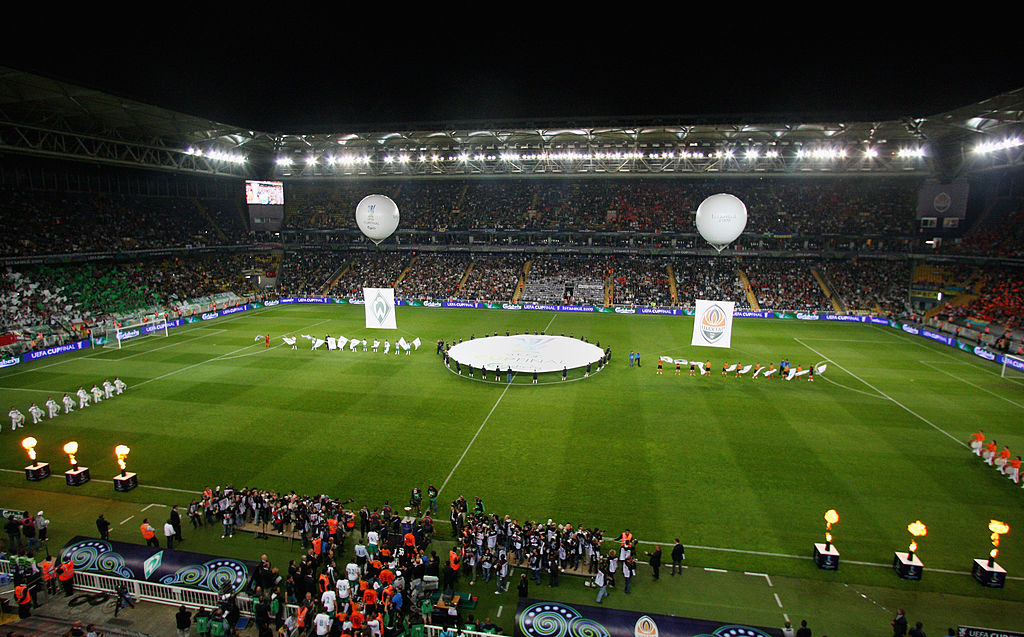
📍 Istanbul, Turkey
🏠 1908
🏟 47,834
The birthplace of Turkish football: the site upon which Fenerbahce currently operate was once known as the Field of the Priest – and was where the original Istanbul Football League kicked off soon after Englishman Henry Pears brought the game to the region.
It’s since ticked off numerous other records: Fener became the first Turkish club to own their stadium, which soon became the country’s largest. It has been systematically dismantled and rebuilt, one stand at a time between 1999 and 2006, but has preserved what made it special: a straightforward, straight-sided box, it’s hugely imposing, but with all the bells, whistles and legroom you’d expect from a UEFA Category 4 Arena once you’re inside. – NM
32. Millerntor-Stadion
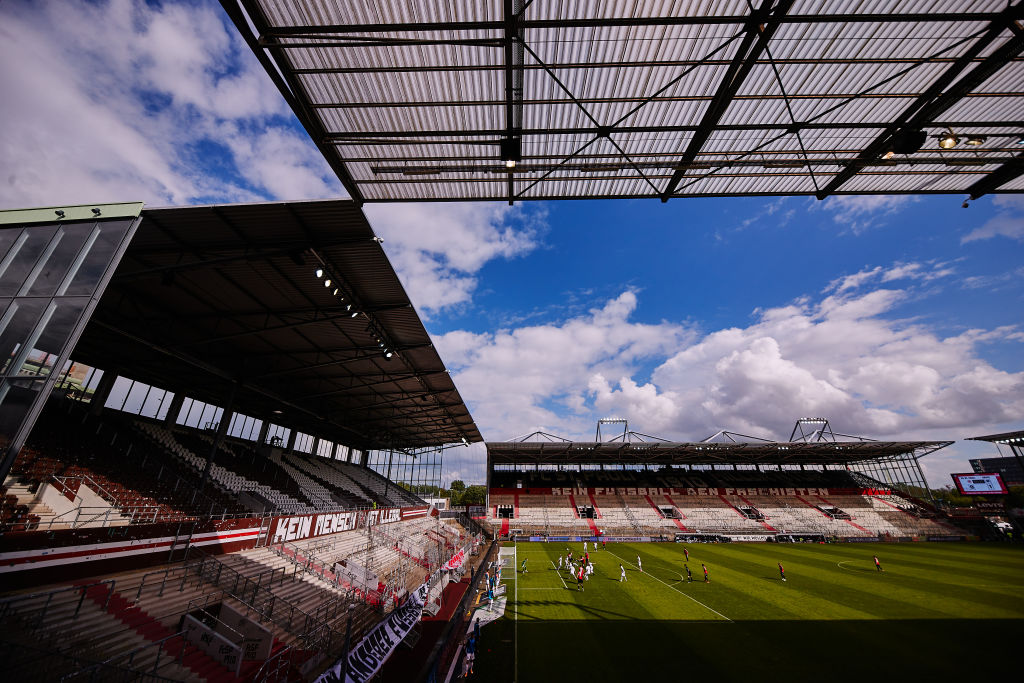
📍 Hamburg, Germany
🏠 1963
🏟 29,546
Sausage train. Need we say more when explaining why the German zweite bundesliga outfit’s ground features here? How many other stadiums have a stand containing personal beer pumps located under each seat and a train running past serving hot German sausage every five minutes?
If that doesn’t get your pork juices flowing, then how about the renowned ambience in situ at one of Germany’s most popular ‘kult’ clubs? In the December 2015 issue of FourFourTwo we said its club shop is arguably the best in the world – and that’s before you even get into the stands, wherein a cracking match atmosphere marries football passion and heavy metal music with skull-and-crossbones flags. – GM
31. Cairo International Stadium
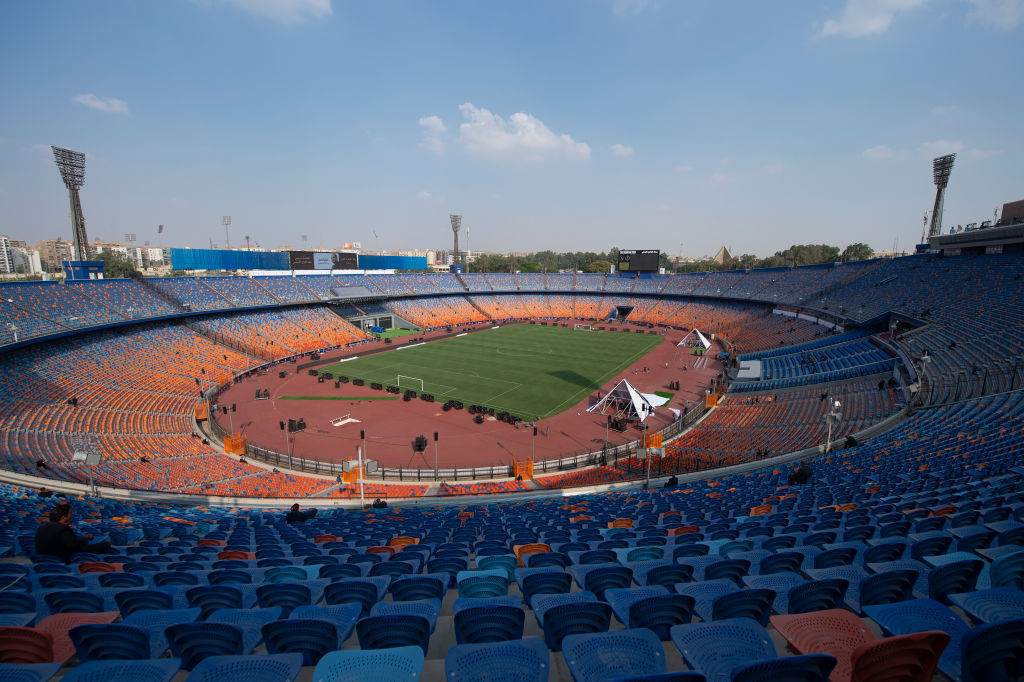
📍 Cairo, Egypt
🏠 1960
🏟 75,000
One of the largest and loudest stadiums in Africa, the Cairo International Stadium had a reputation as a wild, exciting and sometimes dangerous venue before its renovation in time for the 2006 Africa Cup of Nations.
Huge crowds used to cram inside, often far beyond its official capacity: at least 120,000 fans are said to have taken in the 1986 Africa Cup of Nations Final, in which the host nation defeated Cameroon. It has been tamed slightly since then, although you wouldn't have known it when Egypt won the 2006 tournament, this time against Ivory Coast, on a febrile night in the capital.
The stadium has held many Egyptian derby fixtures between Al Ahly and Zamalek – one of world football's unmissable occasions before tragic recent events intervened in the country – and remains the physical and spiritual home of a national team currently looking to scale its old heights once more. – NA
30. Stadio Luigi Ferraris
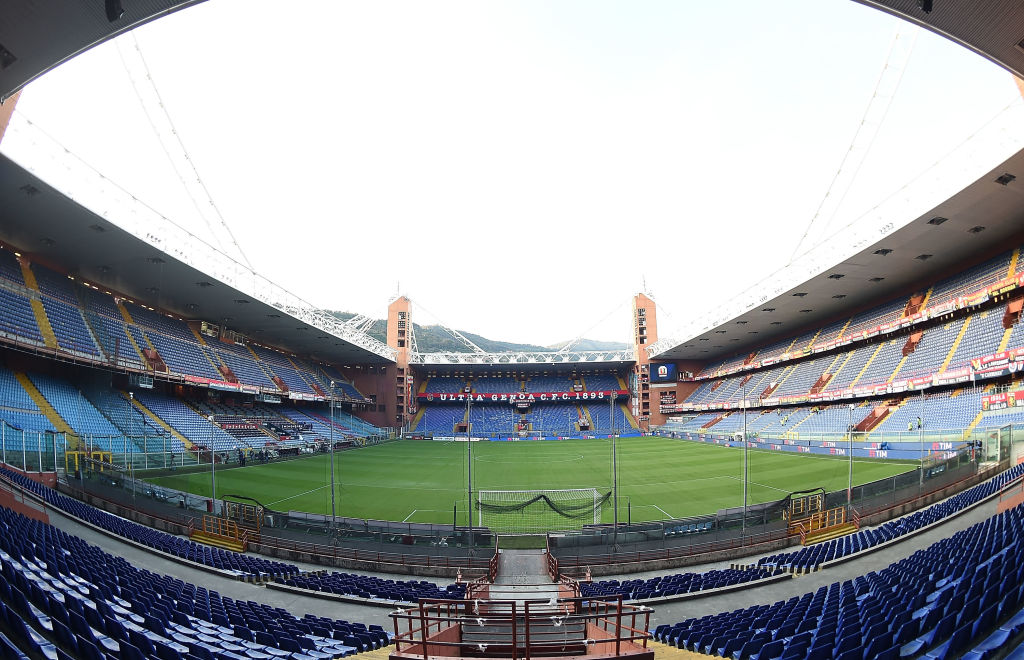
📍 Genoa, Italy
🏠 1911
🏟 33,205
Unlike many of Italy’s biggest stadiums – often huge concrete bowls built on the outskirts of town – the Luigi Ferraris is located in the centre of the city. Its lack of running track helps lend a very English feel to its matchdays... as do the supporters, especially when Genoa fans launch into You’ll Never Walk Alone – in English.
Whether Genoa or their co-tenants Sampdoria are at home, the atmosphere is among the best in Europe. Fans of both teams often deliver stunning choreography, with huge displays covering either end of the ground and the derby between them is one of the most underrated in Europe, showcasing this wonderful venue at its very best. – AD
29. Lusail Stadium
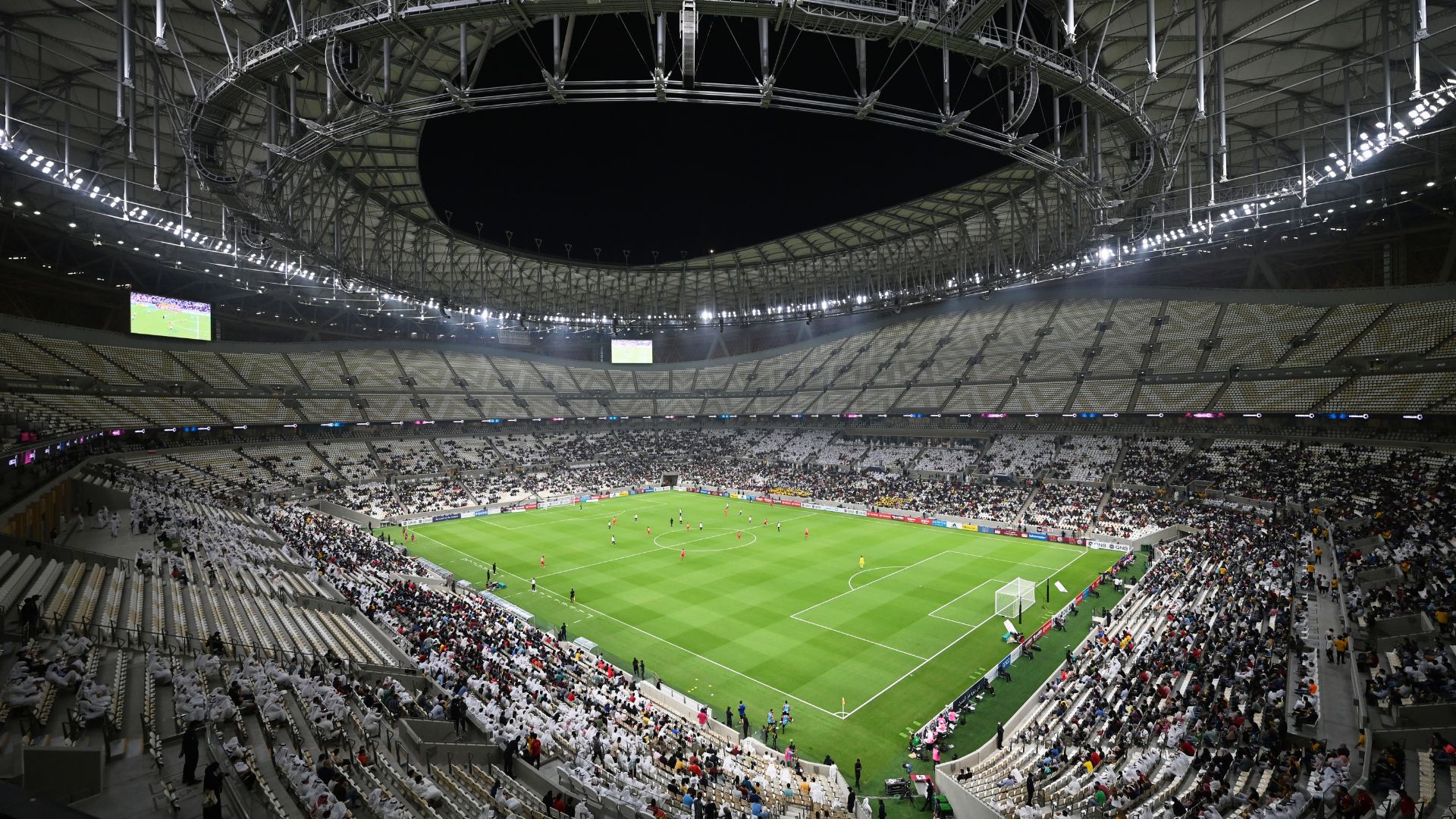
📍 Lusail, Qatar
🏠 2021
🏟 88,966
The Lusail’s luxurious golden exterior takes inspiration from intricate, decorative motifs you might see on traditional lights, bowls and art across the Middle East. It’s also a symbol of the Qatari culture to do absolutely nothing by half.
This faberge egg of a venue sits in solitude, adjacent to the equally futuristic Lusail City, so fans get an early glimpse from distance no matter the direction they approach. At night it glows, by day it sparkles under the desert sun. Inside it turns from gold to diamond white.
The internal structure will be modified now the World Cup has been and gone, but it will always be the place where Lionel Messi first touched that 36.5cm lump of gold his career deserved. – MK
28. Olympiyskiy
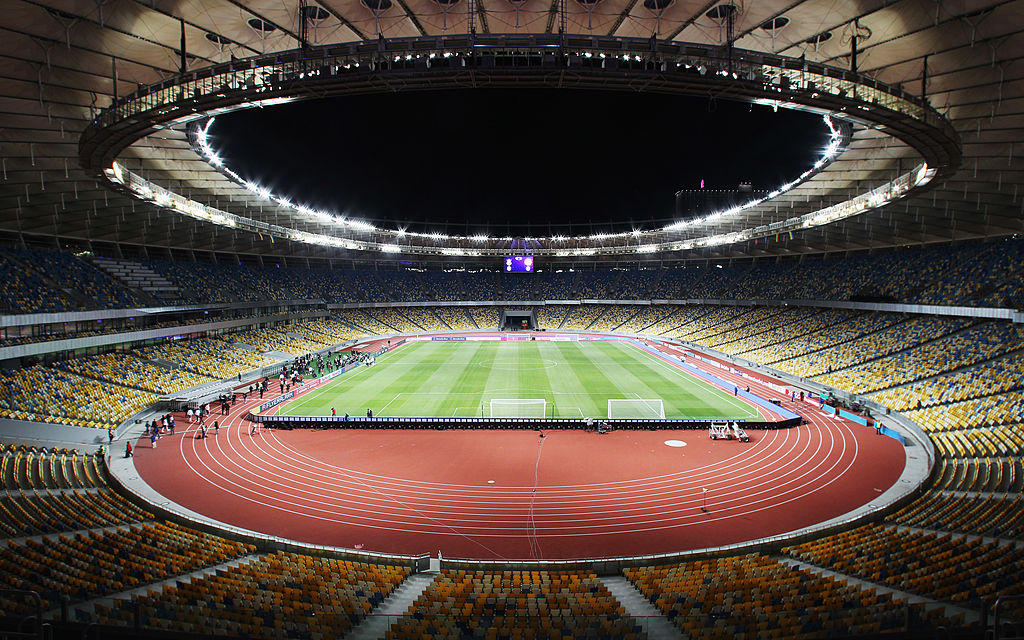
📍 Kyiv, Ukraine
🏠 1923
🏟 70,050
Renovated for Euro 2012, when it hosted the final, Ukraine’s 70,000-capacity national stadium was re-opened with a performance by Shakira, who is ready to open any stadium whenever, wherever.
In 1923 the venue started out life as the Red Stadium of Trotsky, later becoming the Republican Stadium of Khrushchev before being renamed the plain old Olympic Stadium in 1996. It was a justified, if delayed, moniker: the stadium had hosted some Olympic football matches during the Moscow Games of 1980.
The arena had previously been a rather sparse two-tiered bowl with no roof, not exactly aiding fans’ attempts to keep warm as winter drew near. Now it’s as modern as any top stadium in western Europe – it has a roof and everything, as well as a particularly dazzling circular exterior.
As well as Dynamo Kiev, Dnipro also played European matches at the UEFA Category 4 venue last season because of safety concerns elsewhere in Ukraine. – CF
27. Mestalla

📍 Valencia, Spain
🏠 1923
🏟 49,430
The Mestalla is on borrowed time. The fiscally delayed Nou Mestalla is still around the corner – but as nice as the new plans have looked, it will be a shame to leave the old place when they do.
The Mestalla is one of Spain’s best stadiums due to its steep banked stands and close proximity to the pitch creating an intimidating, somehow quite English atmosphere for visiting teams. It’s also walkable from the city centre.
Mestalla has been under threat before. In 1957 the River Turia burst its banks and flooded the ground, leading to a partial stadium collapse. In the 1970s the club considered relocation but opted to refurbish in time for Espana 82, for which it hosted all three of the host nation’s first-stage games. Nine domestic cup finals have also been held at the famous old ground. – GM
26. Singapore National Stadium
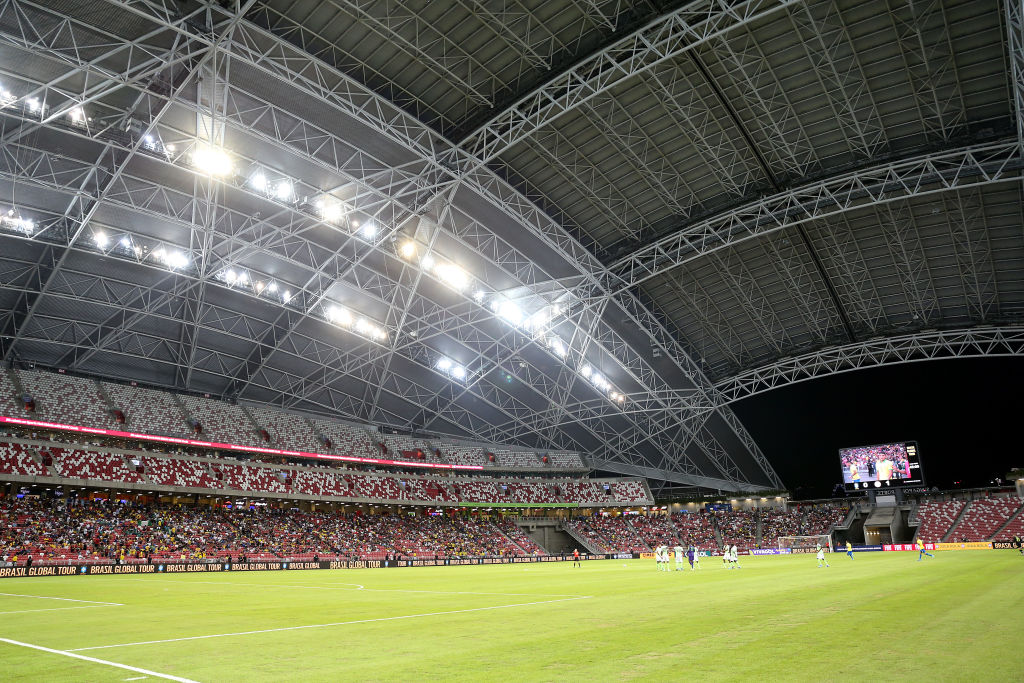
📍 Kallang, Singapore
🏠 2014
🏟 55,000
Considering the sweltering conditions typically presented in the Southeast Asian nation, it came as no great shock when a design with a retractable roof and air conditioning for the unimaginatively-named Singapore National Stadium got the nod. A truly modern stadium, it features configurable seating, a roof made of lightweight material and easy access to public transport – the best a reported S$1.87 billion (£875m) can buy.
It has proven a game-changer for Singapore in terms of being able to attract world-class talent to their shores. That was never more evident than in Neymar’s four-goal turn in Brazil’s 4-0 thrashing of Japan in front of a packed crowd in October, 2014. – JD
25. Juventus Stadium
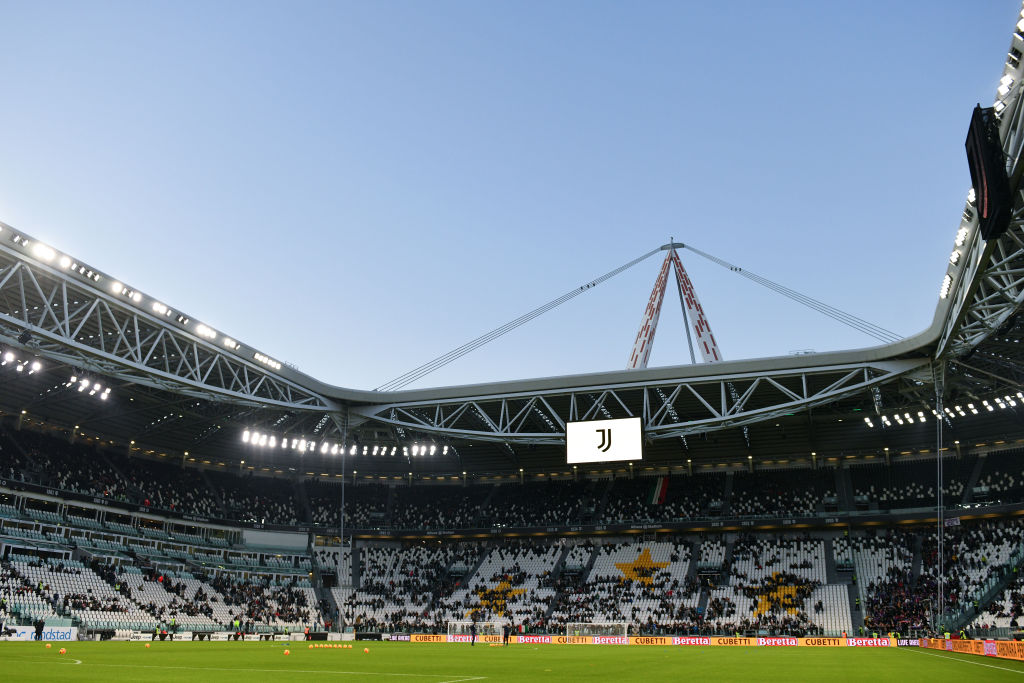
📍 Turin, Italy
🏠 2011
🏟 41,507
Owning their own stadium helped Juventus set a standard the rest of Serie A has been unable to match. They were unstoppable from the second they moved into the Juventus Stadium – we do miss the Stadio Delle Alpi, though – and as the only major Italian club to own their own home, they reaped the financial rewards of their modern facility.
The Turin giants were savvy enough to buy the Delle Alpi site from the local council for €25m in 2003 – and wise enough to realise that, with the city’s population falling, they didn’t need to replace the 70,000-capacity Italia 90 stadium like-for-like. As a result they have a bustling, atmospheric stadium in which even the most distant seat is only 49 metres from the action.
That it opened in September 2011 with a match against Notts County was a nice nod to the club’s history: the Bianconeri hosted the side responsible for Juve’s switch to their now-synonymous black-and-white shirts back in 1903. – AD
24. Estadio da Luz
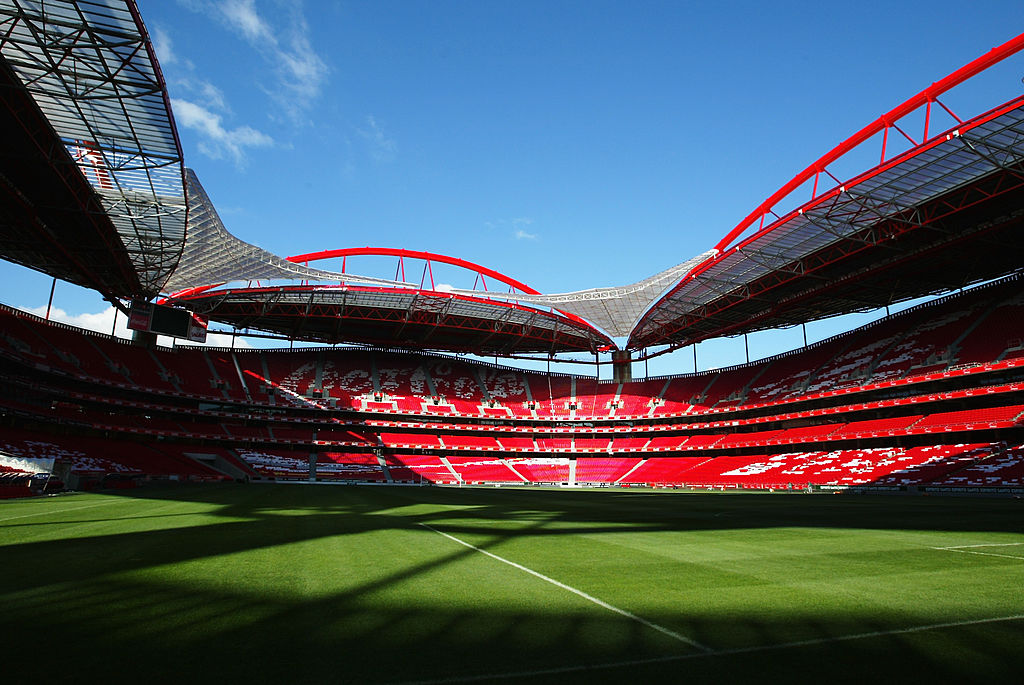
📍 Lisbon, Portugal
🏠 2003
🏟 64,642
When it came to building a brand spanking new stadium ahead of Euro 2004 for the most popular club in the football-obsessed country that is Portugal, there was no option: it had to be something special. The designers did not disappoint.
Four layers of brilliant red-swathed stands swoop around the playing field, the lowest of which is very close to pitchside. The outstanding conditions for watching the football and imbibing the atmosphere are ensured by a complete absence of view-obstructing pillars and a beautifully balanced, shapely and symmetrical sound-retaining roof. Looking from the outside or above, the eye-catching curvaceous mesh of enormous red girders keeps the whole thing up and adds to the stunning aesthetics of the stadium which hosted the Euro 2004, Champions League 2014 and 2020 finals.
Perched above the main entrance of the venue, the stadium inherited from its synonymous predecessor the enormous statue of the club’s symbol, the Eagle, and on the ample concourse circling the ground is the statue of iconic club legend Eusebio. – TK
23. Estadio Monumental Banco Pichincha
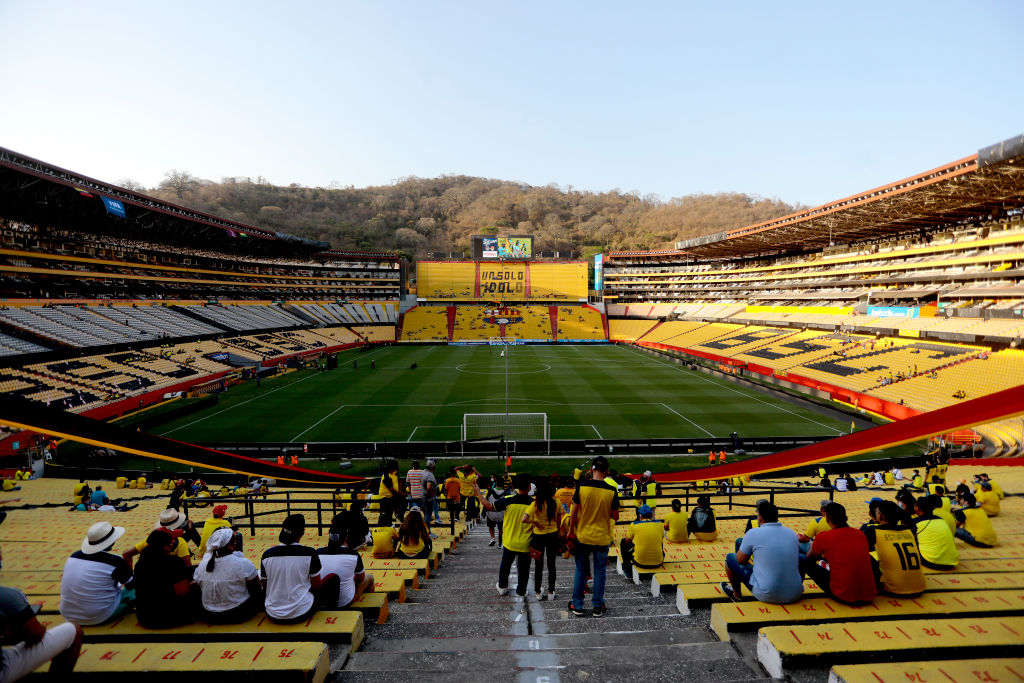
📍 Guayaquil, Ecuador
🏠 1987
🏟 59,283
From the air, it looks like a football pitch inside two giant square brackets. But once you step inside Barcelona’s massive stadium, you realise there’s much more than that. Not for nothing did Pelé call it “one of the most beautiful stadiums in the world”, a quote that now appears written on one of the walls, and signed by the Brazilian legend in 1993.
The imposing, yellowish structure is also known as El Coloso del Salado (The Colossus from the River Salado), and it was named among the most exciting grounds of the Copa Libertadores not only for the excellent construction and safety standards, but also for the atmosphere. – MM
22. Estadio Municipal de Braga
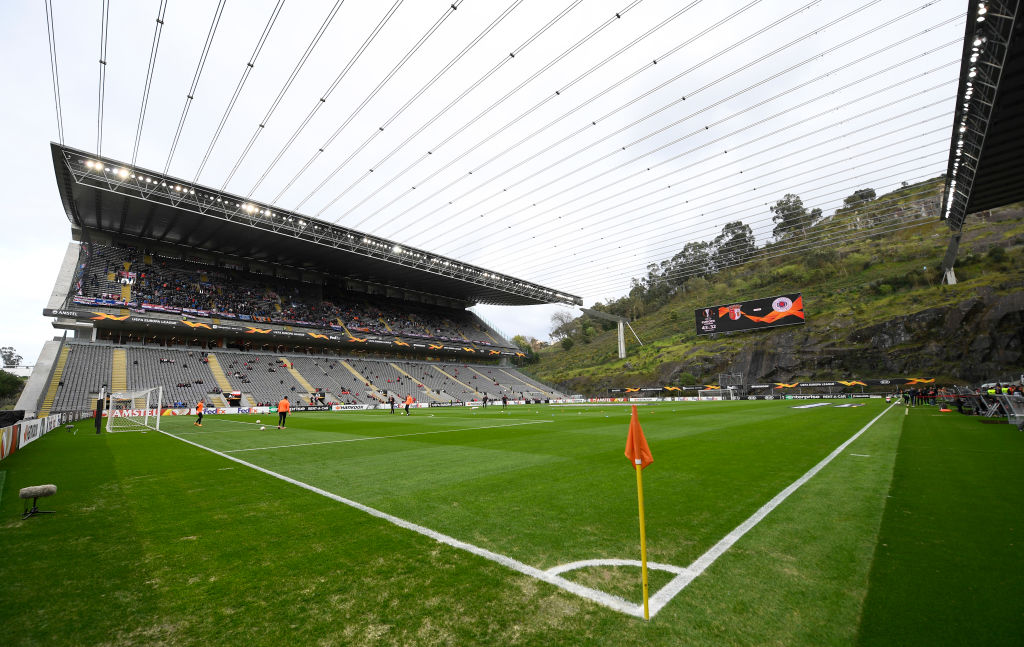
📍 Braga, Portugal
🏠 2003
🏟 30,286
The jewel in the crown of Portugal’s new set of stadiums built for Euro 2004, the mundane name of this truly extraordinary stadium is in stark contrast to its uniqueness and gobsmacking wow factor.
Built into a former quarry, the amazing feat of engineering first required the removal of 1,700,000 cubic metres of stone, to construct a two-sided stadium. Architect Eduardo Souto Moura (who was subsequently awarded the worldwide “Oscar for architecture” Pritzker Prize) said he believed football was a game that should be watched laterally, hence the decision to leave a rugged stone cliff untouched at one goal-end, while the other end provides a cascading view down over the River Cávado valley and the city of Braga.
The gigantic grey rooftops supported by 68 coupled prestressed steel cables and grey seating adds to the notion of that this is a temple for the ages, an integral component of the very earth in which it is implanted, rather than a football venue. – TK
21. Allianz Arena
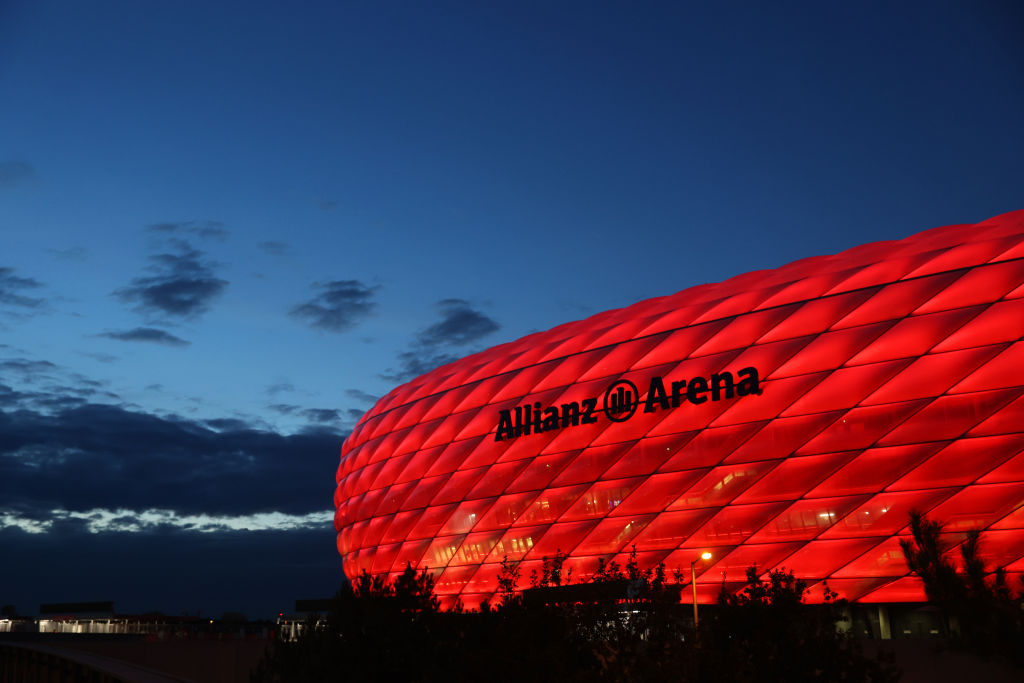
📍 Munich, Germany
🏠 2005
🏟 75,024
It was when the Allianz Arena began to cause 10 road accidents a day that the German authorities knew they had to act. There are few greater sights in football than the exterior of the Allianz on match night. On a clear evening, the shimmering lights from Munich's luminous Schlauchboot can be spotted from the Austrian mountaintops 50 miles away.
The safety clampdown did nothing to diminish the majesty of the €340m stadium. All of its three tiers were rocking as it helped to kick off the 2006 World Cup in style, Philipp Lahm's sixth-minute curler putting Germany on course for a 4-2 win over Costa Rica. It would also host the semi-final too, a less dramatic 1-0 victory for France over Portugal thanks to Zizou’s penalty. It's since hosted the Bayern side that thrashed Barcelona 7-0 on aggregate en route to Champions League glory in 2013.; it hosted Chelsea shocking them, too, 12 months prior.
More latterly, though, it has sometimes been labelled the Arroganz Arena amid protests that some of the stadium rules were not sympathetic to fan culture. Having the largest car park anywhere in Europe, comprising of 11,000 spaces, was all very well. As was a safe standing section for Bundesliga matches, as well as the relatively novel cashless stadium philosophy – with all food and merchandise inside the arena purchased only via an ArenaCard.
But basic items like megaphones and large pennants were banned, while the presence of a fence and safety nets in front of the Sudkurve, where Bayern's ultras are located, was also unpopular. Amid it all, though, Bayern the team have marched on regardless. There are few greater fortresses in world football than the Allianz in the Bundesliga.
20. De Kuip
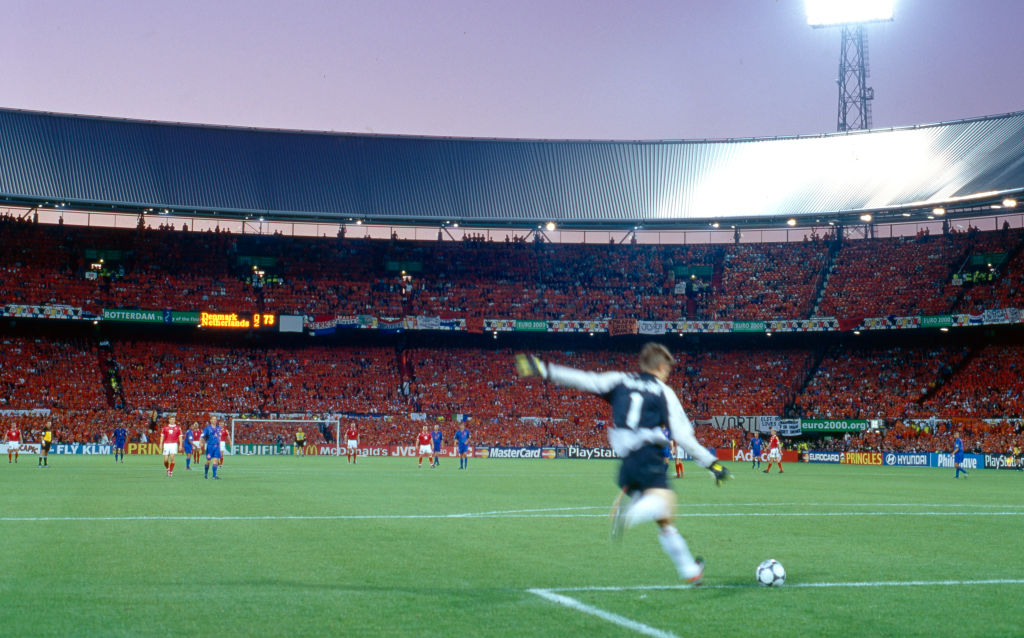
📍 Rotterdam, Netherlands
🏠 1937
🏟 51,117
Inspired by the old Highbury, the stadium more commonly known as De Kuip (The Tub) has been Feyenoord’s home since the 1930s and quickly became a football temple. Hosting 11 European finals over the years, it became a particularly fertile ground for English teams, hosting glory nights for Tottenham (1963), Everton (1985) and Manchester United (1991) in the Cup Winners’ Cup plus Aston Villa’s 1982 European Cup Final win against Bayern Munich.
None of this could have happened had the Nazis progressed in their plan to destroy the stadium, which had been occupied by their forces. The steel and glass structure survived and it’s one of the reasons its acoustic is unique. De Kuip is all about atmosphere. For players it’s quite special, too: the tunnel that leads to the pitch depicts Feyenoord legends lifting the European Cup, while the pitch itself reputedly has the best grass in the world.
After disappointing Dutch performances in the Euro 2016 qualifiers (all played at Amsterdam Arena), many fans wanted the Netherlands to play back at De Kuip. But the stadium faces its own problems, as discussions over its future continue. A year after their plans for building a new 85,000-seat stadium were rejected, Feyenoord announced the 70,000-seat redevelopment of De Kuip for 2015, but the plan was once again postponed. – MM
19. Azadi Stadium
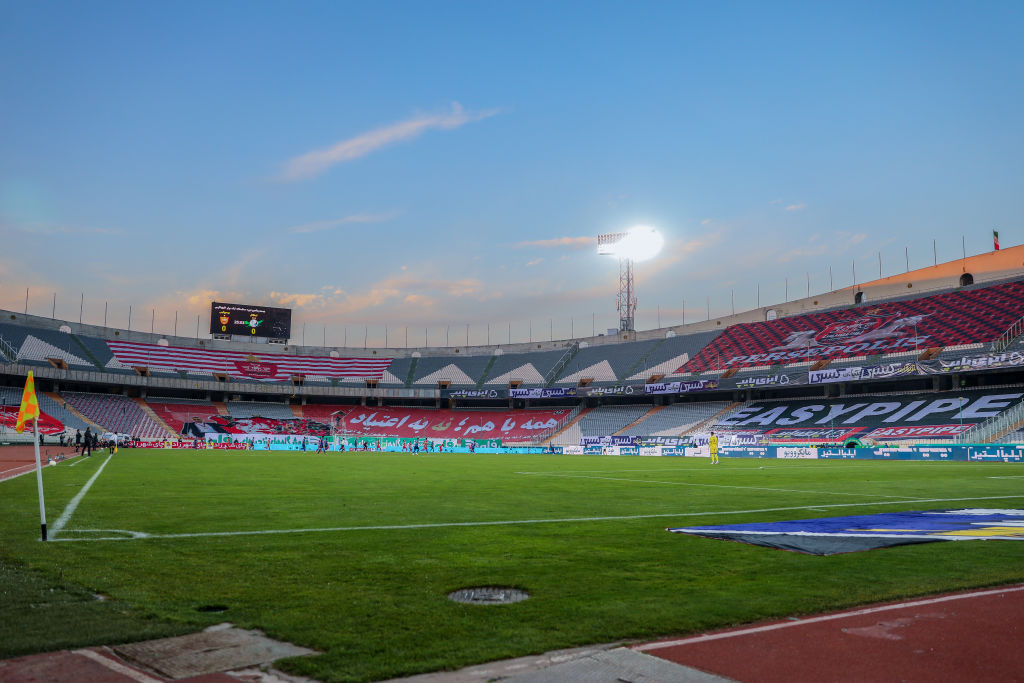
📍 Tehran, Iran
🏠 1971
🏟 78,116
Although not quite as big as it once was, the Azadi (Persian for ‘freedom’, renamed after the Iranian revolution) still generates an incredible noise despite having an athletics track and no roof.
First inaugurated in 1974 for the prestigious Asian games, it now hosts three teams, with players like former Villa and Bolton lefty Jlloyd Samuel having played there for Esteghlal in recent years. With a record attendance close to 130,000 for a game against Australia in the late 1990s, FIFA declared it the biggest-ever crowd for a World Cup qualifier.
Talking of international football, Iranian fans were lucky enough to see the legendary Ali Daei score 40 of his 103 international goals here over the years. Sadly, a 2003 renovation ended the days of such enormous crowds, but when at capacity it is still one of the most intimidating arenas to play in. – JF
18. Anfield
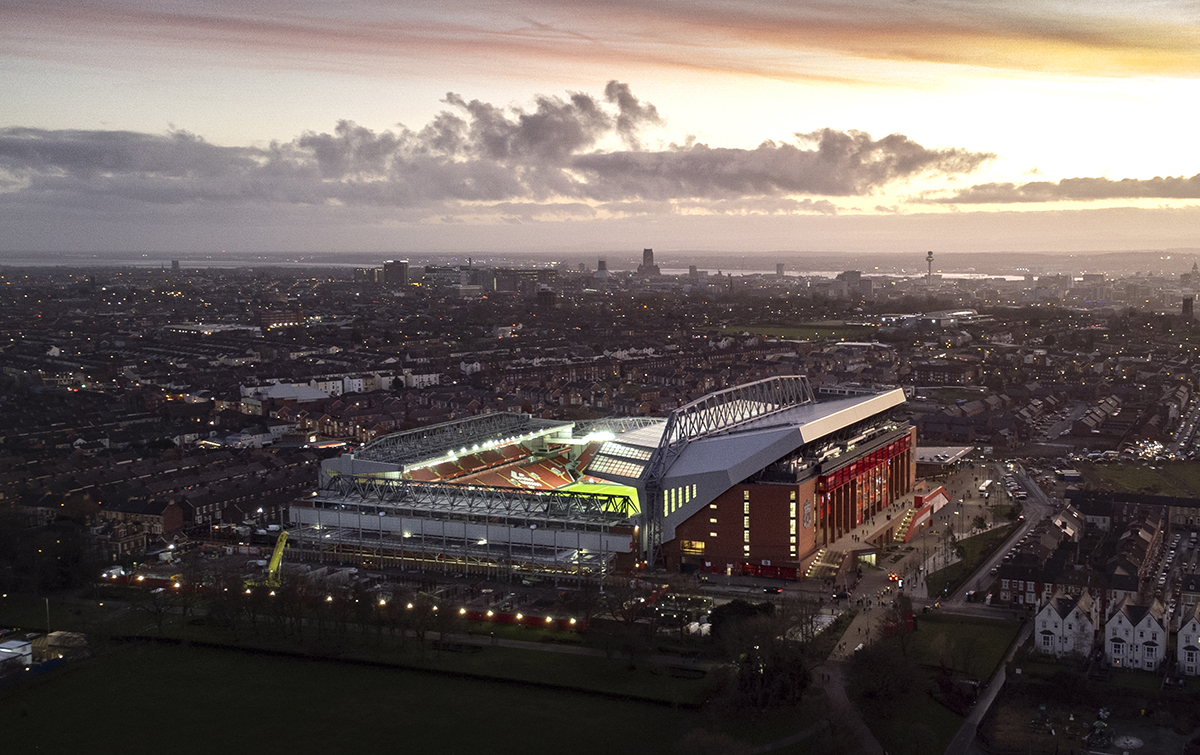
📍 Liverpool, England
🏠 1884
🏟 53,394
Older than the club itself – the ground was Everton’s from 1884 until the 1892 rent dispute that caused the creation of Liverpool FC – Anfield is one of football’s most evocative names, with the Kop one of its most famous stands.
It helped that the club spent two decades hoovering trophies, encouraging a colourful mythology around the stadium’s sacred spaces. Underneath the Main Stand, the revered Boot Room think-tank hatched the plans that prompted the 30,000-capacity Kop into delighted song: few terraces were so renowned for their wit and, frankly, intimidation of opponents and officials.
Much has changed since that golden period – the Boot Room is gone and the Kop now a 12,000-seater, while the Anfield Road and Kemlyn Road stands are now overhauled two-tiered affairs, the latter renamed the Centenary Stand – but the history remains. And so will the club, with relocation shelved in favour of expansion to as much as 59,000.
In recent years, it's been well worth getting in as many Reds as possible. – GP
17. Stade de France
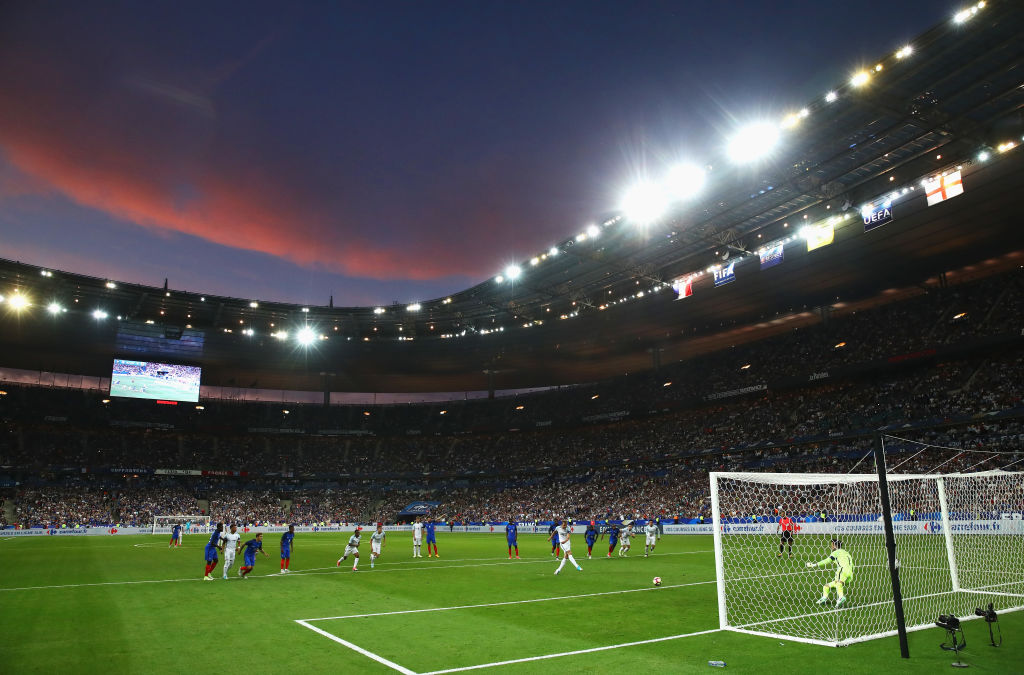
📍 Saint-Denis, France
🏠 81,338
🏟 1998
The fifth-largest stadium in Europe, the 81,000-capacity Stade de France played host to the only World Cup final that Zinedine Zidane managed to get through without headbutting anyone.
Opened in time for France 98, it turned into the glorious venue where Zidane used his head productively, nodding home twice in a 3-0 victory over Brazil in the final. It’s the only stadium to have hosted World Cup finals in football and rugby. Situated in Saint-Denis on the outskirts of Paris, accessible by metro, it was also the stage for Real Madrid’s 2000 Champions League Final victory over Valencia and Barcelona’s 2006 triumph against Arsenal.
Attempts to lure a club side on a permanent basis proved unsuccessful, with Paris Saint-Germain opting to stay at the more fillable 49,000-seat Parc des Princes. The Stade de France’s sheer size remains a sight to behold, particularly from the top tier. – CF
16. Celtic Park
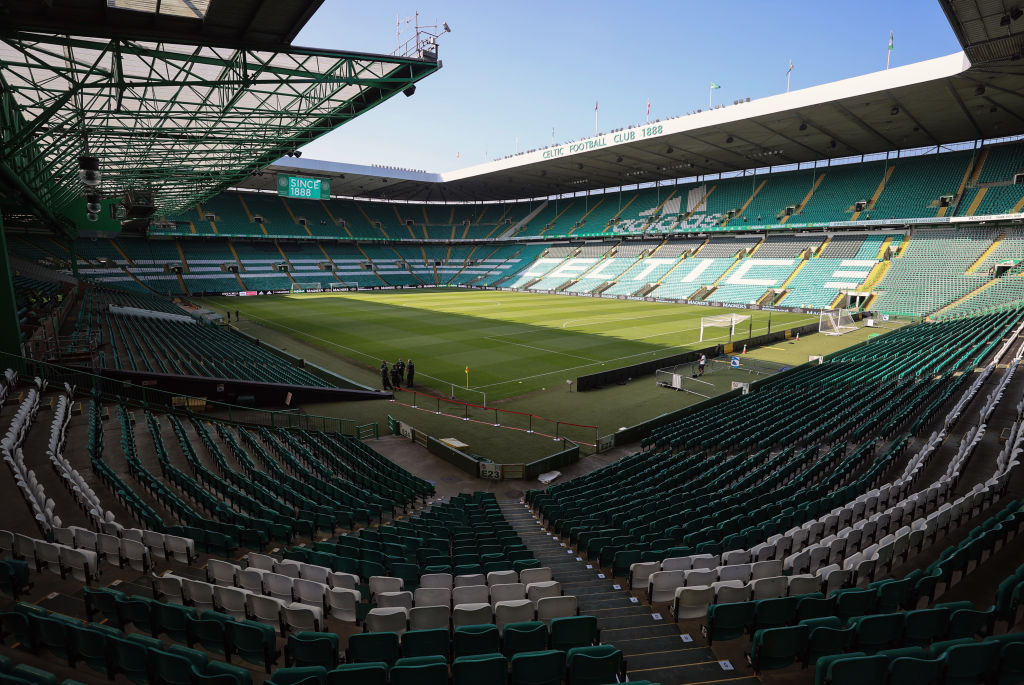
📍 Glasgow, Scotland
🏠 1892
🏟 60,411
No aficionado of football atmospheres can truly say they’ve savoured the best until they enjoy a trip to Paradise – particularly for an Old Firm civil war, where the volume can become truly hair-raising.
There’s history dripping out of the bricks at Scotland’s largest stadium, too – even if wholesale modernisation does mean that little of the actual structure erected in 1892 remains. Back then, it was a multi-sports venue with an athletics track and concrete loop for cycle races, but its traditional ties to Ireland were always in place: the first turf was brought over from County Donegal, and shinty was played as often as football.
Now, it’s a thoroughly modern all-seater that manages to somehow retain the raw madness of the old ‘Jungle’ (Northern Terrace). Aptly for a stadium with a stand cantilevered over a graveyard, there are ghosts in the air here too: of Jimmy Johnstone and Jock Stein – both immortalised in statues outside – and many more hooped legends who have given this place a mythic feel beyond its physical self. – NM
15. Stade Velodrome
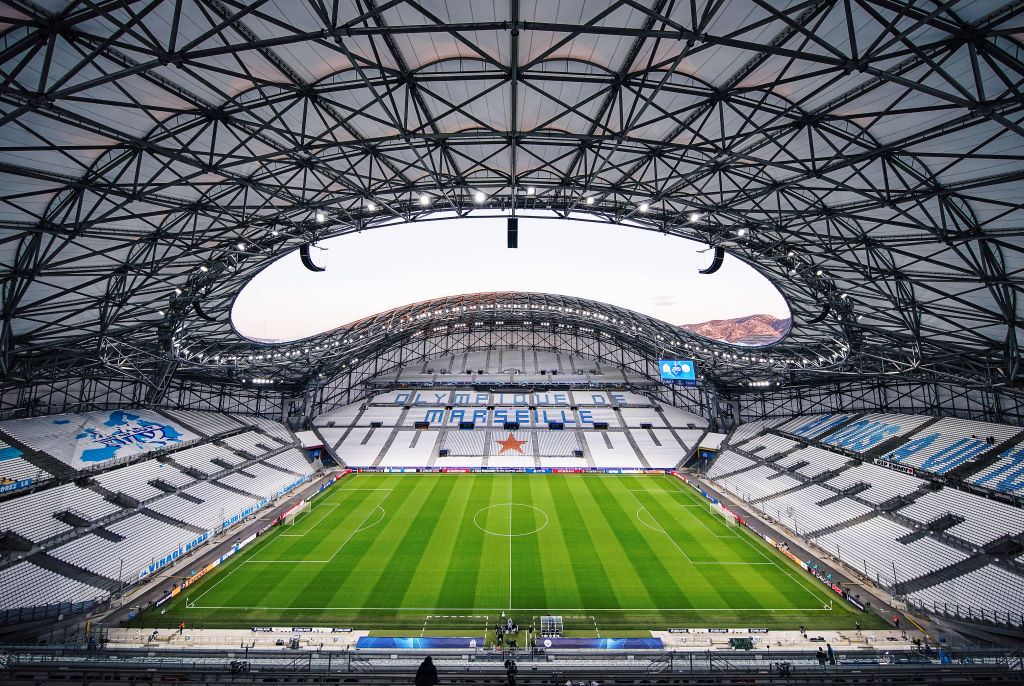
📍 Marseille, France
🏠 1937
🏟 67,394
In an age of uniform, box-shaped modern stadiums, the swooping curves of the Stade Velodrome stand out for all the right reasons. Initially constructed in the 1930s, it remains France’s biggest club football ground, and home to arguably its most successful team, Olympique de Marseille.
The Velodrome was renovated extensively for the 1998 World Cup, but required a further facelift to meet modern standards ahead of Euro 2016. That meant a 95% reconstruction of the western Jean Bouin stand, while the upper tier of the Ganay stand on the opposite side was also refitted. Both were necessary to accommodate the most striking change to the building come the end of restoration works in 2014: the fitting of an ellipsoidal roof.
Rather than masking the structure of the ground, as a roof can sometimes do, the smooth shape of the cover only further emphasises the uniqueness of the Stade Velodrome’s design. It also helps amp up the other distinguishing feature of this stadium: the noise of its passionate, renowned fans. – LR
14. Olympiastadion
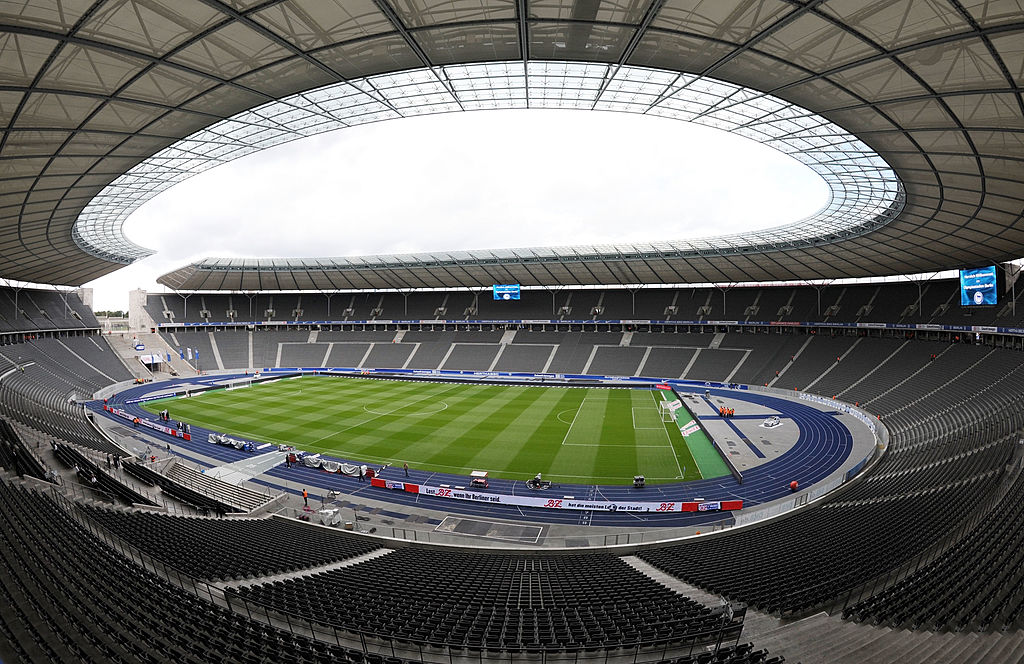
📍 Berlin, Germany
🏠 1936
🏟 74,667
You’ll be hard pushed to find a stadium steeped in history quite like Berlin’s menacing Olympiastadion. Built for Adolf Hitler’s 1936 Olympics and used first as a hub for Nazi propaganda, it was the setting of Jesse Owens’ dazzling gold medal wins in the 100m, 200m, 4x100m relay and long jump which flew in the face of Hitler’s Aryan ideals.
That history is still tangible. Although it is now a multi-purpose arena attracting just over 50,000 Hertha Berlin fans every fortnight, and the venue of last season’s Champions League final, the Olympiastadion’s controversial place in history lives on.
That may not have always been the case, though – in 1998, debate raged about the stadium’s future; some wished for it to be knocked down completely, others were in favour of leaving it to crumble. Renovation won, however, and selection for Germany’s 2006 World Cup ensured this grand old stadium remained intact. – JB
13. Metropolitano Stadium
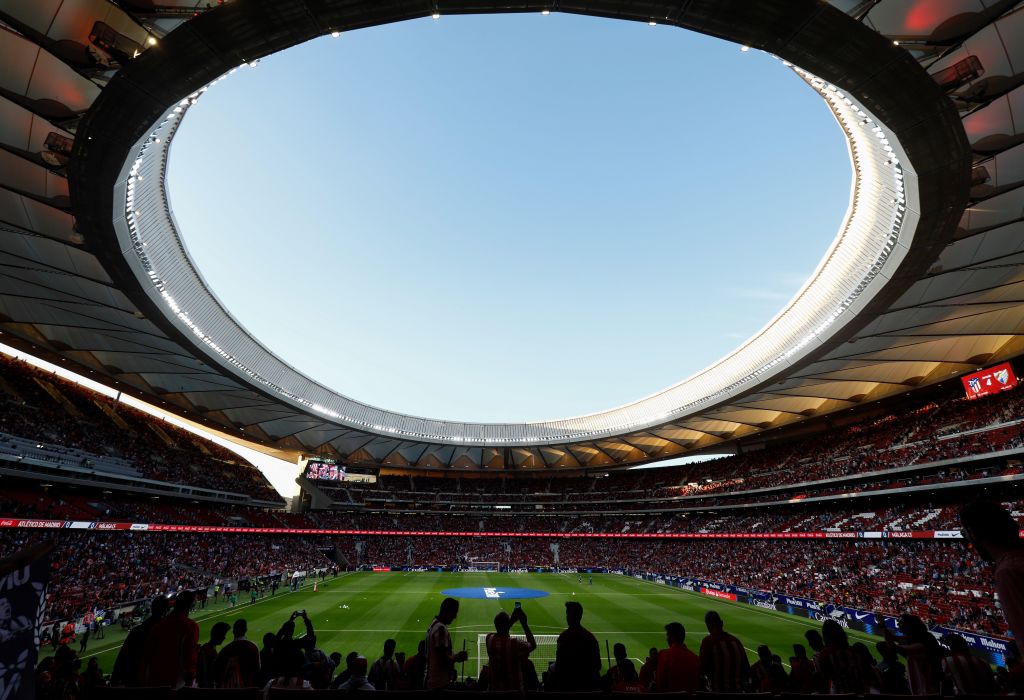
📍 Madrid, Spain
🏠 1994
🏟 70,000
Atletico Madrid's Vicente Calderon was the first all-seater stadium in Spain, with views of the Mazanares river running past and curiously, a dual carriageway literally rumbling under one of the stands. It was going to take something special to convince them to leave.
With sprawling stands that almost burst out beyond the roof and a fervent atmosphere cooked up from Diego Simeone's siege mentality, the Metropolitano is everything great about modern Spanish football. It's stunning to look at, too, with the roof curving over the main structure like a sheet of icing over the edges of a cake, while the ceiling is lit up red at night, but stays bright during the day.
And as with most hotspots, it's the ones that tourists don't flock to that tend to be the more authentic experiences. The crowds tend to be louder at the Metro than either Barça or Real as a result – given that there aren't as many day-trippers. It's a well-kept secret of sorts… and dare we say it's better than the Calderon? – MW
12. Santiago Bernabeu Stadium
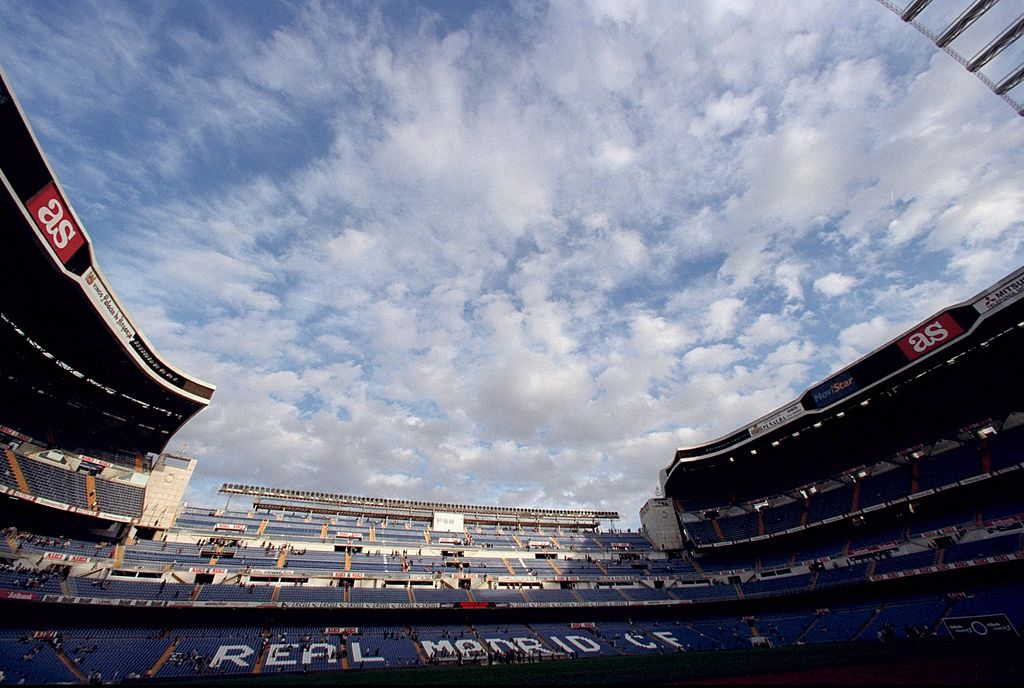
📍 Madrid, Spain
🏠 1947
🏟 83,186
If the Santiago Bernabeu were to suddenly transform into a walking, talking human being – something that would probably provoke an alarmed front page or two in Marca – then Real Madrid’s home would be Albert Einstein.
The most iconic images of the dimension-chasing physicist are of an ageing gentleman, dishevelled and unkempt. There may even be a hint of a few non-visits to the laundry. That’s also the immediate impression of the Bernabeu gained by its hundreds of thousands of tourists every year – pilgrims who emerge from the metro outside of the stadium, and set eyes on the Bernabeu for the first time.
'Dangerously dizzying' is one of the best descriptions of Madrid’s home when standing at the very top of the wrap-around top tier. There is always the feeling that one topple down the stairs would end with a 20,000-foot tumble onto the substitutes warming up far below. It’s no wonder it take a few months before vertigo-suffering new season-ticket holders feel comfortable enough to make the journey to their seats without clinging to safety rails and openly weeping.
But it is these giddy architectural heights that give the Bernabeu such overpowering acoustics. When a capacity crowd of a little over 85,000 are all feeling the vibe, the sound can barely escape – meaning that the players down on the pitch can barely communicate with each other. – MS
11. Johan Cruyff Arena
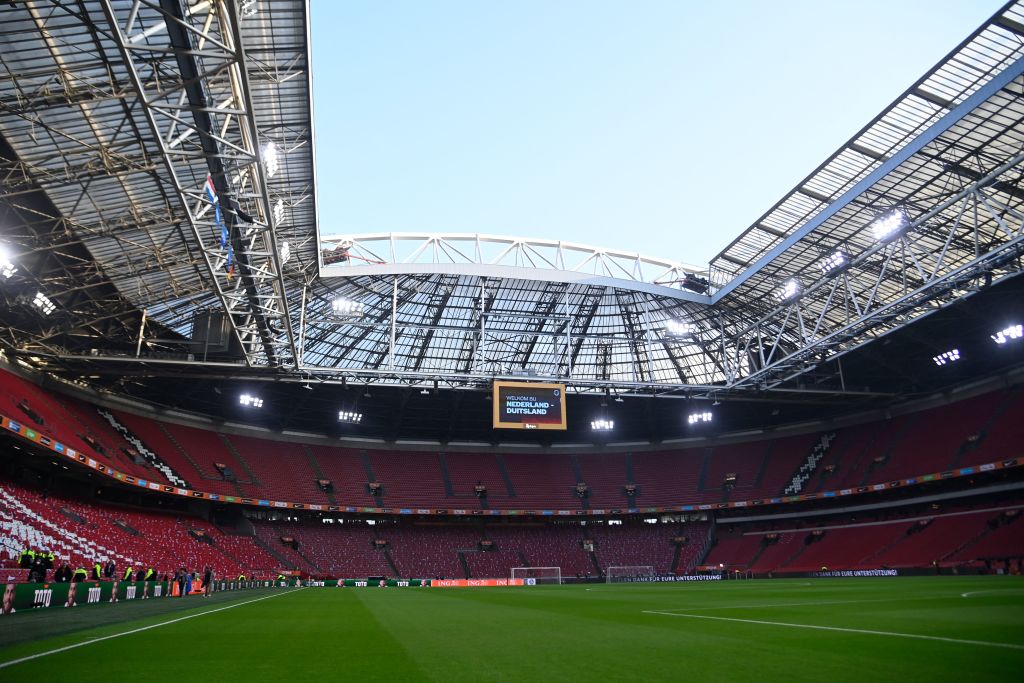
📍 Amsterdam, Netherlands
🏠 1996
🏟 55,865
To put it simply, Ajax’s De Meer stadium was frankly insufficient. The 1930s ground was never particularly big, and with safety concerns its capacity had dwindled to below 20,000. The club had always played their big games at the city’s Olympic Stadium, but clearly needed a more suitable solution.
Costing more than £100m and inaugurated by Queen Beatrix, the Amsterdam Arena certainly fits the bill: retractable roof, amazing visibility (even from lower-tier seats near the corner flag), security cameras everywhere, easy access via public transport, proximity to a tailored shopping mall built in front of the stadium, restaurants with typical and delicious kroketten, and a Skybar named Johan.
A UEFA top-rated stadium, the Arena has hosted the 1998 Champions League Final, 2013 Europa League Final, five Euro 2000 games and the majority of the Netherlands’ recent home games. During construction, Louis van Gaal’s side reached two successive Champions League finals – but that squad was broken up by the Bosman ruling and sales which helped pay the debts, although the fascinating 70-minute tour (€16) will never say so.
History is important at Ajax. The new club museum here quickly became one of the most popular museums in Amsterdam. And since legendary manager Rinus Michels died in 2005, there has been a popular desire to name the stadium after him; the board has refused, but fans keep showing up with banners that read Rinus Michels Stadion. – MM
10. San Siro
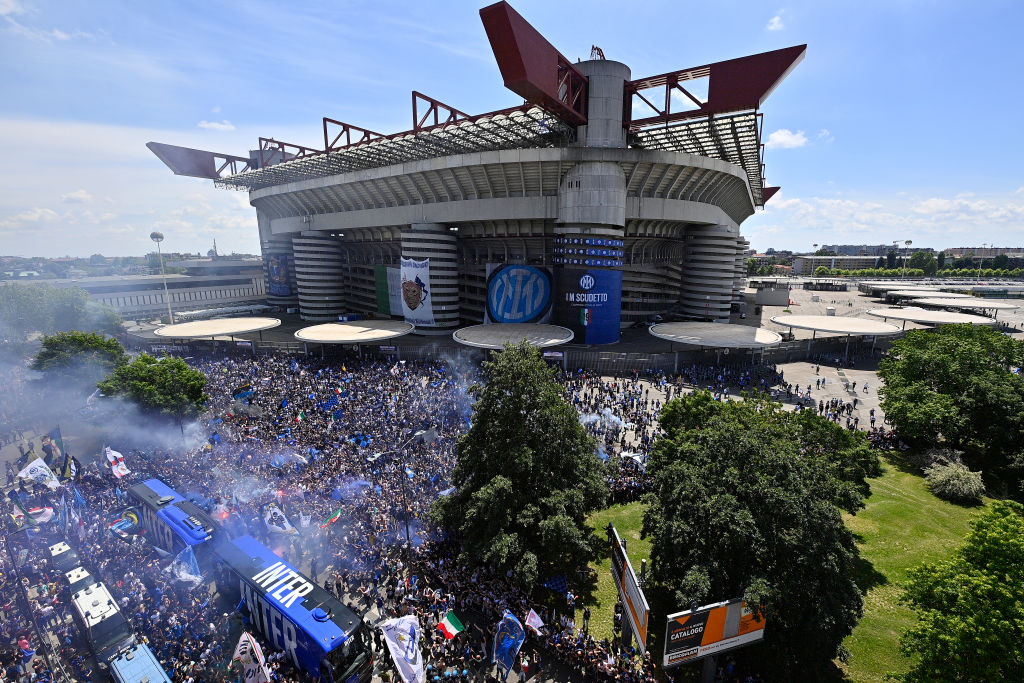
📍 Milan, Italy
🏠 1926
🏟 80,018
Exposed to the elements, Milan has two decaying marvels of incomparable artistic merit in semi-constant need of refurbishment. One is the most studied work of art ever produced, a triumph in perspective that has been in constant evolution since work first began on the wall of the Convent of Santa Maria delle Grazie more than 500 years ago. The other is a football stadium.
Did we just compare the San Siro to Leonardo da Vinci’s high watermark The Last Supper? Yes. If you’ve been there, you’ll understand.
There’s a reason this is Italy’s most loved stadium, home to AC Milan and Internazionale. Set in the city’s leafy San Siro neighbourhood where two-storey houses outnumber the high-rise flats elsewhere, it feels at once a relic and supremely modern.
The stadium itself has been restored and renovated as many times as The Last Supper, too. First conceived in 1925 by Milan president Piero Pirelli, the San Siro was originally intended as an extension of the adjacent Hippodrome horseracing bowl. Yet it’s Italia 90, the tournament that has so shaped the San Siro’s design, that resonates most and offers its enduring legacy.
The San Siro remains on most people’s shortlist of must-visit venues, and unlike many of its Italia 90 counterparts it’s far from crumbling into insignificance, it's still adored. – AM
9. Wembley
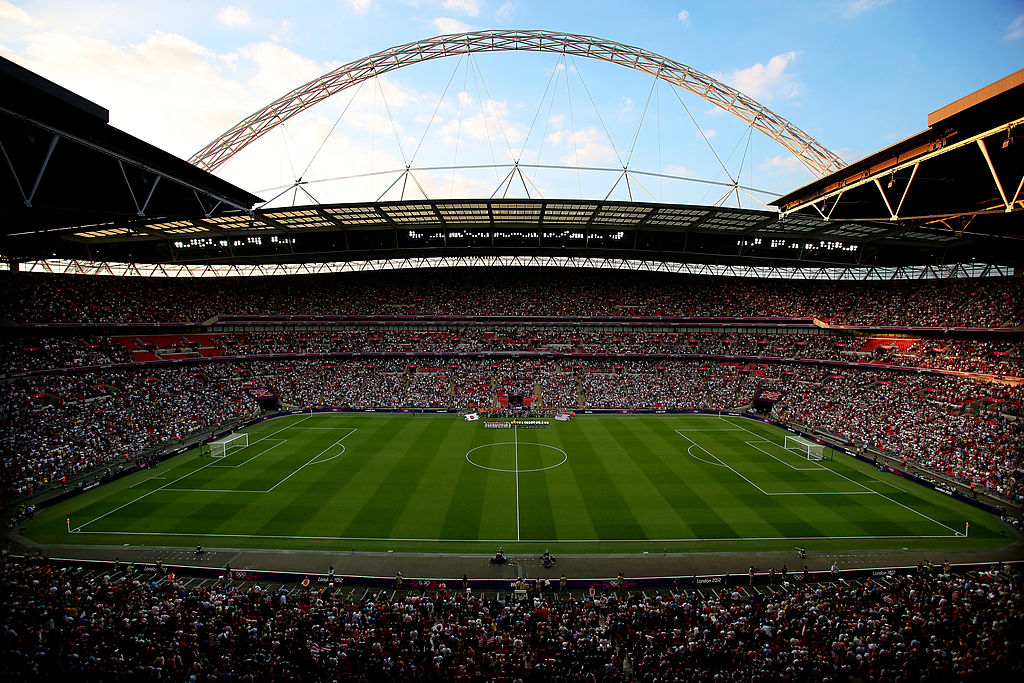
📍 London, Wembley
🏠 2007
🏟 90,000
“Wem-ber-lee” are the three most exultant syllables in the football lexicon. In this context, Wembley is more symbolic than actual. No construct of concrete and steel could fulfil such expectations. But that hardly matters, as Hugh McIlvanney noted in his report on the 1966 World Cup final.
“Wembley has occasions that work a metamorphosis, that make grown men persuade themselves the hideously inconvenient journey from London is an adventure and transmute the undistinguished concrete bowl into a ‘seething cauldron’,” he wrote. FA Cup finals, England internationals – not just that 4-2 – European Cup finals, even Football League play-offs can work that metamorphosis, rendering the distinction between old and new Wembley irrelevant. Bereft of fans and players, such stadia are monuments of purposeless splendour.
Yet the venue’s greatest hero must be tobacconist Arthur Elvin, who paid £127,000 for Wembley in 1927, saving what had become a financially unviable stadium from demolition. The way to stop Wembley going to the dogs, Elvin decided, was to send in the dogs. Greyhound racing’s success paved the way for the staging of speedway, rugby league, the 1948 Olympics, boxing, stock car racing, ski-jumping (with fake snow), and daredevil motorcycling stunts (Evel Knievel crashed at Wembley in 1975, trying to soar over 13 London buses). The one ambition Elvin didn’t achieve as Wembley chairman was establishing its own Football League club.
That was almost a century ago – and look at everything it's hosted since. Think of all the memories. Some say it's overused, diluting a trip to the hallowed turf somewhat. With most countries having their own capitals of football, Wembley’s role had changed even before the demolition of the old one started. The idea may appeal purists but giving the likes of North Ferriby United (the 2015 FA Trophy winners) the chance to play in the same stadium as England ensures the new Wembley remains at the heart of English football. – PS
8. Tottenham Hotspur Stadium
📍 London, England
🏠 2019
🏟 62,850
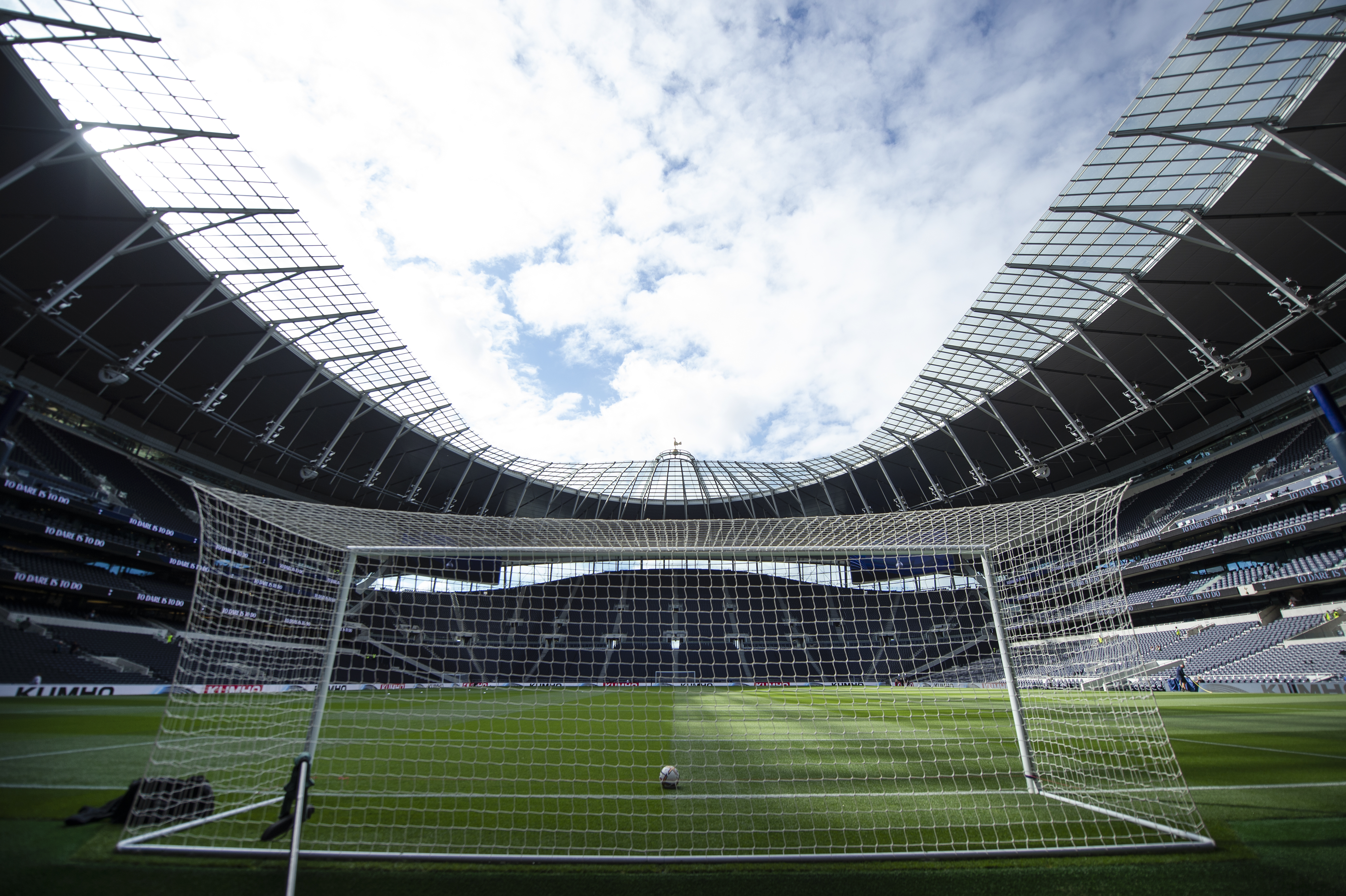
It cost over a billion pounds. It was delivered late. But there's no denying that there is nothing like the Tottenham Hotspur Stadium.
The gadgetry and optional extras dominate discussions to this day: so let's get that out of the way sharpish. Yes, there's an on-site brewery with pint cups which fill from the bottom and gastro bars are dotted around the ground. The football pitch packs itself away in the car park when the NFL comes to town – and there are specific dressing rooms for American football players, too. And you may have noticed that even the screens are mammoth: well, two of them are the biggest in Europe. The hospitality sections are state-of-the-art, as you'd expect; the pitch is lush and the seats are fantastically comfortable.
But where Tottenham have truly delivered far and beyond is in the giant kop end: it towers over London and is held by two giant tree-like beams, like Atlas's bare hands holding the sky aloft over the population. The concert-hall acoustics, enclosed corners and placement of the stands create a wall-of-sound effect: useful, for example, on Beyonce's recent Renaissance tour – or when tens of thousands of Lilywhites boom that the Spurs are marching in.
No one has built something quite so ambitious in the beautiful game: not even Bill Nicholson. The scale and grandeur of the thing is utterly breathtaking. And as the crown jewel of a redevelopment project in a corner of north London that was rioting 12 years ago, it's rooted firmly in its community; architecturally, in the fan experience. Yes: it was fully and utterly worth every penny and second that Tottenham spent and waited. – MW
7. Camp Nou
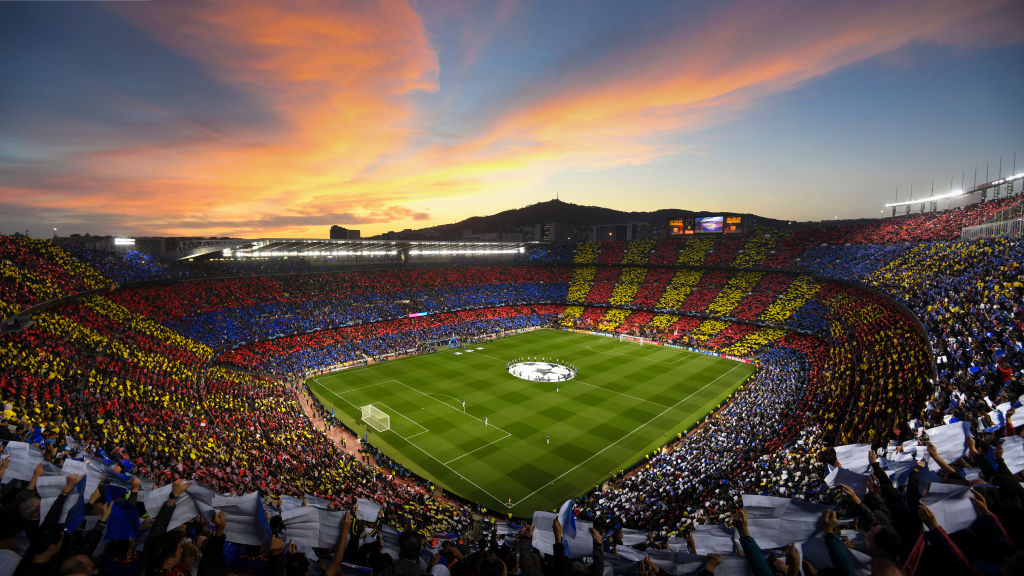
📍 Barcelona, Spain
🏠 1957
🏟 99,354
On June 1950, Barcelona bought Laszlo Kubala – and changed forever as a result. So good was the Hungarian forward, so many goals did he score, so much hope did he bring to a tortured region, that within four years a new stadium had to be built to accommodate all the fans who wanted to watch Kubala.
In an era when the Guardia Civil – the armed division of the Spanish police responsible for maintaining Francoist order, even through assassination – could arrest somebody for speaking Catalan in public, the Camp Nou became the only place where the regional language could be heard, out of earshot of the despised triangular-hatted authorities. Cheering the home side in their shiny new stadium – which celebrated two Liga titles in its first three seasons – was the most common expression of anti-Franco protest.
Yet the atmosphere and sense of occasion for big games, helped in the last 35 years by a footballing philosophy seldom replicated anywhere else in the world, never disappoints. Come Clasico day, everything from pig’s heads to whisky bottles and enough loose change to finance a revolution will be found pitchside. The pre-game recital of the club anthem – which ends with a guttural “Barça, Barça, Baaaaaaaarça” – adds pomp and ceremony to the cavernous bowl.
If Barcelona are més que un club, then this has always been més que un estadi: more than a ground. – AM
6. Azteca
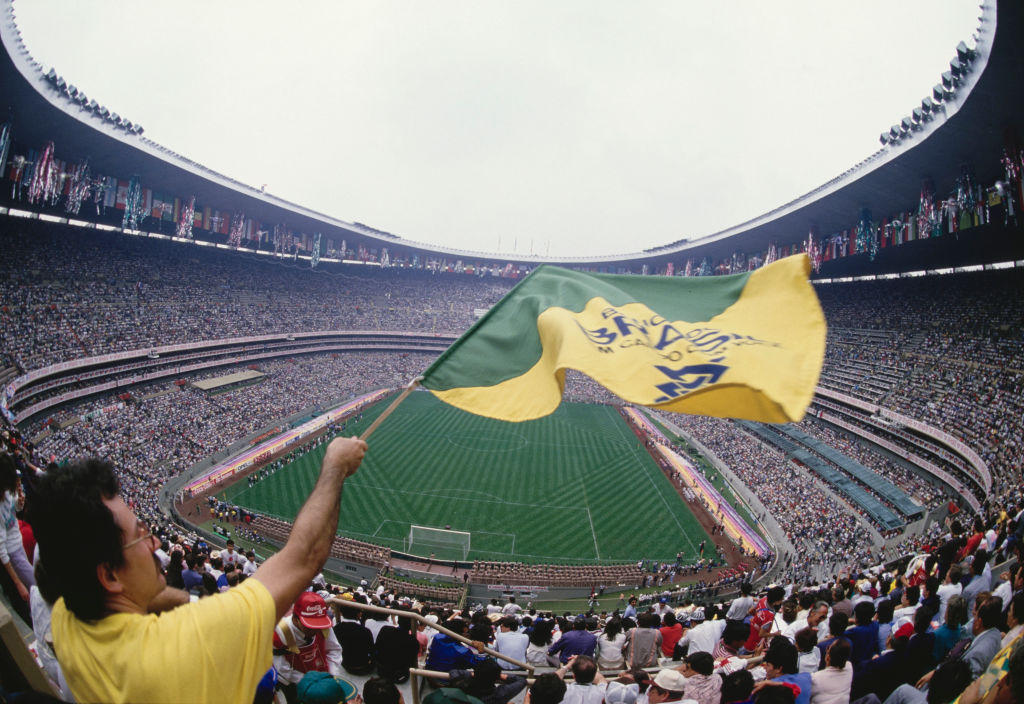
📍 Mexico City, Mexico
🏠 1966
🏟 87,523
Besides being a giant, the imposing Azteca is also famous for becoming an eyewitness to history. No other ground can claim to have been present when the sport’s two most celebrated protagonists pulled off their greatest miracles. Shakespeare said that all the world’s a stage and all the men and women merely players; the planet’s two finest footballers had their finest hours centre stage at Azteca.
Pele’s stunning athletic superiority could be seen at his peak here in 1970, as he led one of the best teams of all time, the one that included five No.10s revering the ball at all times; 16 years later, Diego Maradona’s brilliant dribbling also brought Azteca to its 230,000 feet. “And it wasn’t a pleasant experience, mind you,” complained Maradona years later. “Playing here at noon – it’s devastating, and the grass was in awful condition.”
The stadium is built on lava ground of the extinguished volcano Xitle; about 60,000 square metres were blown up with explosives in order to level the land and start the construction, in 1962. The project figures are also impressive: 12 architects working together, with 34 engineers, 15 technicians and 800 workers, day in, day out, until its completion.
And even the country’s greatest rivals are taken in by the love of it. Questioned by Mexican journalists angry at the impossibility of playing the derby against the USA on home soil, Jurgen Klinsmann happily admitted, “I would have preferred to play at Azteca, rather than in Pasadena, that’s true. It’s an amazing stadium.” – MM
5. Estadio Monumental
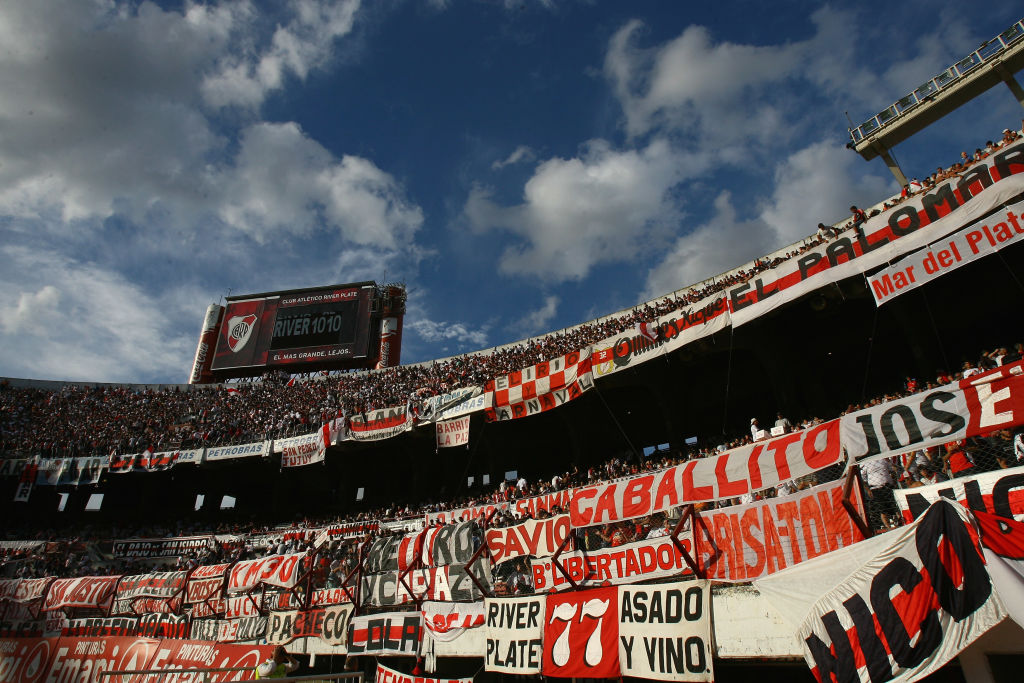
📍 Buenos Aires, Argentina
🏠 1938
🏟 86,049
There are several stadiums in Latin America known as Estadio Monumental, but this is arguably the best-known. Officially the Estadio Monumental Antonio Vespucio Liberti (after a club president), it was initially known as the Horseshoe when funds ran out before the north side was constructed.
That was when the gates first opened in 1938, and although the horseshoe was filled in, to be quite honest it could do with an upgrade in certain areas. But the fans don’t care: for a ground with no roof and an athletics track, the atmosphere – especially for the Superclasico against Boca Juniors – is truly superb, despite its capacity being barely half of what it once was. It remains Argentina’s biggest stadium and River Plate fill it with home fans due to the current away fan ban throughout the country.
At the 1978 World Cup it hosted nine matches, including the final in which Argentina beat Holland on a pitch covered in ticker-tape. Paul McCartney, Madonna and Michael Jackson, to name but a few, have played there over the years, but no tacky Tom Hark goal music is required here: celebrations are firmly taken care of by Los Millonarios’ fans. – JF
4. Ibrox
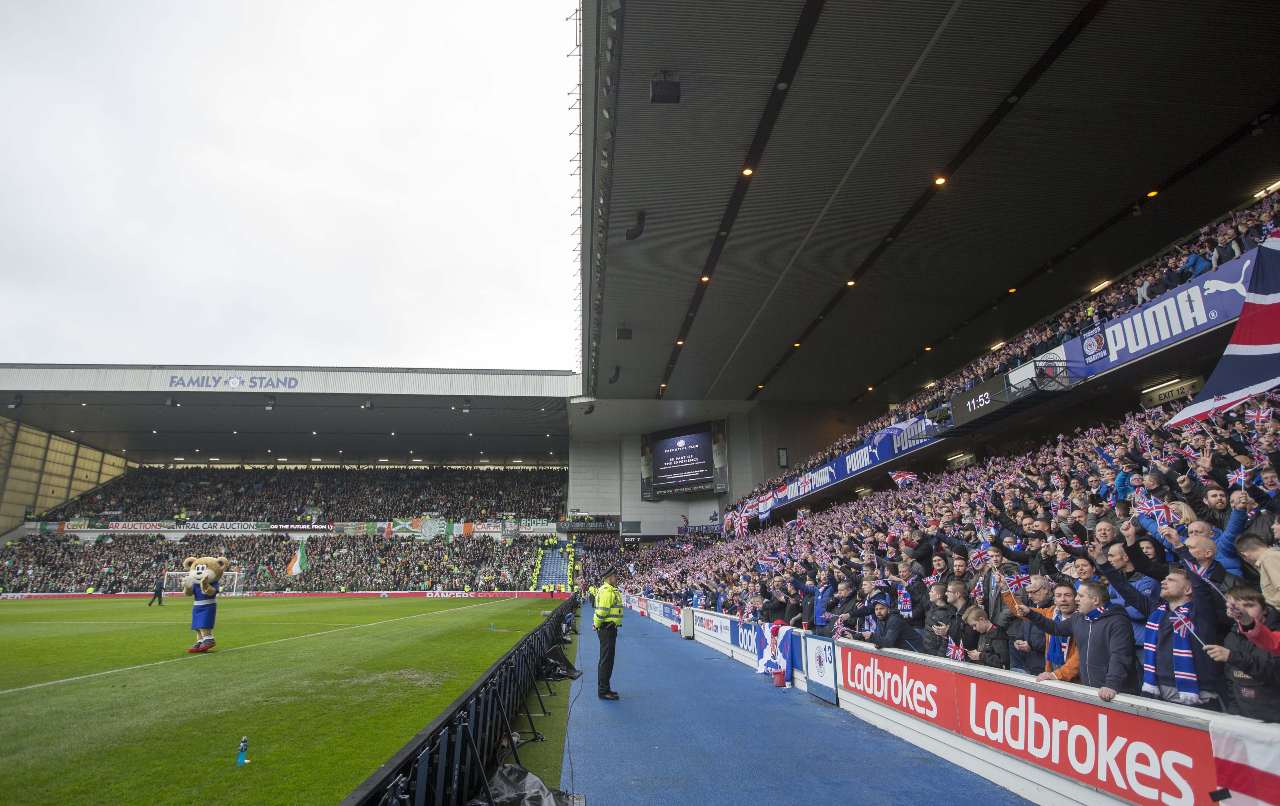
📍 Glasgow, Scotland
🏠 1899
🏟 50,817
A British record-holder – 118,567 Glaswegians gathered here for a 1939 Old Firm clash, more than for any other league match on these islands – Ibrox was one of several in the UK designed by Archibald Leitch and has hosted visitors as disparate as King George V and Frank Sinatra.
Ibrox – it means “badger ford” in Gaelic – may have housed a Scottish fourth-tier club more recently than a top-flight team but Rangers have won 52 of their 54 league titles at the venue, which can produce an atmosphere unrivalled by most British stadiums… particularly on derby day.
Following a disaster in 1971 when 66 people were crushed to death – 69 years after 25 died when a wooden stand collapsed – Ibrox was radically redesigned, its wide terraced bowl replaced by 1981 with three rectilinear all-seater stands, based on Dortmund’s Westfalenstadion.
Even so, the club retained the main stand, a Category B-listed building with a grand exterior, retaining an air of history at the home of one of the world’s most successful clubs. – CF
3. Signal Iduna Park

📍 Dortmund, Germany
🏠 1974
🏟 81,365
An opportunity arose when West Germany was awarded the 1974 World Cup. Dortmund applied to become a host city, knowing there would be considerable state funds to construct new stadiums. But when the city fathers received the German FA's requirements for World Cup grounds, their hearts sank. The DFB demanded a running track, a minimum capacity of 60,000 and at least 30,000 seats. Such a ground would cost 60 million Deutsche Marks (then the equivalent of £7.5m) – way too much for Dortmund, even with government support.
And so the city came up with a plan for a no-nonsense, functional and pre-fabricated ground that could hold 53,600 (more than 37,000 of them on two large but modern, safe terraces). It would, of course, have no running track and cost only 33 million Marks. The DFB was underwhelmed: Cologne, the country’s fourth-biggest city, got the nod instead – but when Cologne had surprisingly withdrawn its World Cup application due to escalating costs. With the tournament less than three years away, the DFB had no choice but to give Dortmund the green light.
At one stage, Dortmund seriously considered turning both the borth and south stand into seated terraces, in line with UEFA's all-seater rule: ultimately, the club made the terrace even bigger. BVB bought the stadium from the city and added tiers to all four stands between 1996 and 1998. The Sudtribune, which soon came to be known as the Yellow Wall, now held 24,454 and was the largest terrace on the continent. Now look at it: a legend in the European game and a quintessentially German experience.
All's well that ends well. Signal Iduna Park has since become such an iconic destination that it's estimated that the old ground attracts more than a thousand fans from England to every game. It’s not just people from Dortmund that have a special relationship with the ground. – UH
2. Maracana
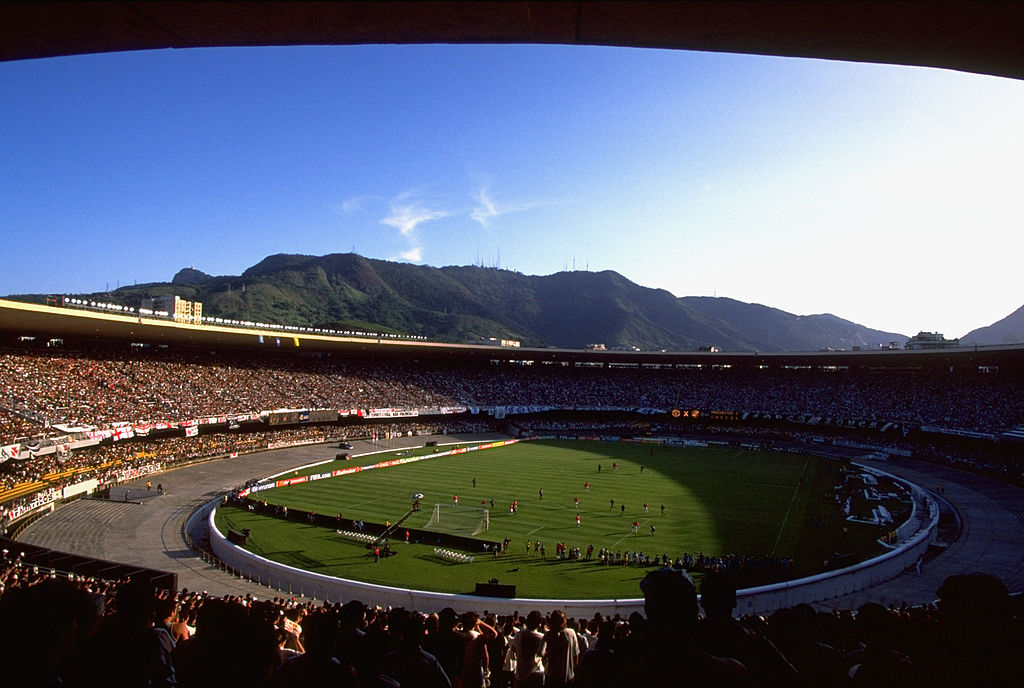
📍 Rio de Janeiro, Brazil
🏠 1950
🏟 78,838
A synonym for grandness, Maracana has every right and credential to feel it is the greatest stadium in the world. No other football ground can claim to have received almost 200,000 paying spectators in one game. The 1950 World Cup final game against Uruguay set that record, almost matched by the 194,603 who came for the 1964 Carioca derby between Rio’s two most popular clubs, Flamengo and Fluminense.
If Brazil’s passion for football is known worldwide, it’s partly thanks to this football shrine that became a symbol of exquisite football perfected under dancing crowds, in competitions from the Carioca tournament, the Brasileirao, Copa Libertadores, to the World Club Championship, Confederations Cup and World Cup.
It's hard to believe now that the stadium’s location was controversial, to say the least. Congressmen argued over the location for the ring-shaped centrepiece stadium of the 1950 World Cup. In the end, rather than being built in a neighbourhood, the stadium has helped to build a neighbourhood. Now, Maracana is the stadium, the surrounding area and a very convenient metro stop.
Originally built for a World Cup that ended in emotional disaster, and built so badly that it ended in actual disaster, the Maracana has been so extensively rebuilt that it is now barely the same stadium. But it retains its iconic status through its ringed roof, its ambience and its history. And that’s more than enough to pay a visit. – MM
1. La Bombonera
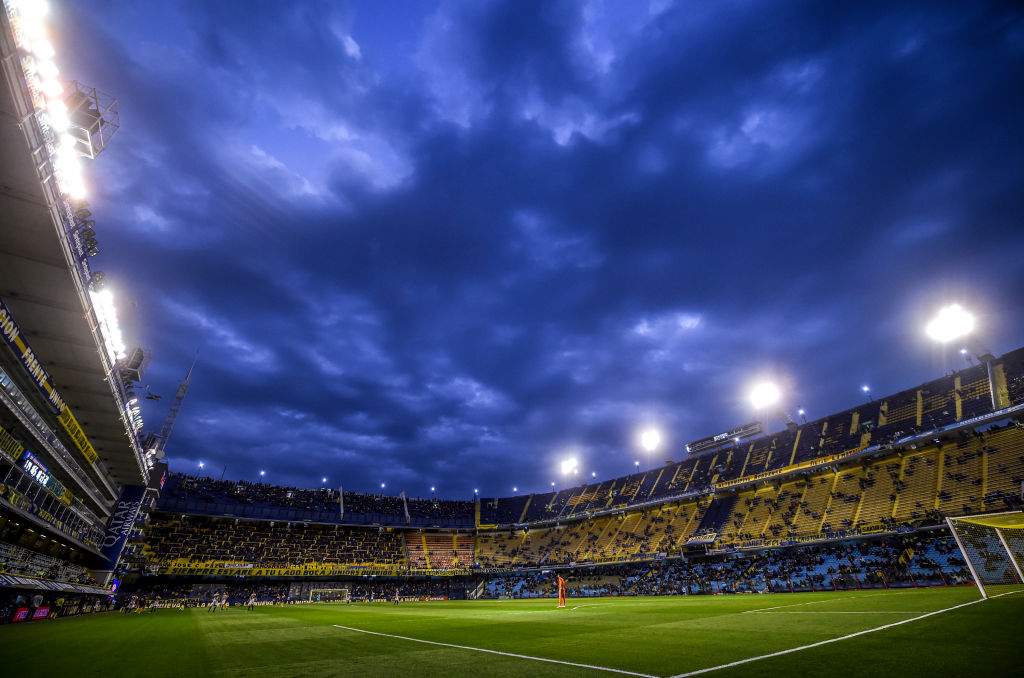
📍 Buenos Aires, Argentina
🏠 1940
🏟 54,000
It’s an architectural wonder, a footballing pilgrimage that all supporters should make at least once in their life. And it came about thanks to a lack of space. The land that the club had for its small wooden stadium, stuck in the middle of the vibrant neighbourhood of La Boca, wasn’t big enough to build a huge concrete stadium for Argentina’s best-supported club, Boca Juniors.
But rather than look somewhere else and face the upheaval of leaving their spiritual home, the club came up with a solution for building a suitably sized stadium on the existing land. Their ambitious plan, conceived in 1934, consisted of three tiers and, with space at premium, a soaring vertical stand made up of seating areas stacked on top of each other.
The result was a distinctive D-shaped stadium with wonderful acoustics, a passionate cauldron that earned the nickname La Bombonera (or the Chocolate Box). The stadium is a temple of world football, according to the admittedly rarely understated Diego Maradona, who played here in 1981, again between 1995 and 1997, and then chose the stadium for his testimonial match where he lined up alongside Hristo Stoichkov, Ciro Ferrara and Davor Suker, among others.
Just watching the Boca crowd, el Jugador Numero 12 (the 12th player), can be worth the entrance fee, even in the dullest of 0-0 draws. Among the seething mass of fans singing and jumping, those standing on the avalanche barriers are the barra bravas, Argentine ultras who run a lucrative sideline charging European tourists for the “adrenaline tour” that allows them to become a Boca ultra for a day.
A popular Argentine saying claims that La Bombonera no tiembla, late: the Bombonera does not tremble, it beats. It’s a living, breathing stadium. The combined effect of the fans singing, clapping and (especially) jumping makes the ground vibrate like a small earthquake.







